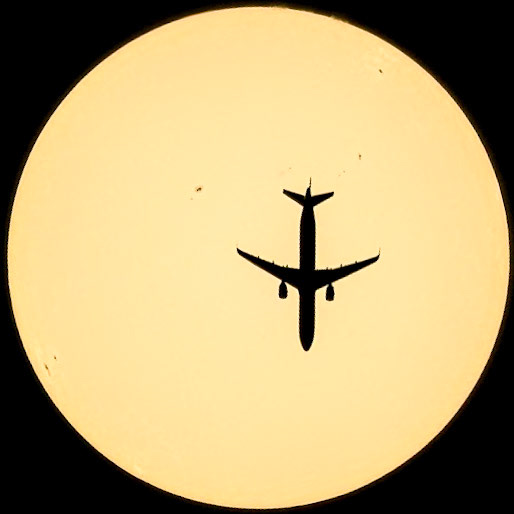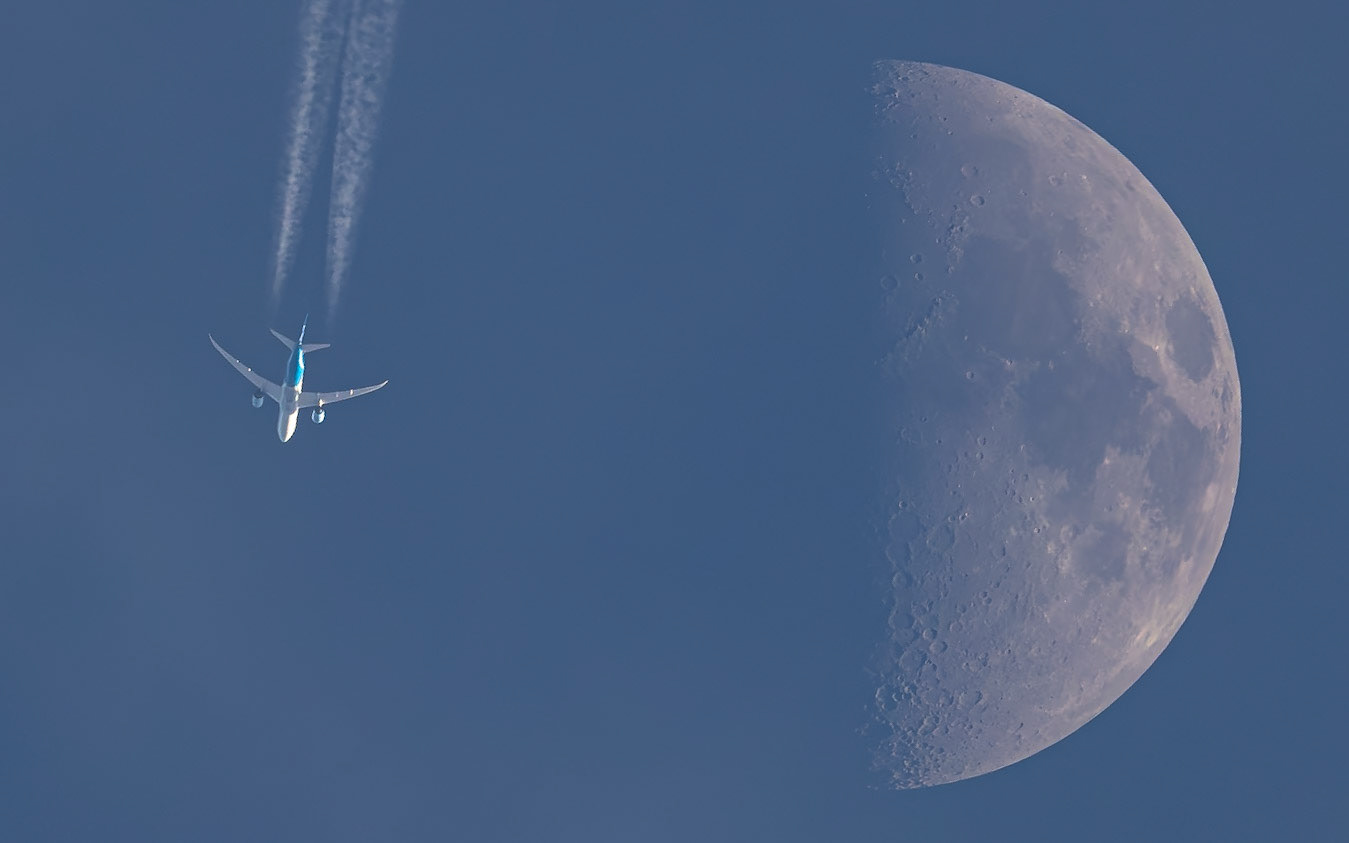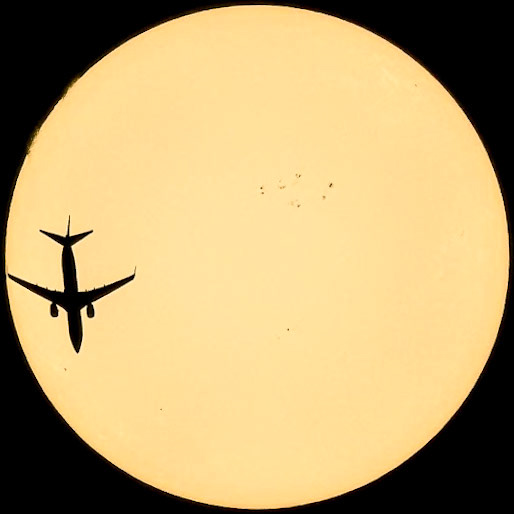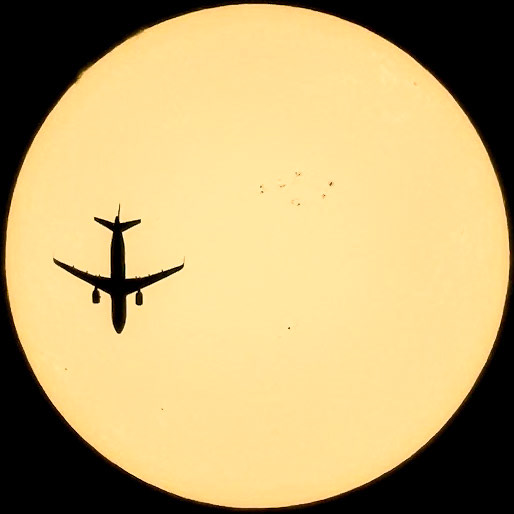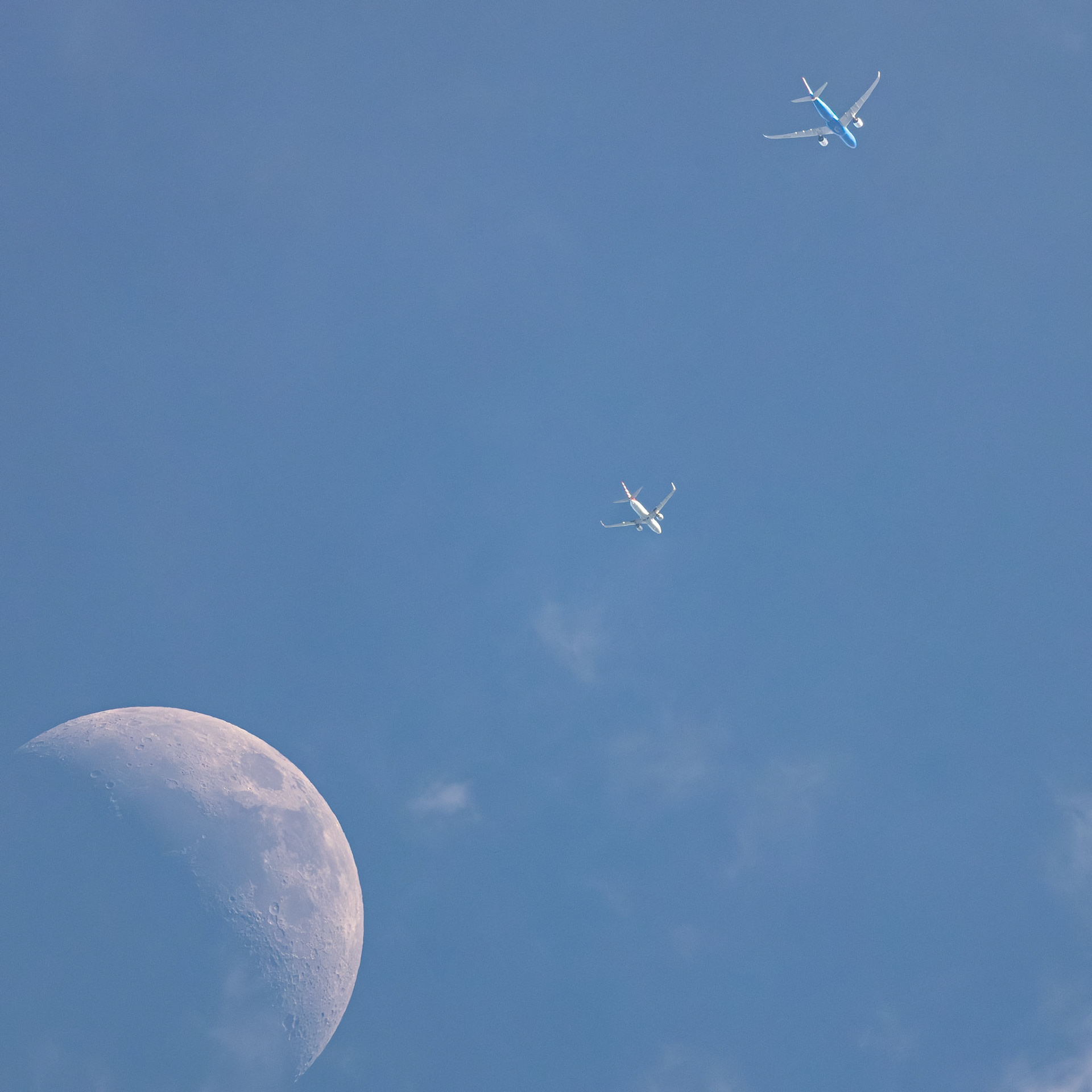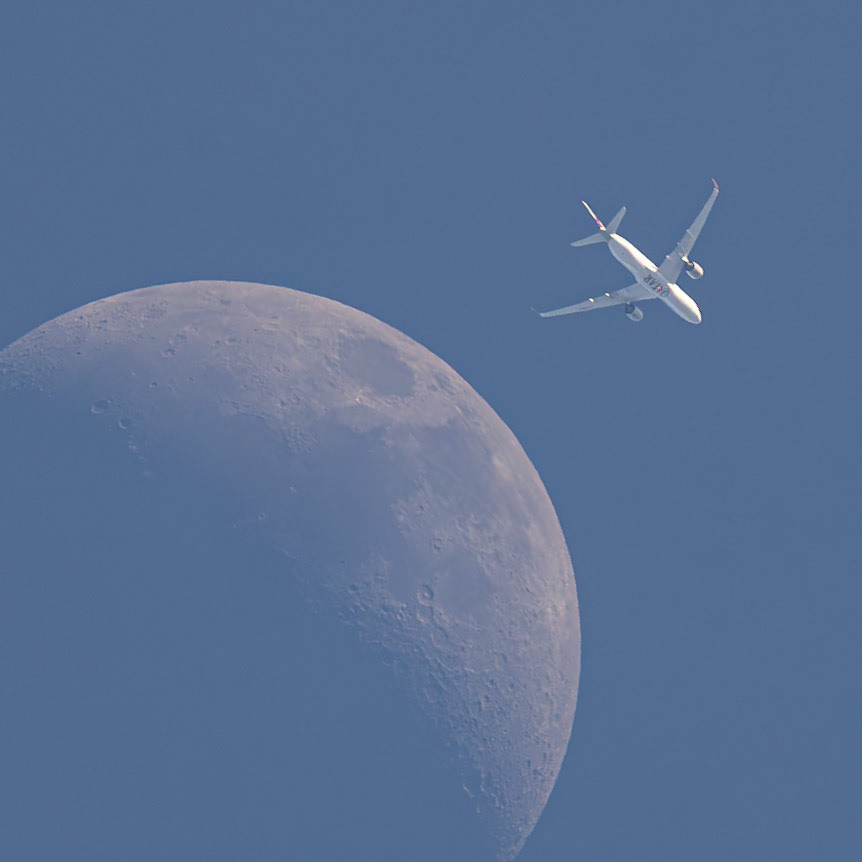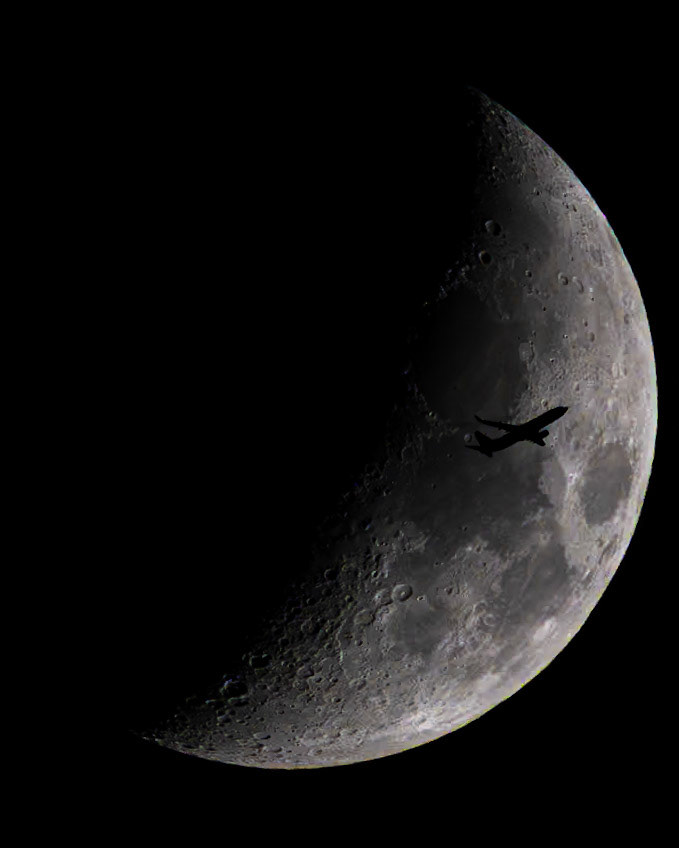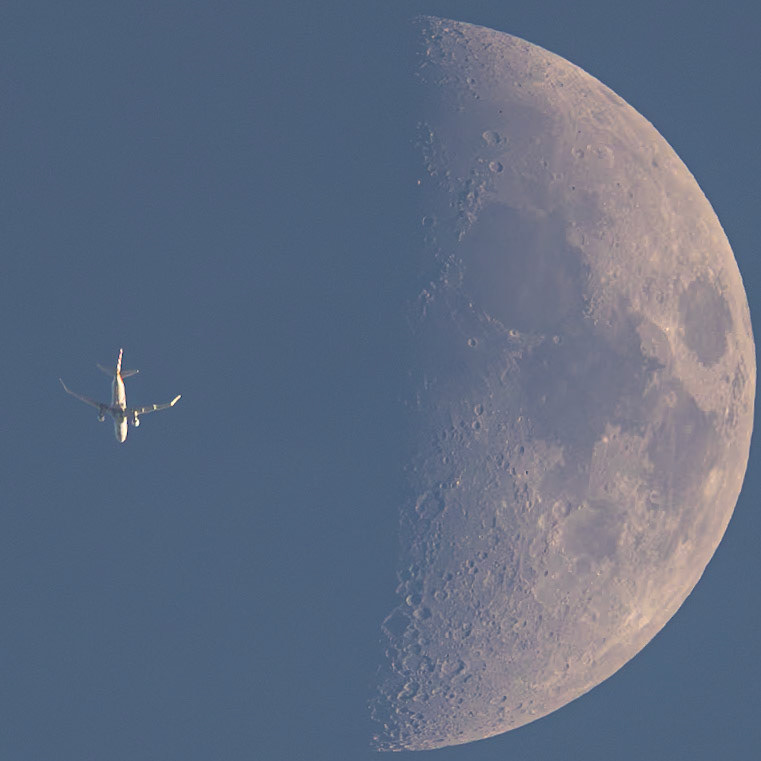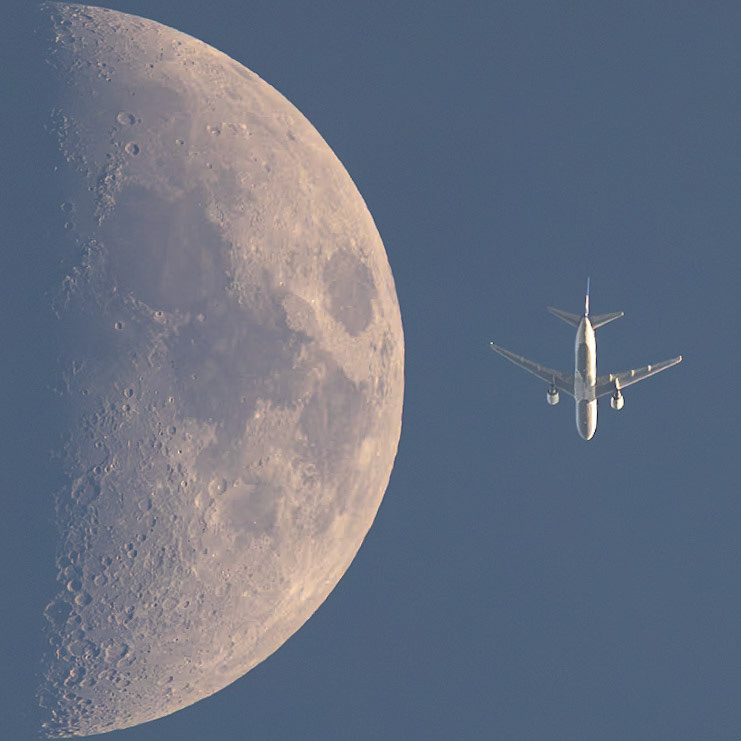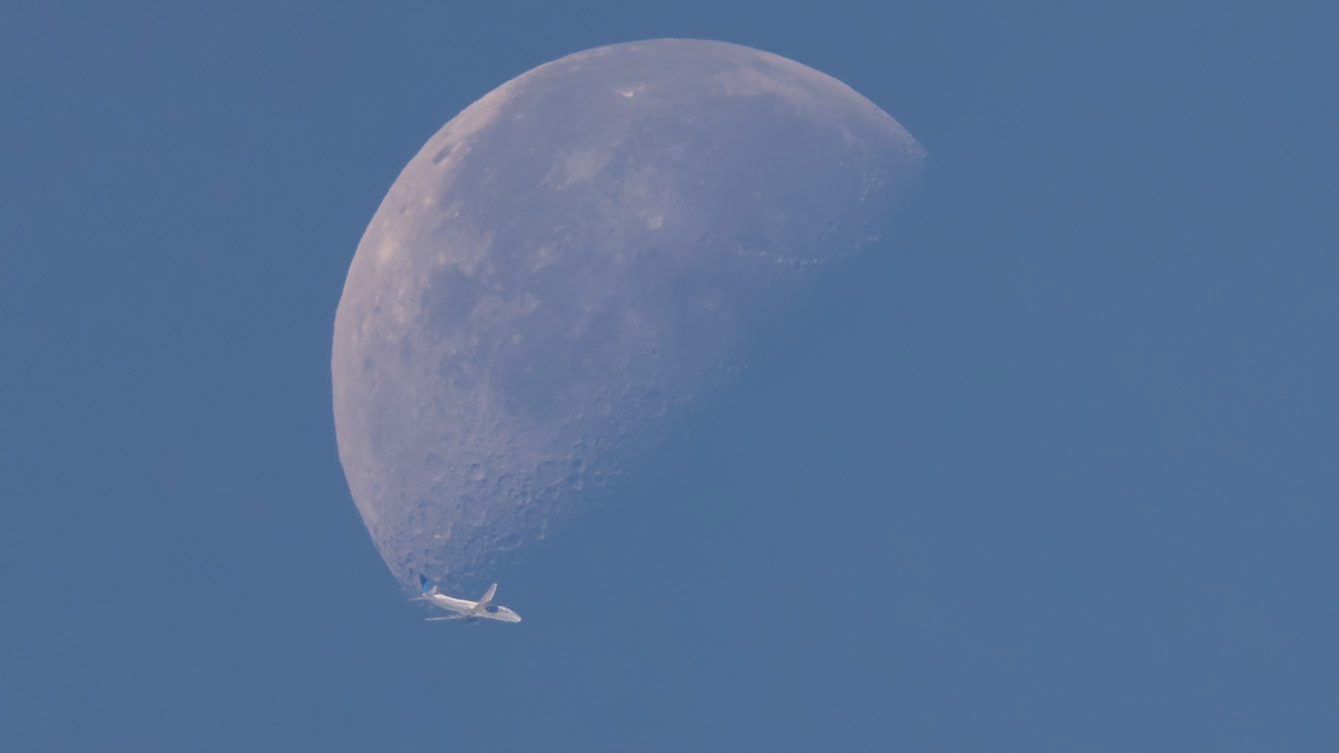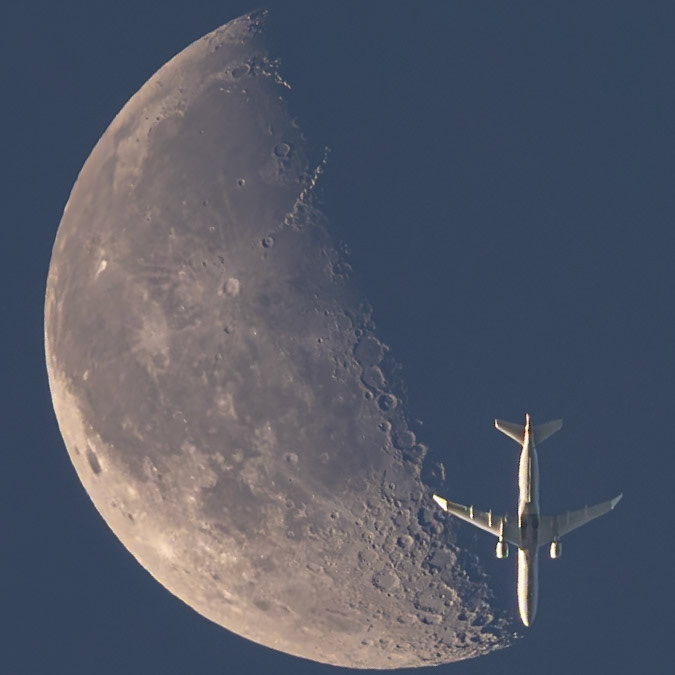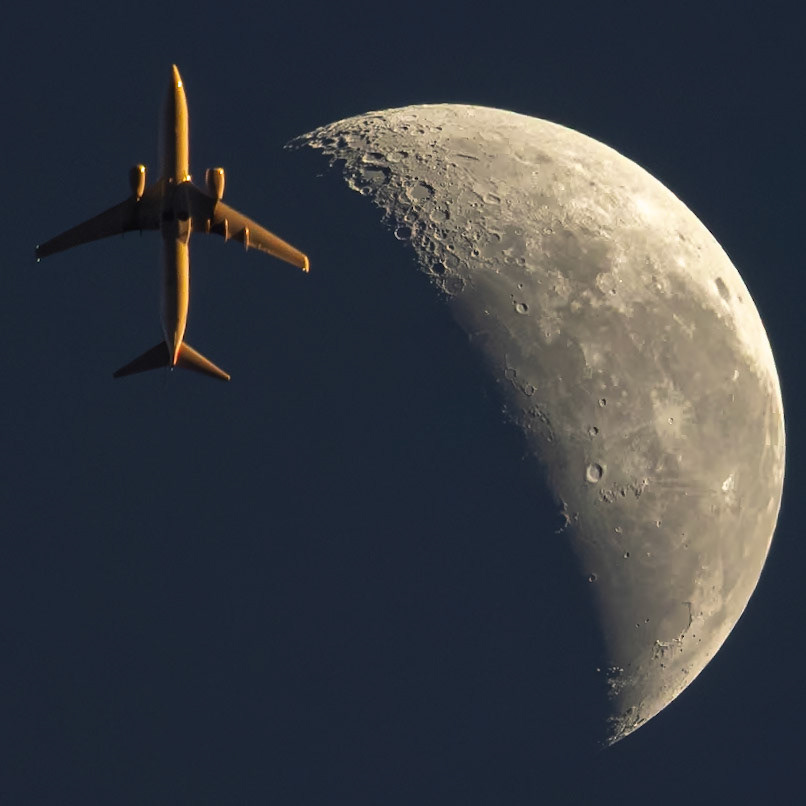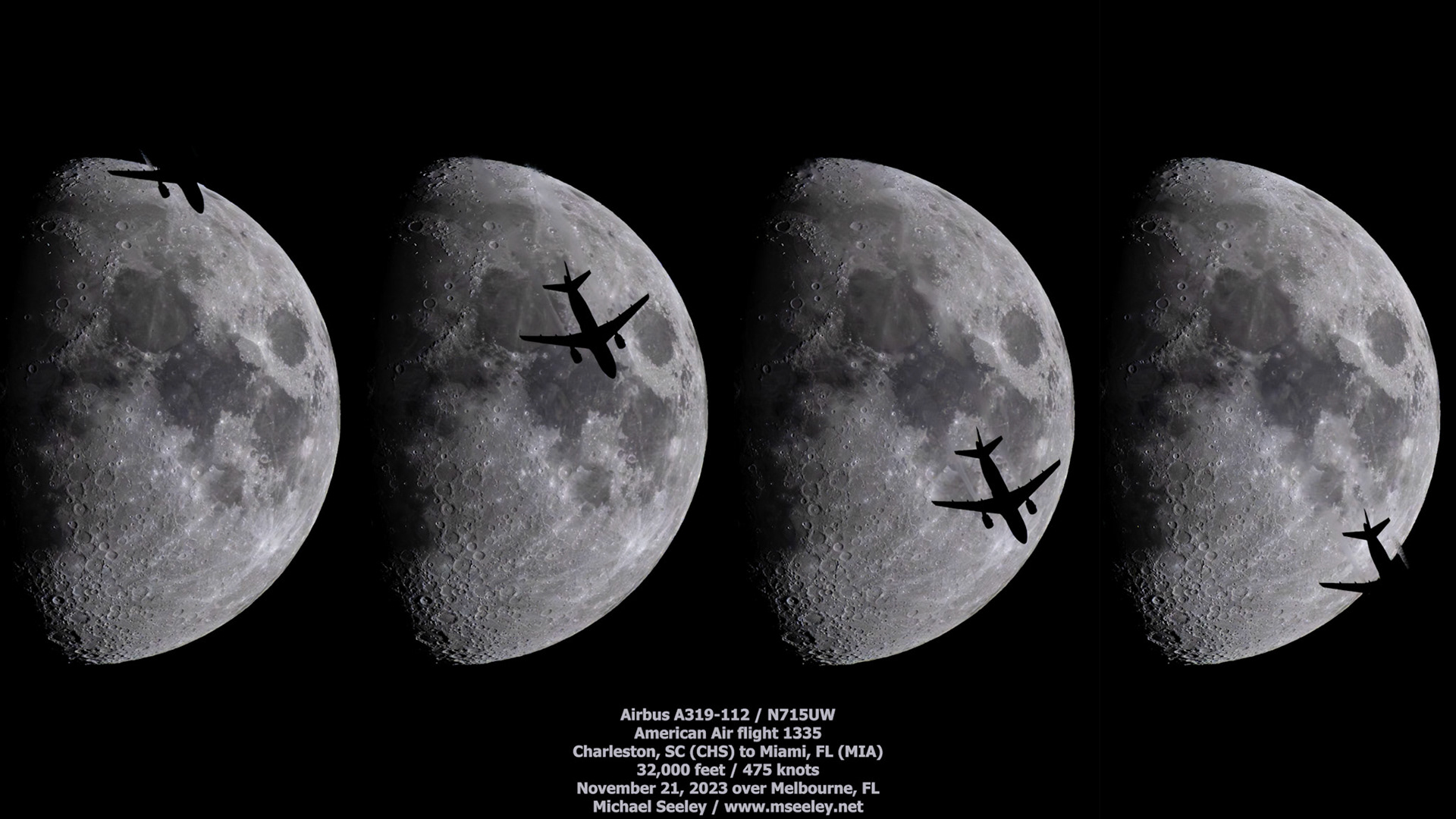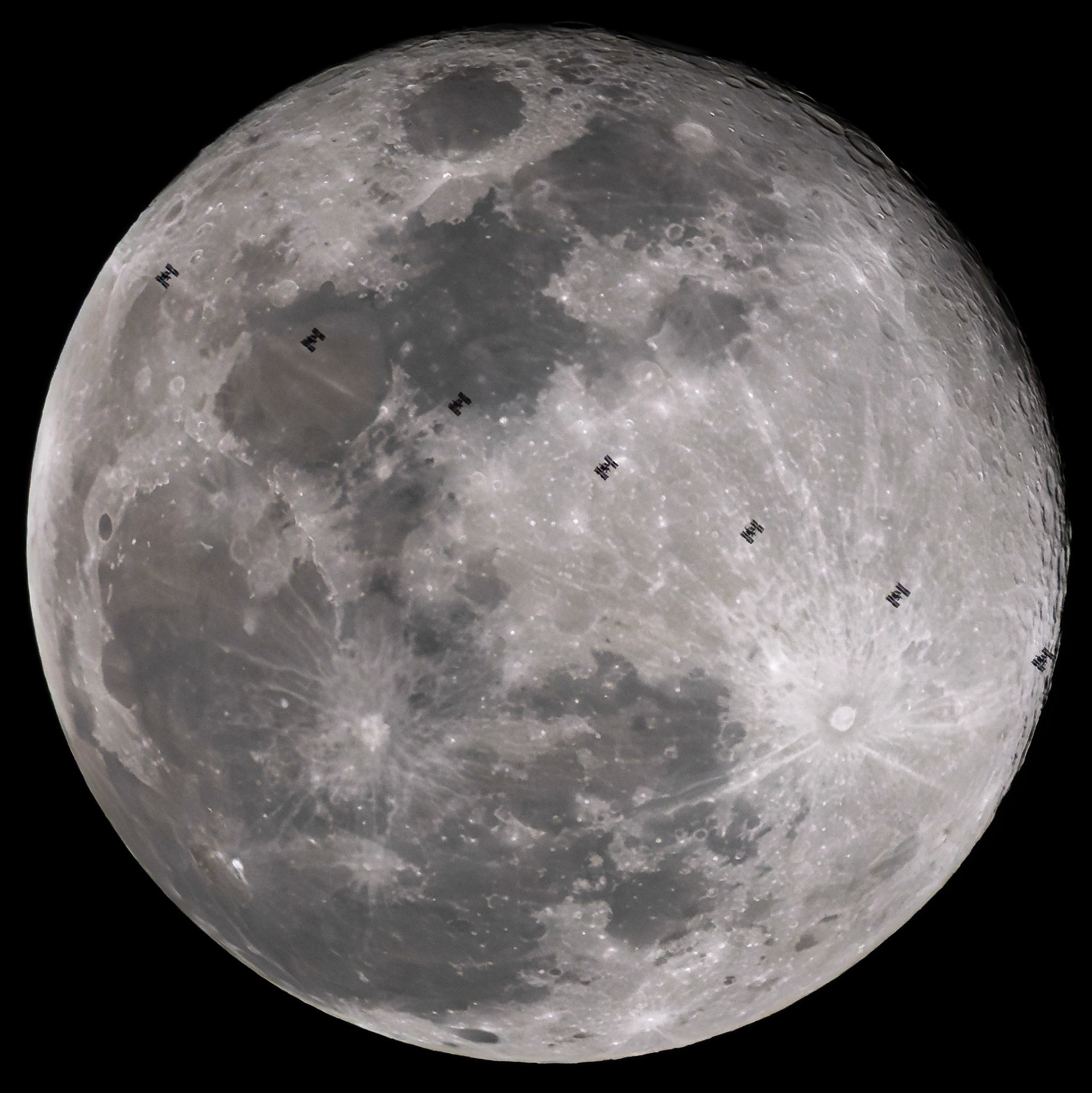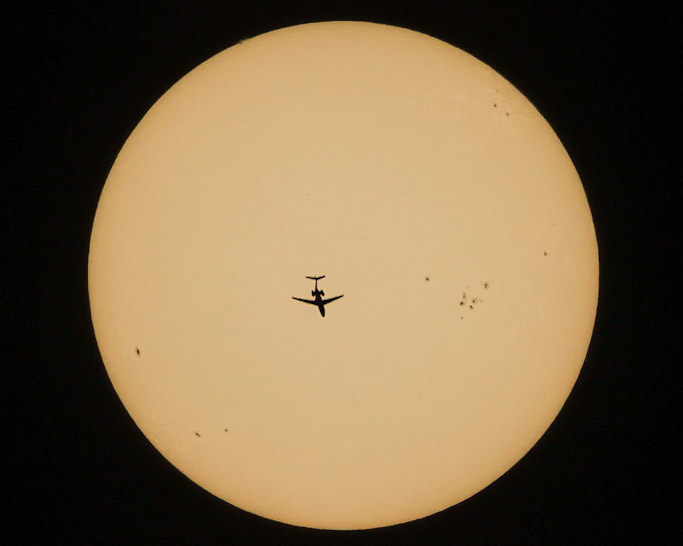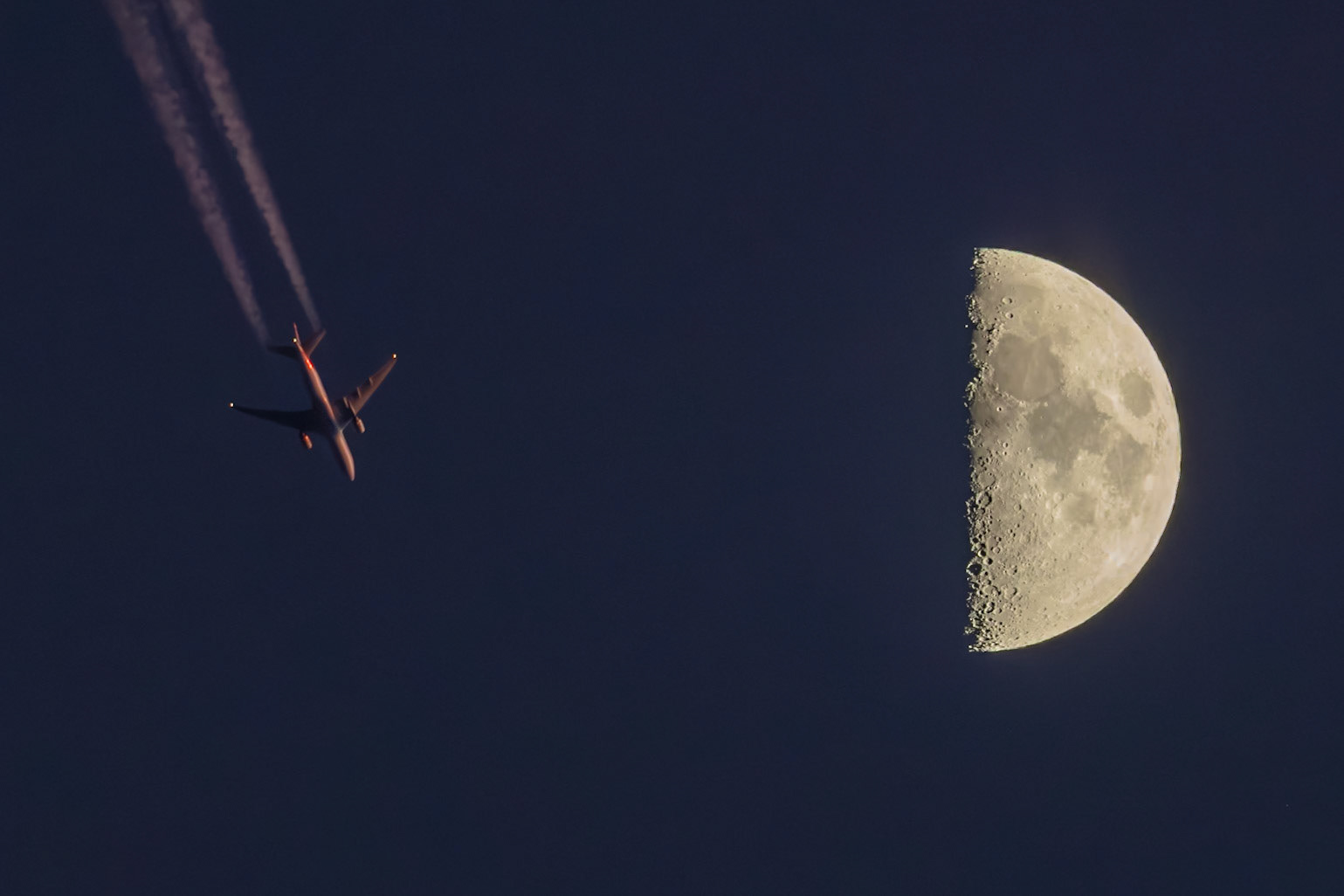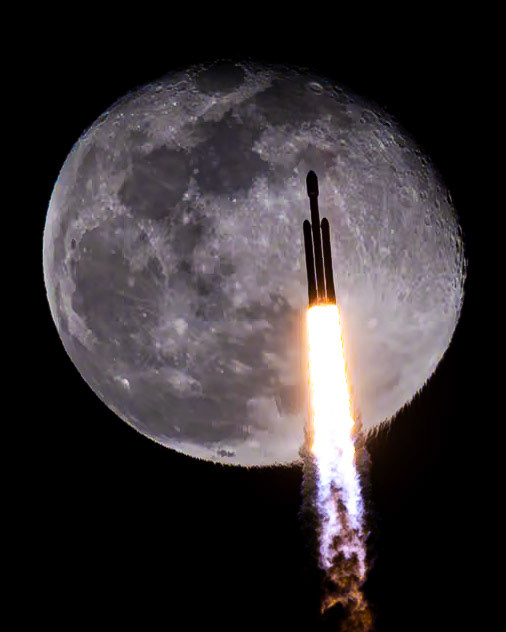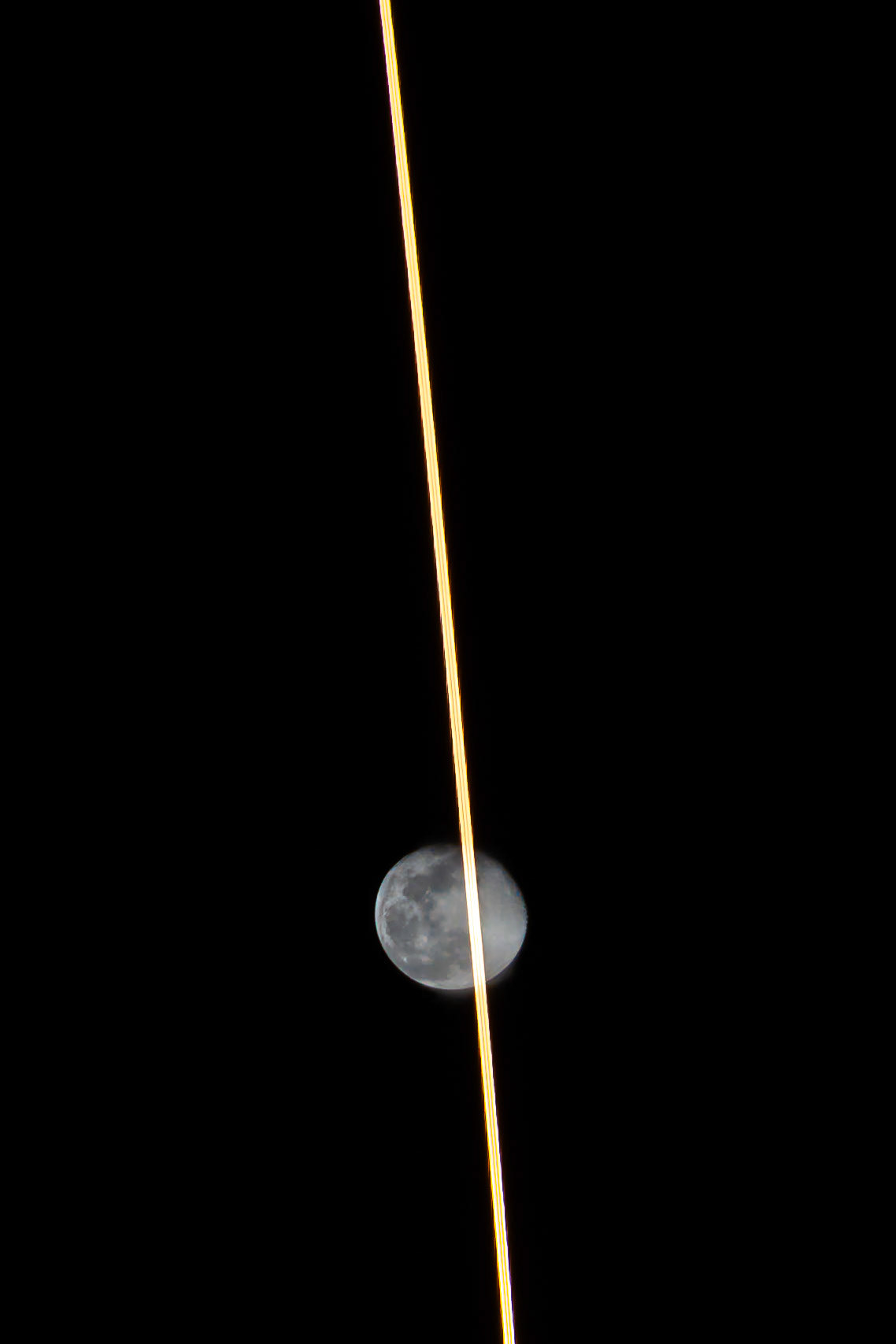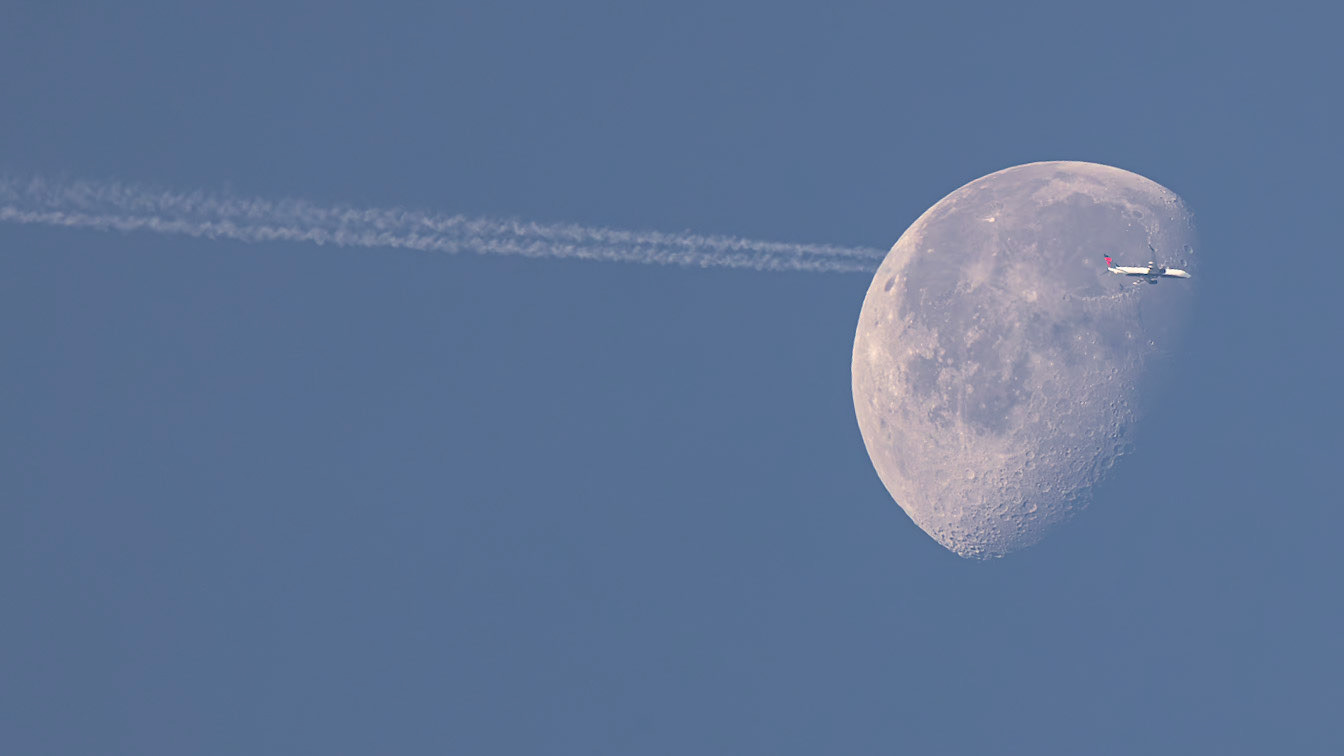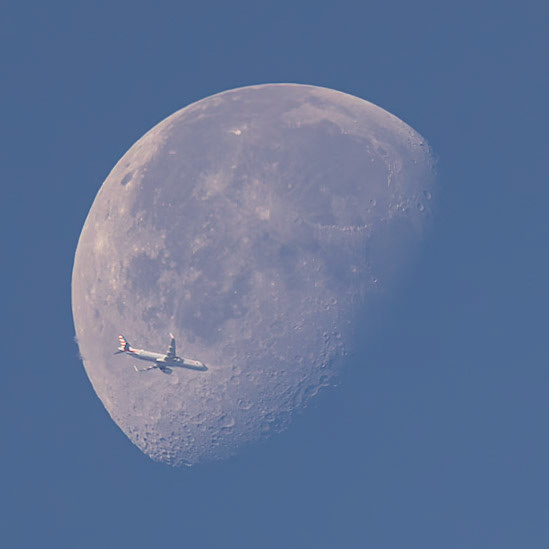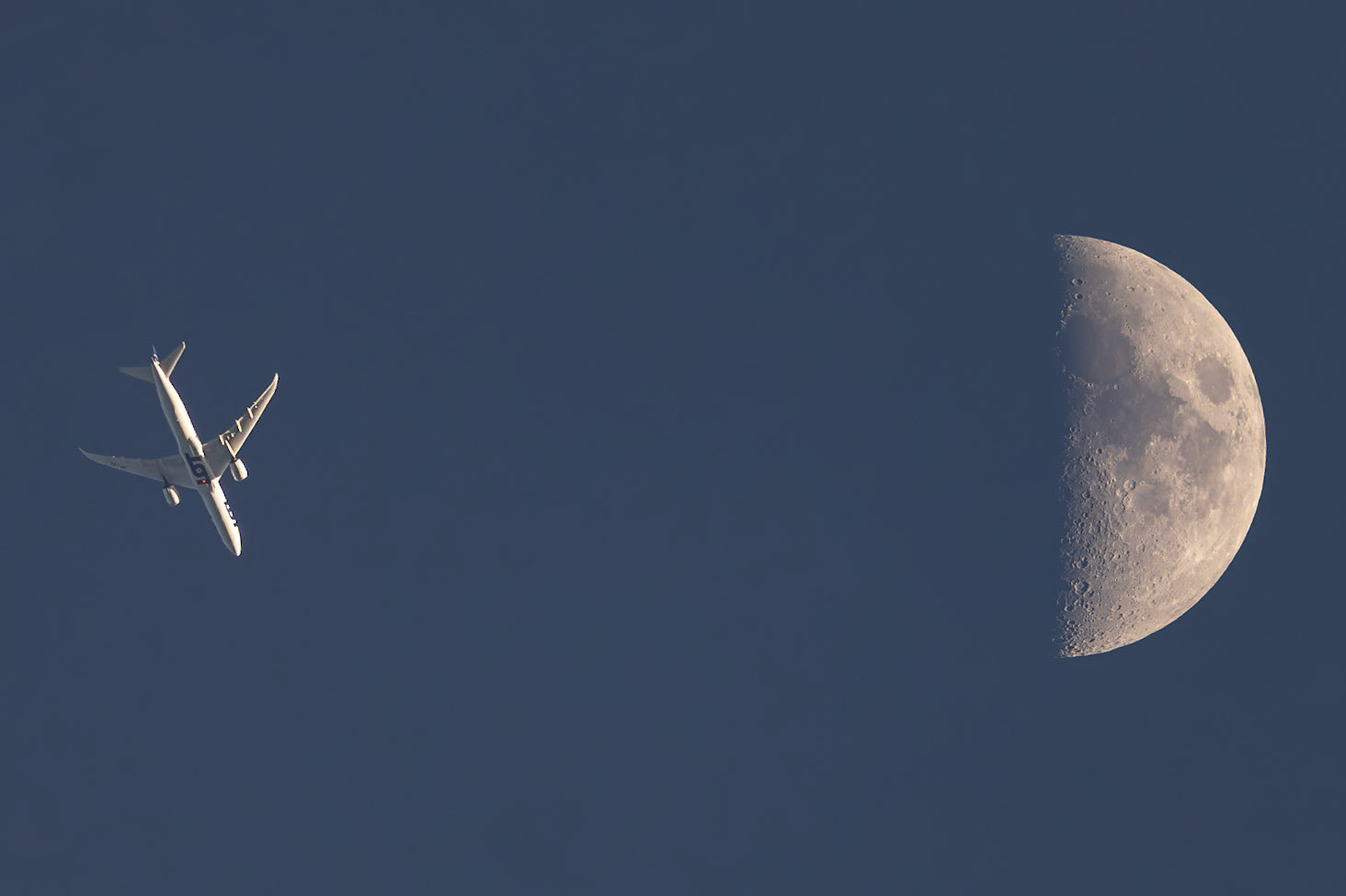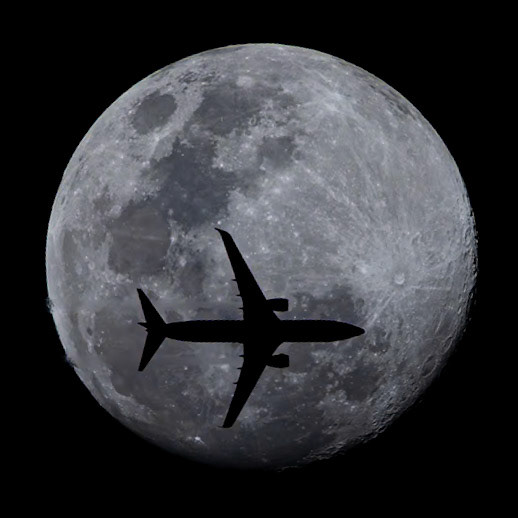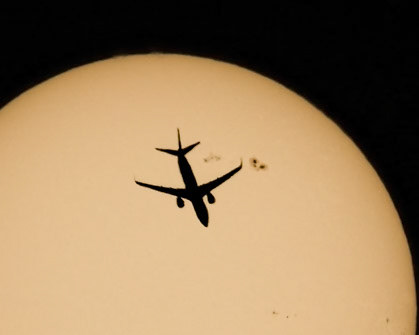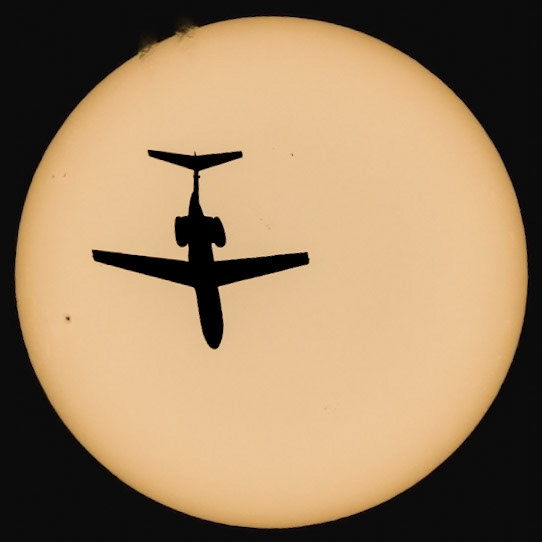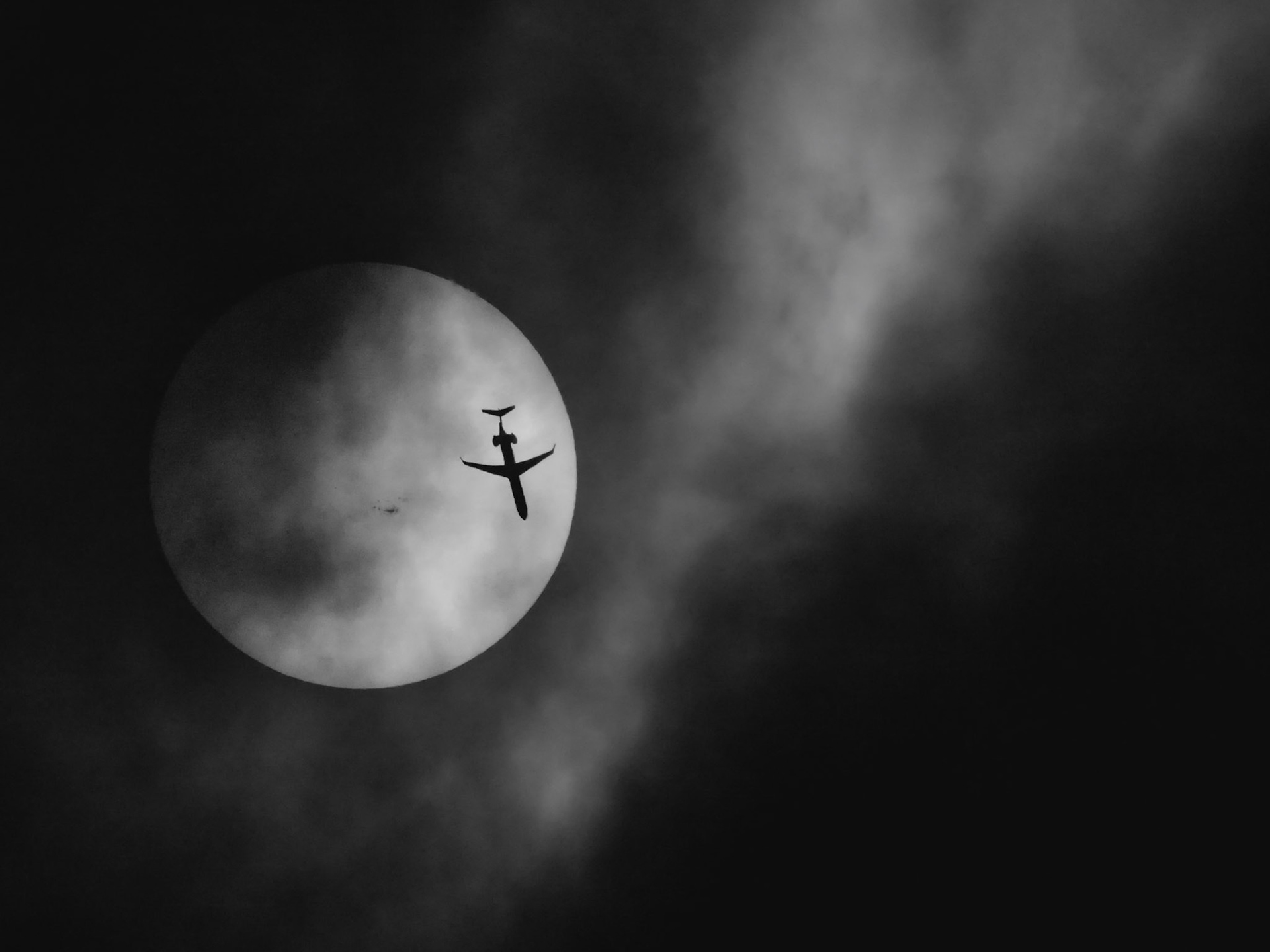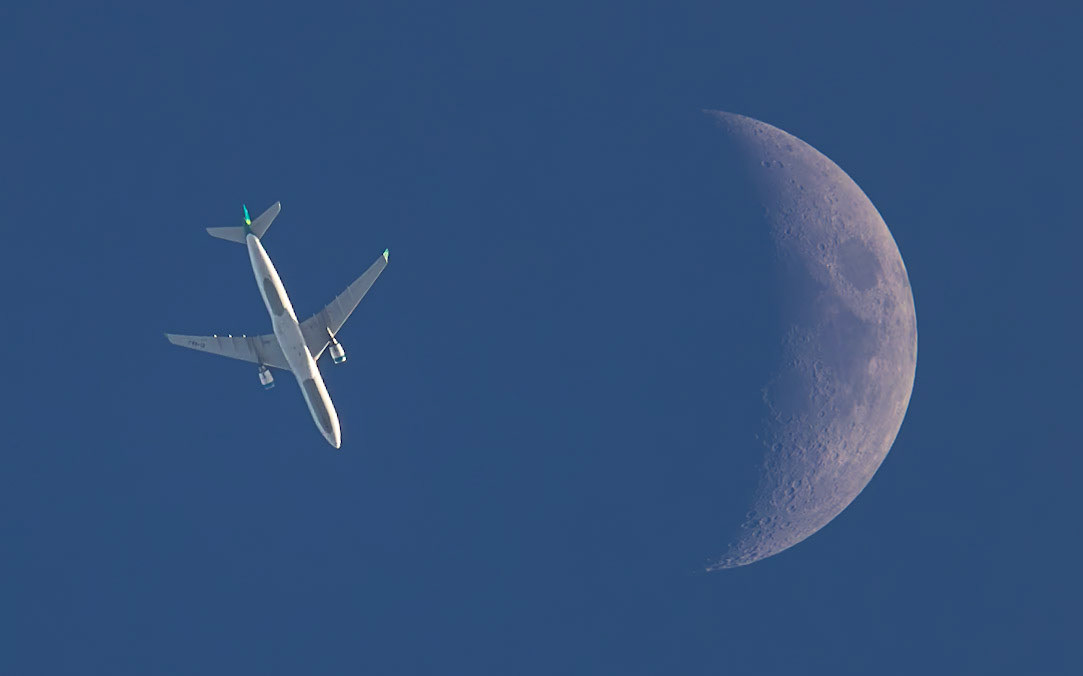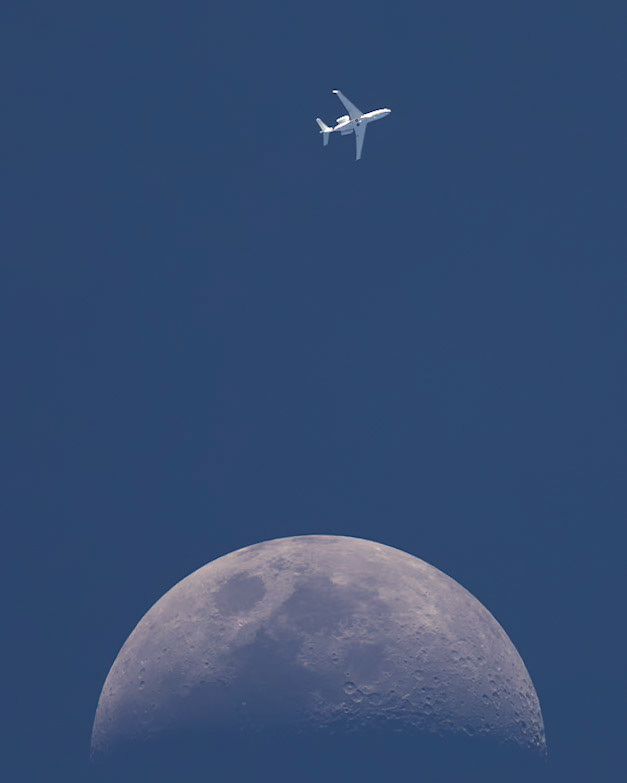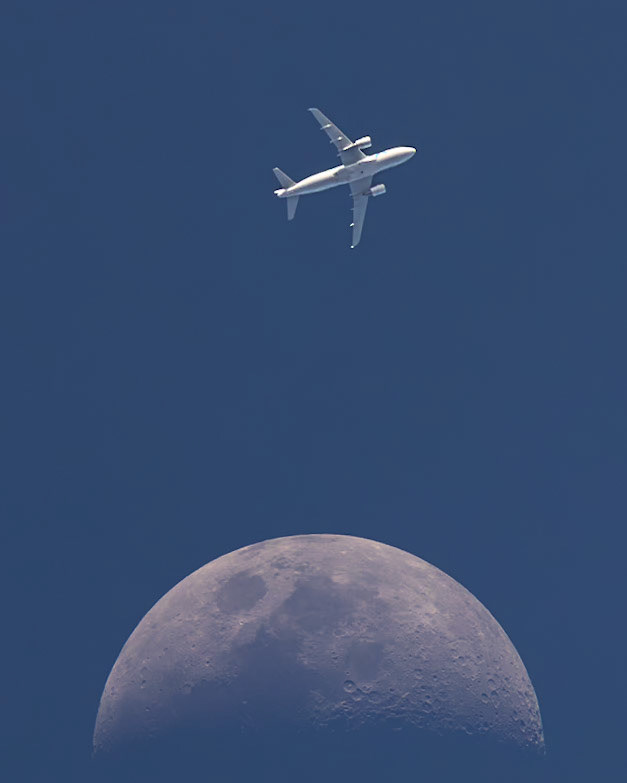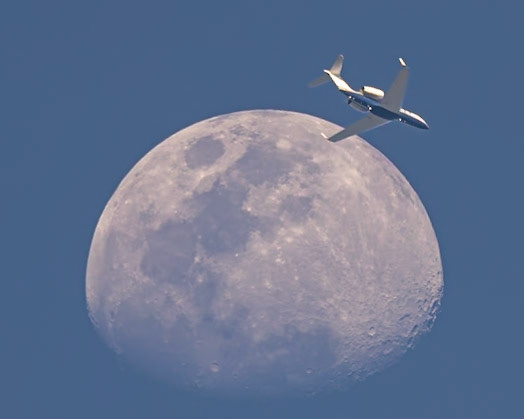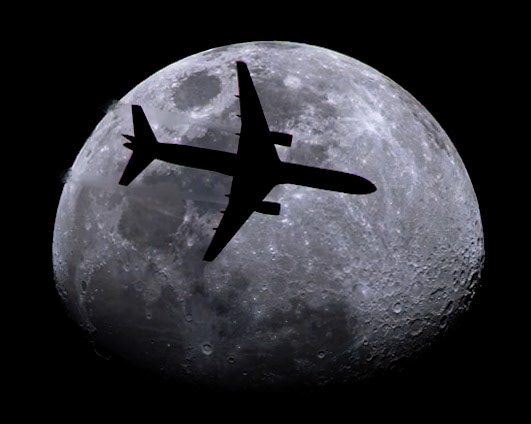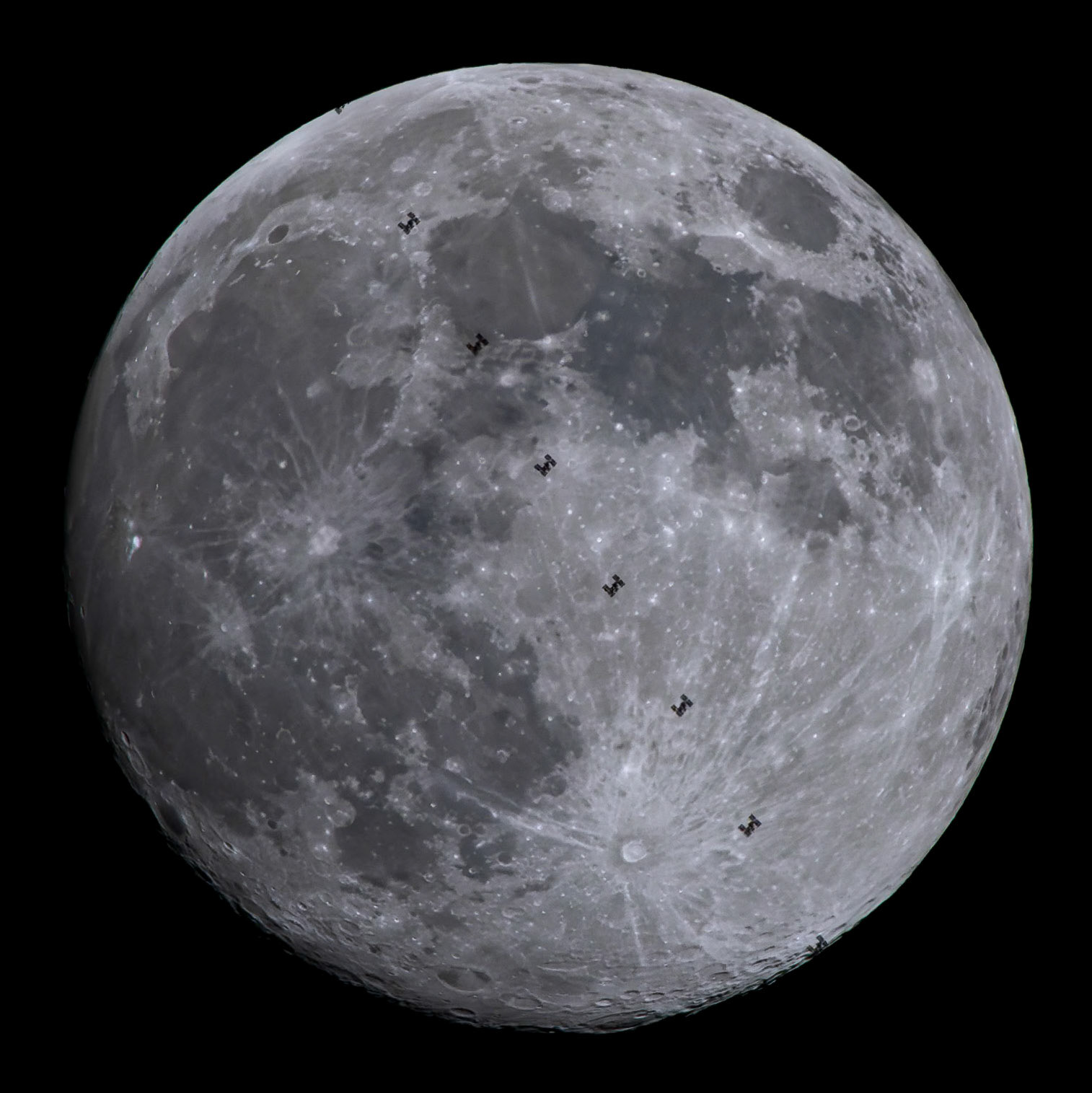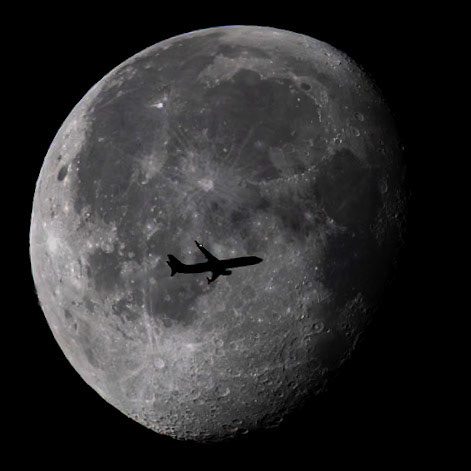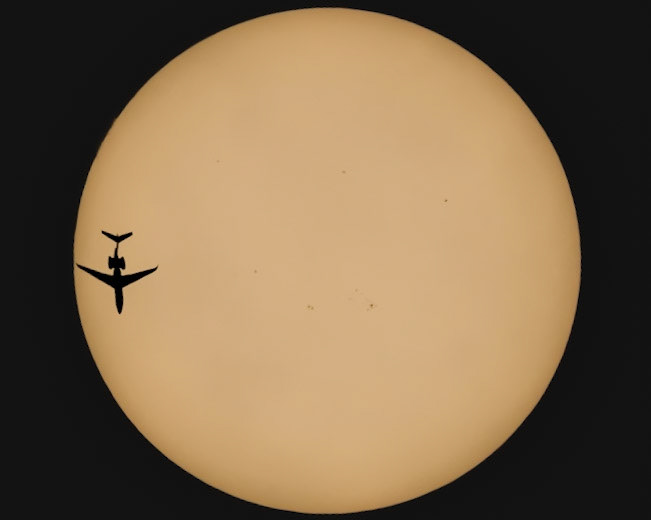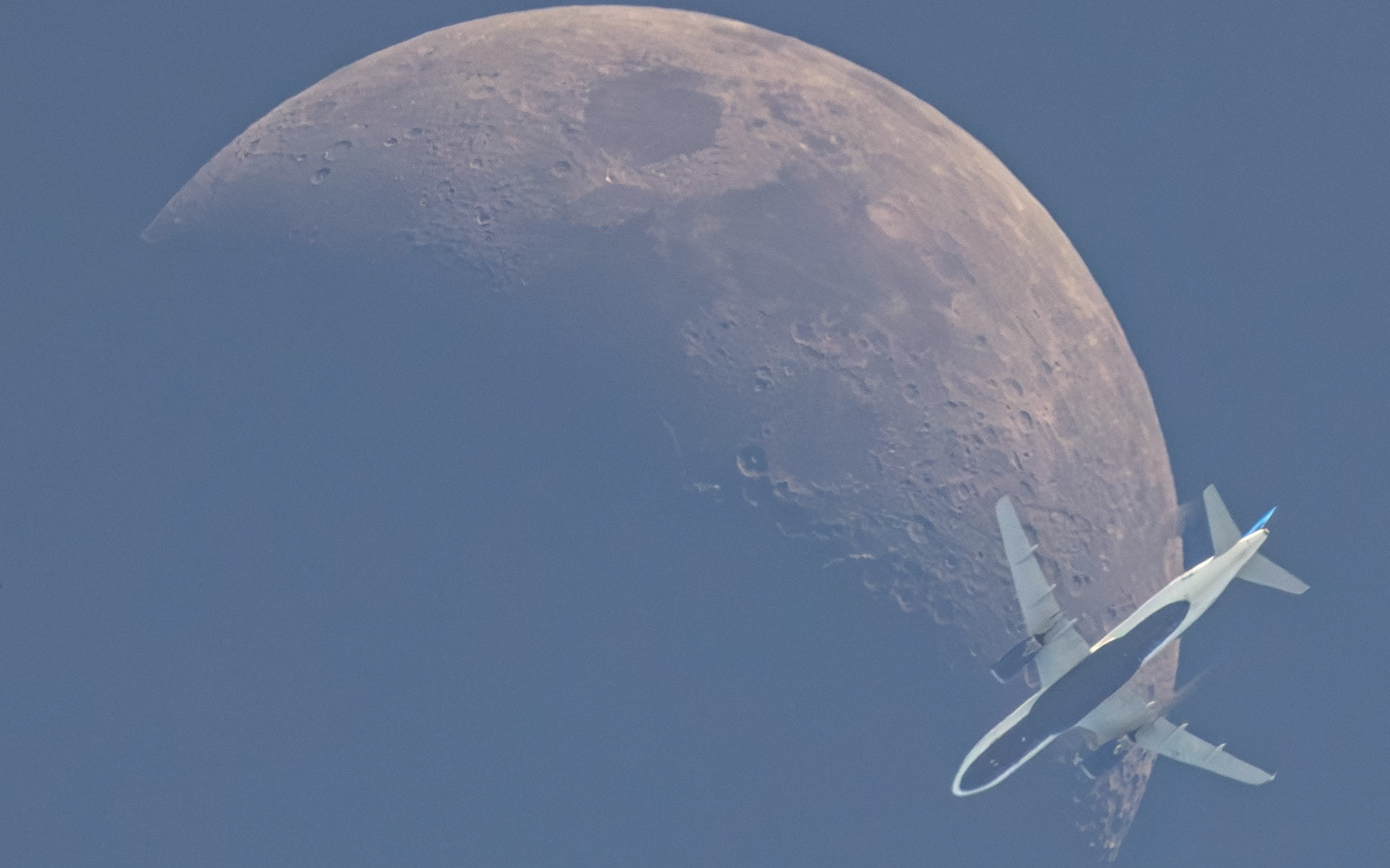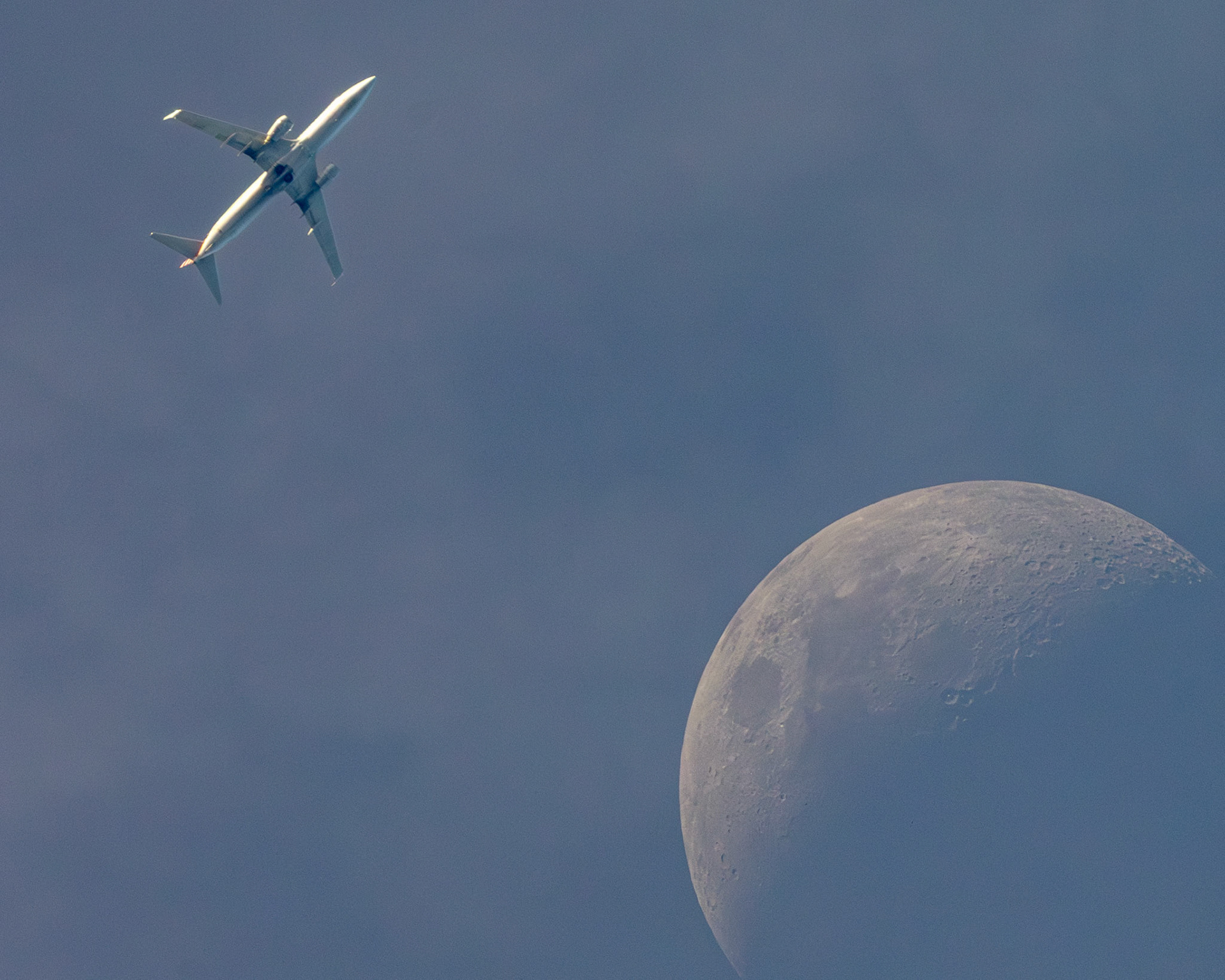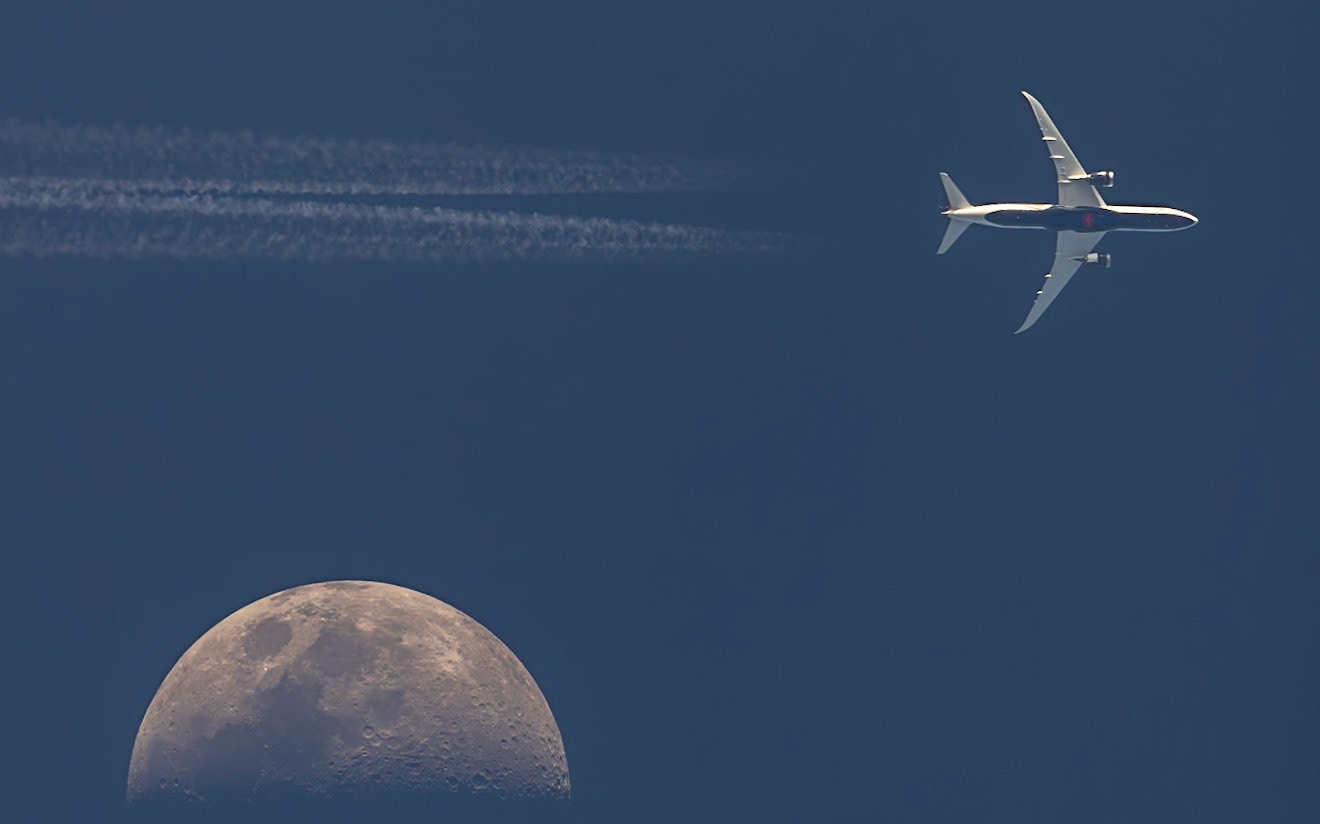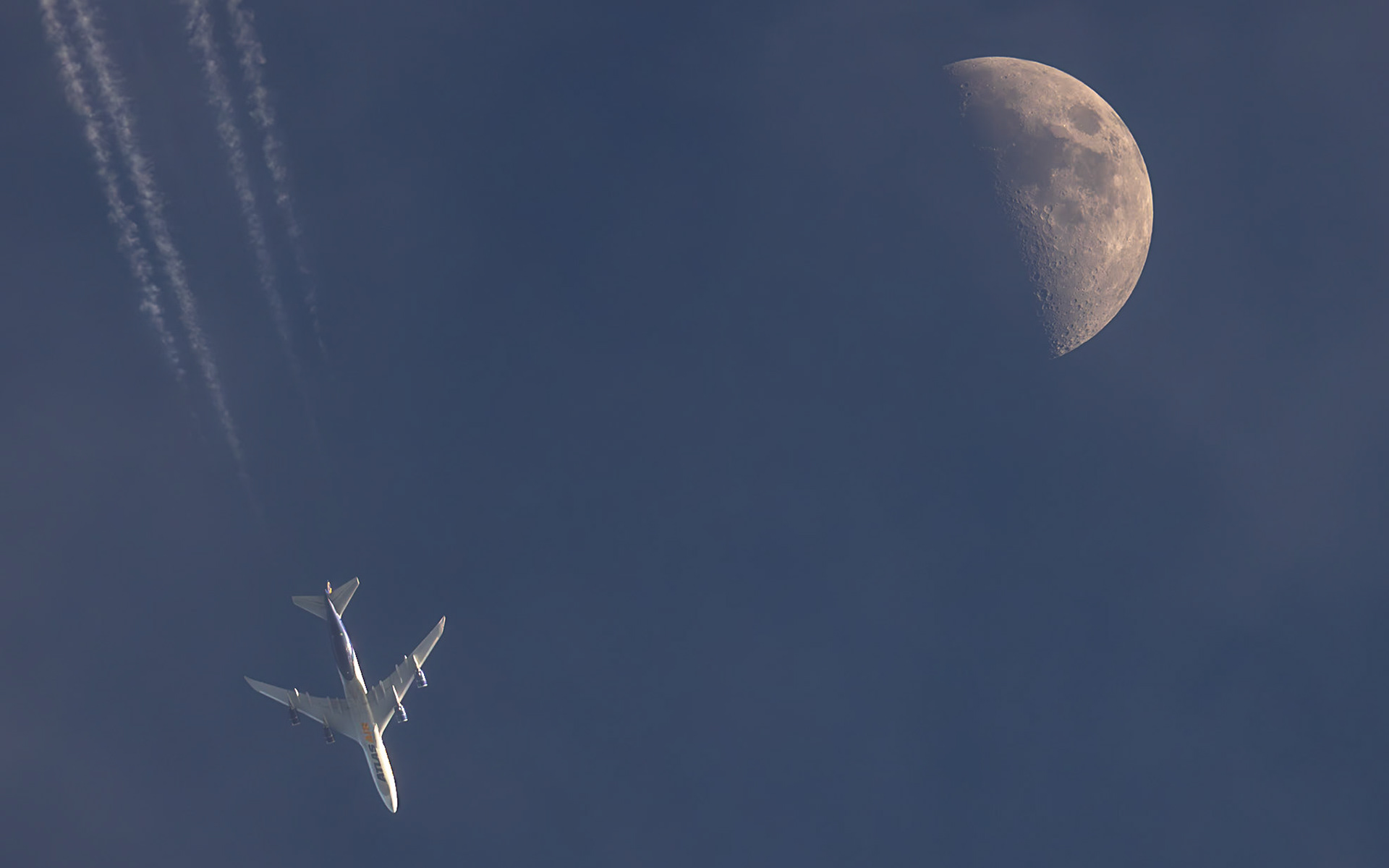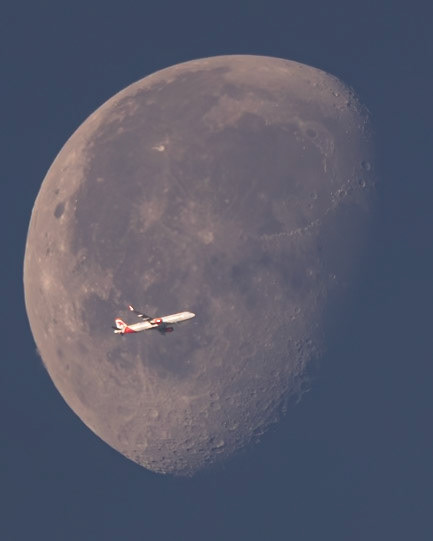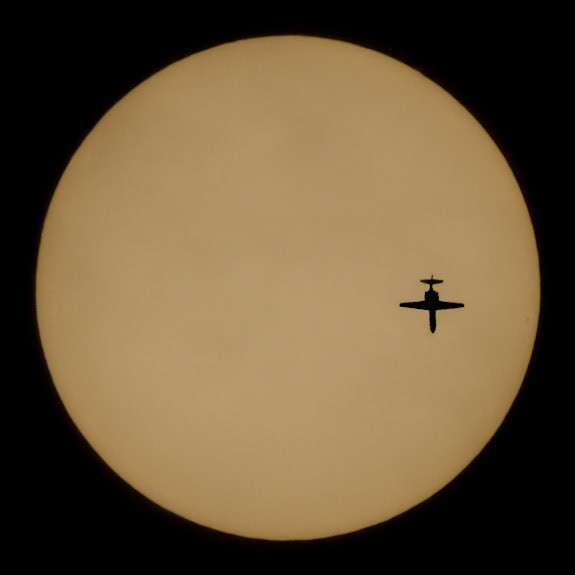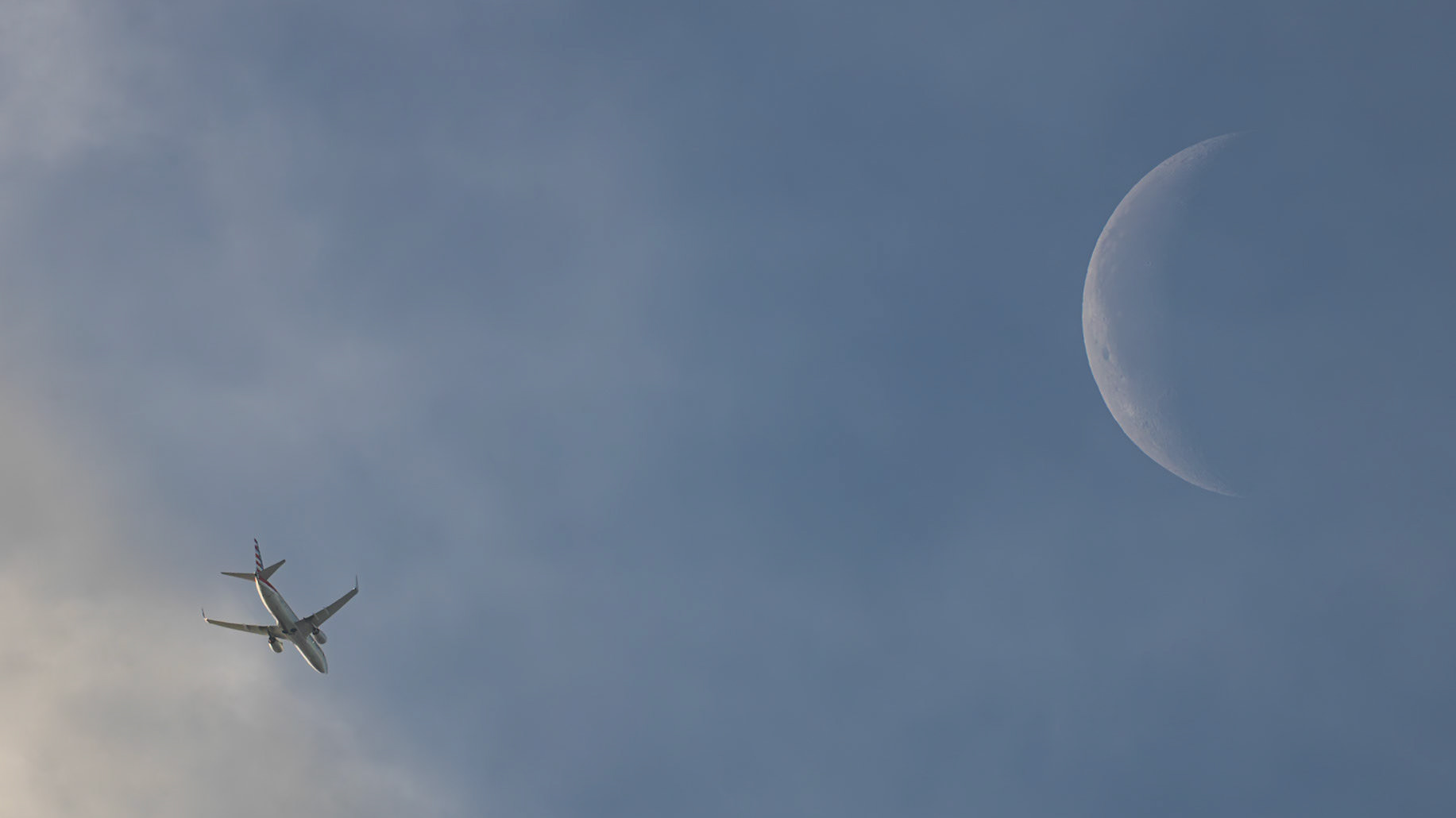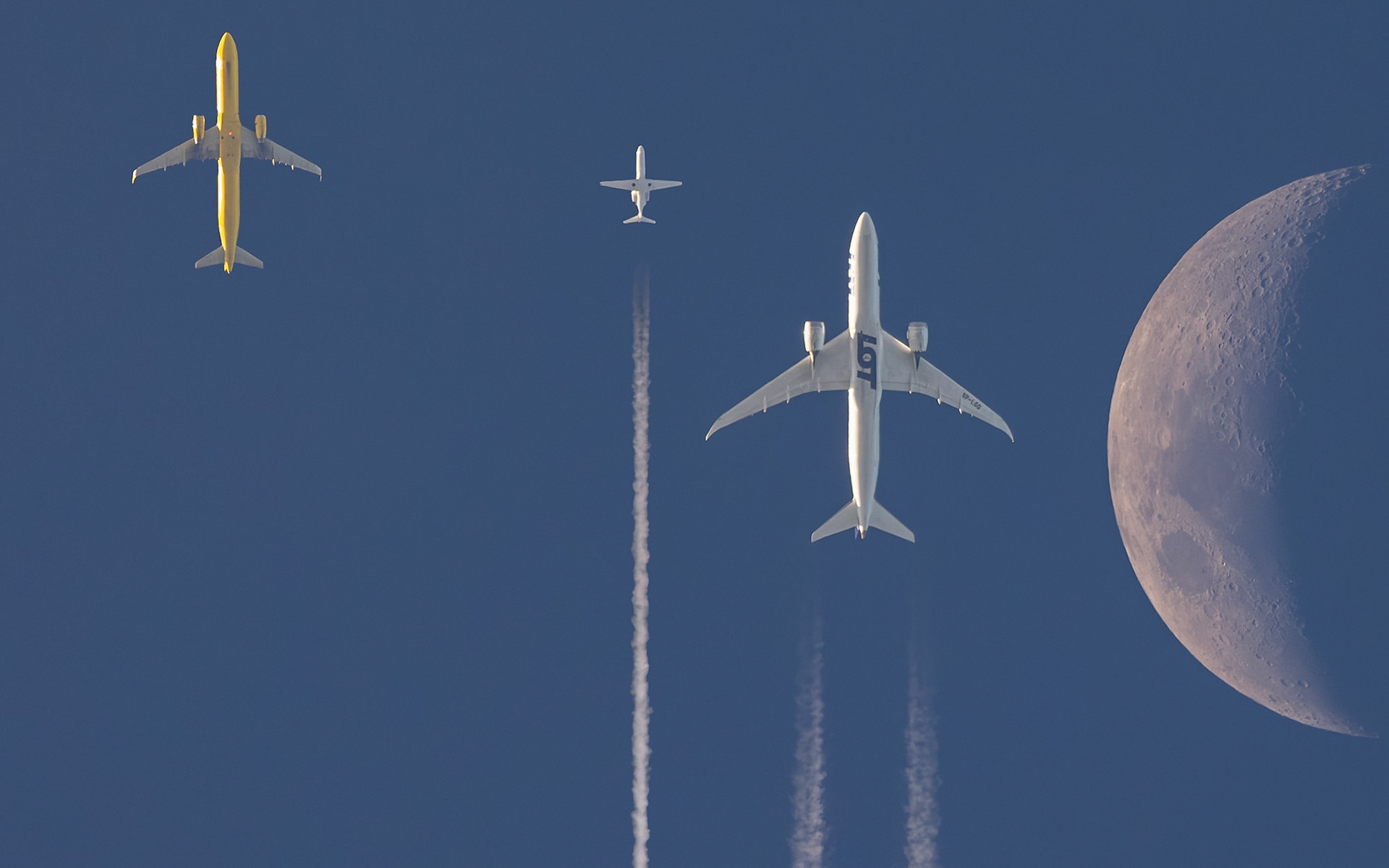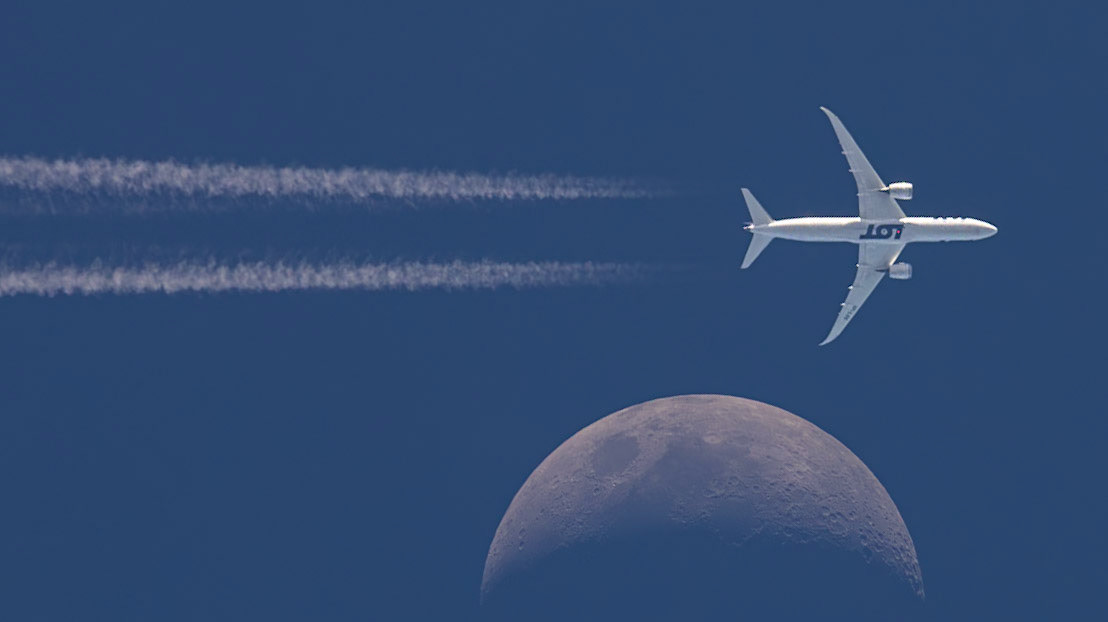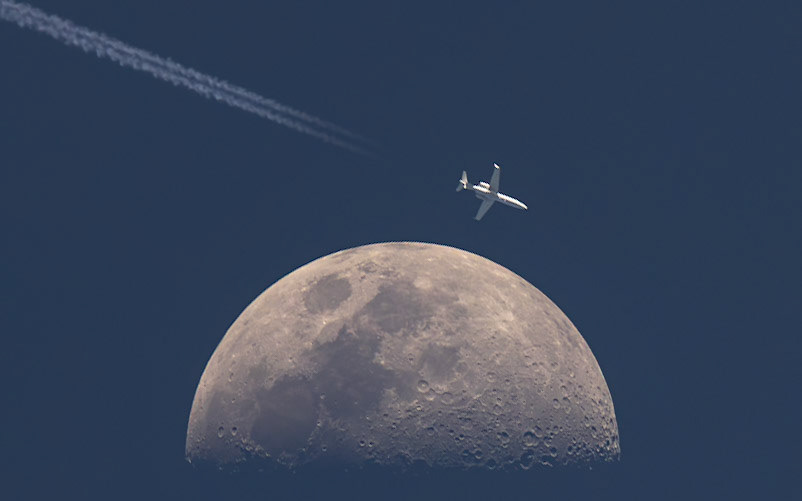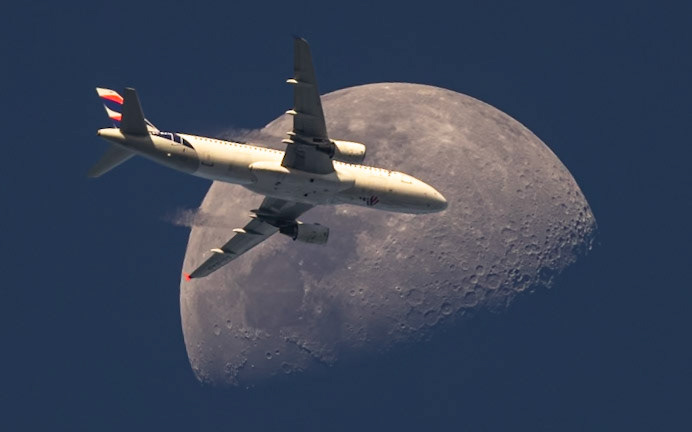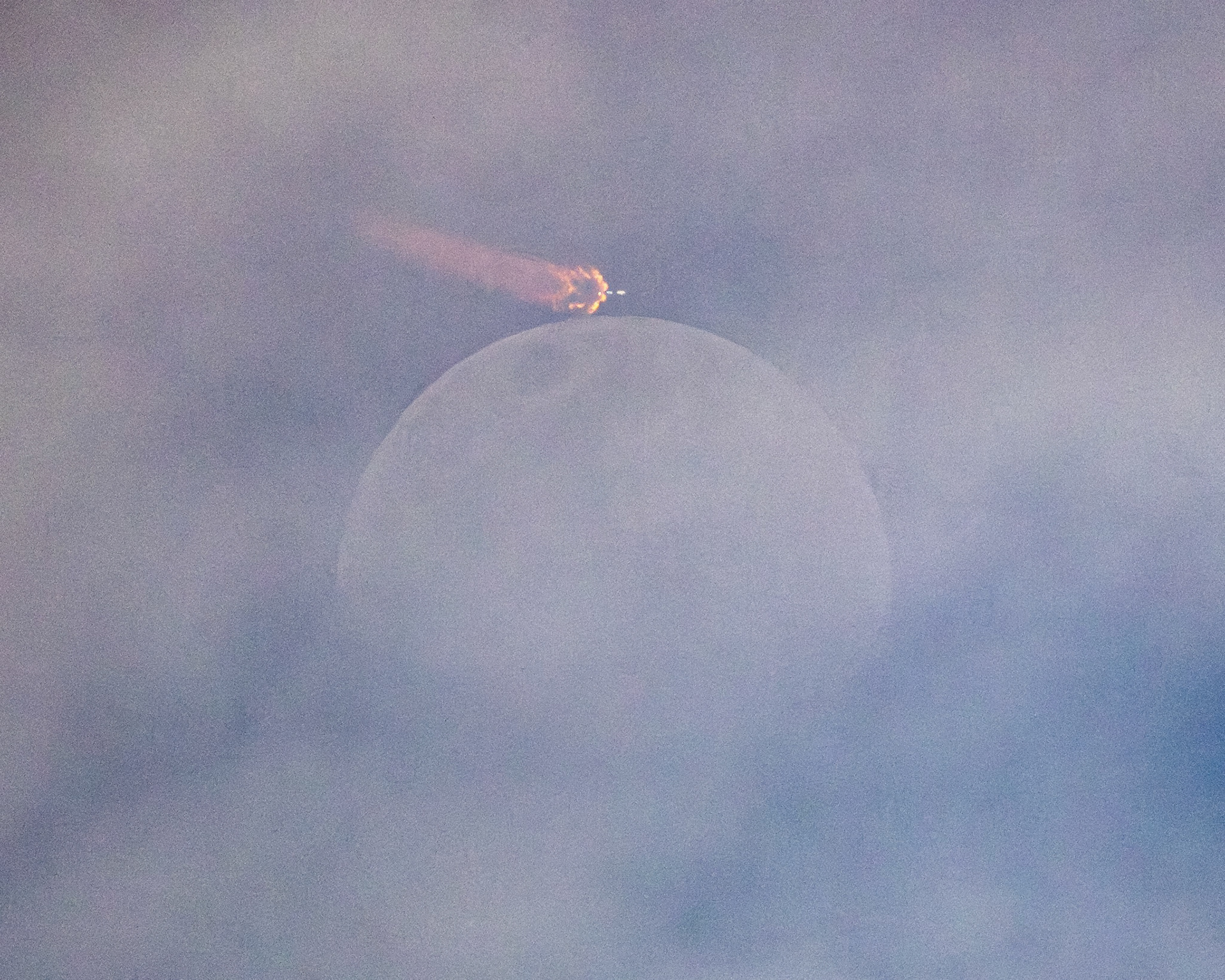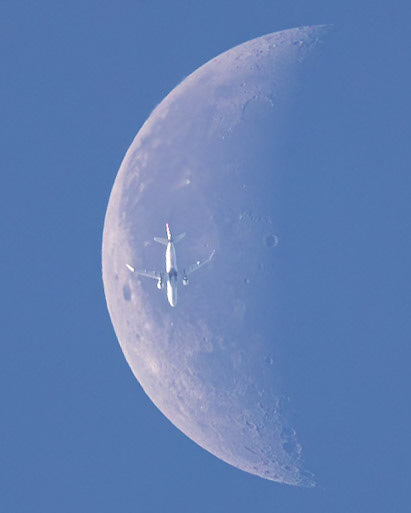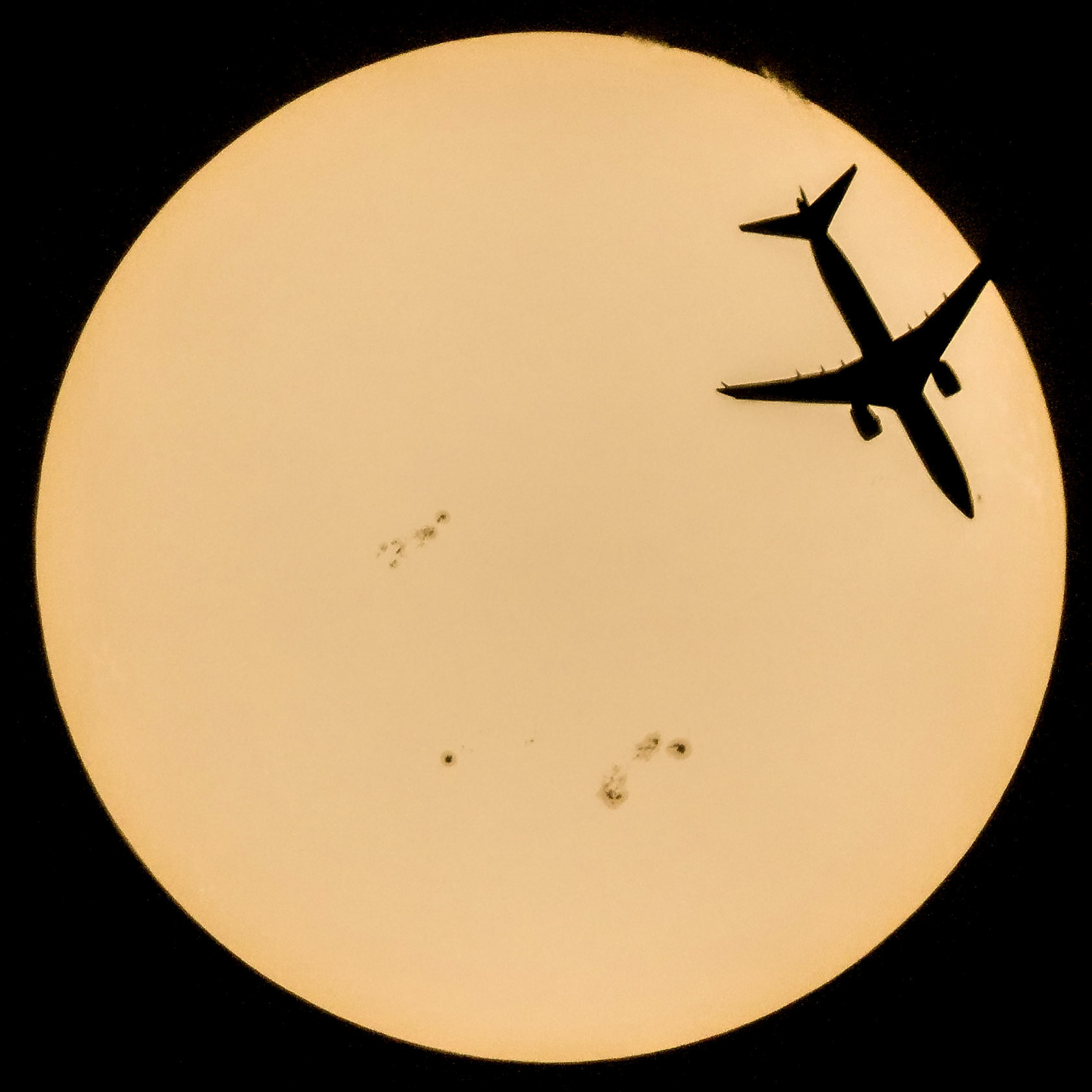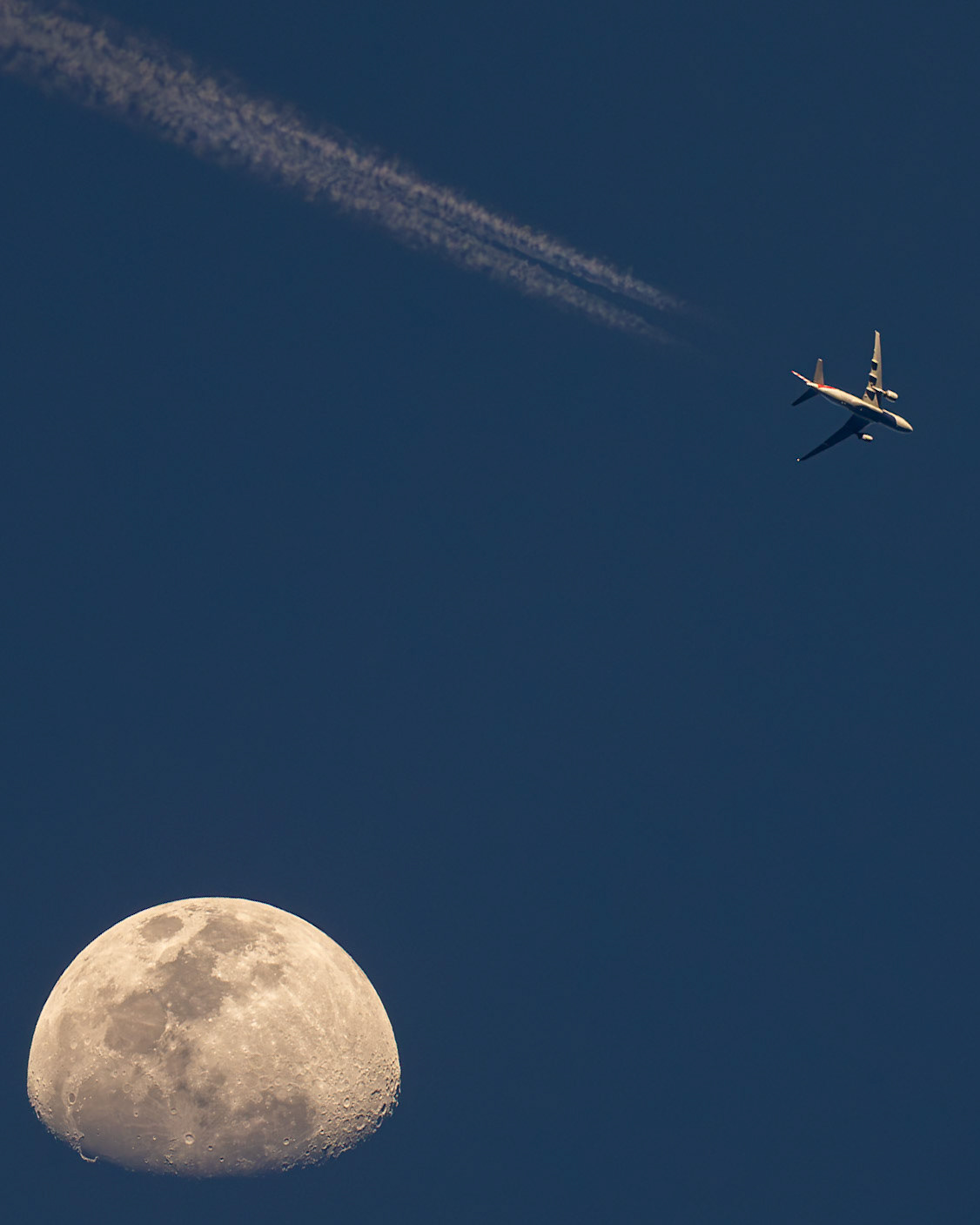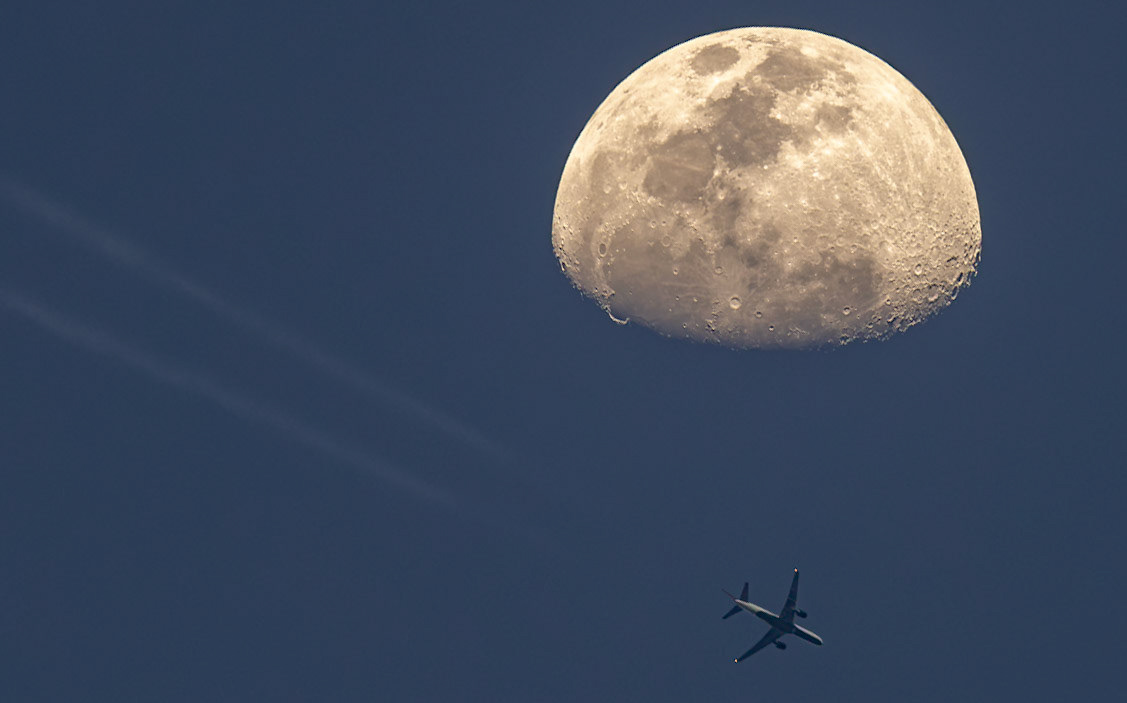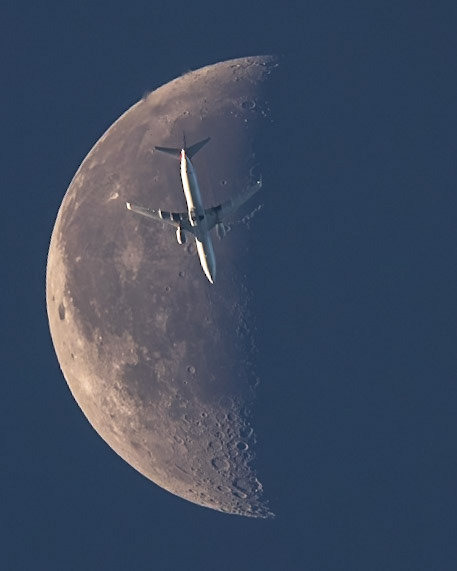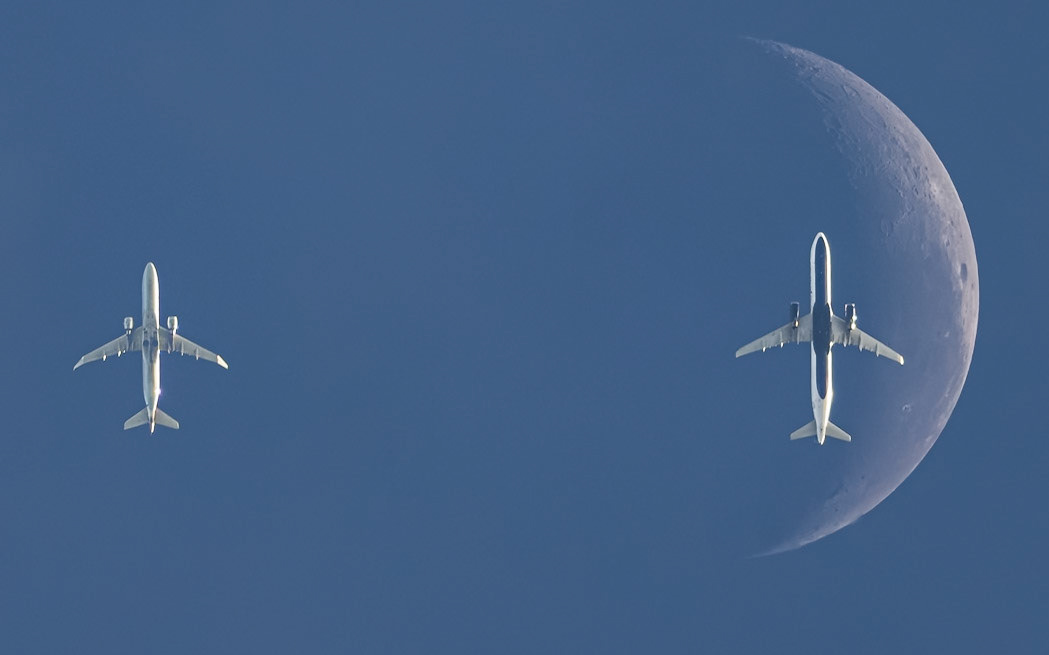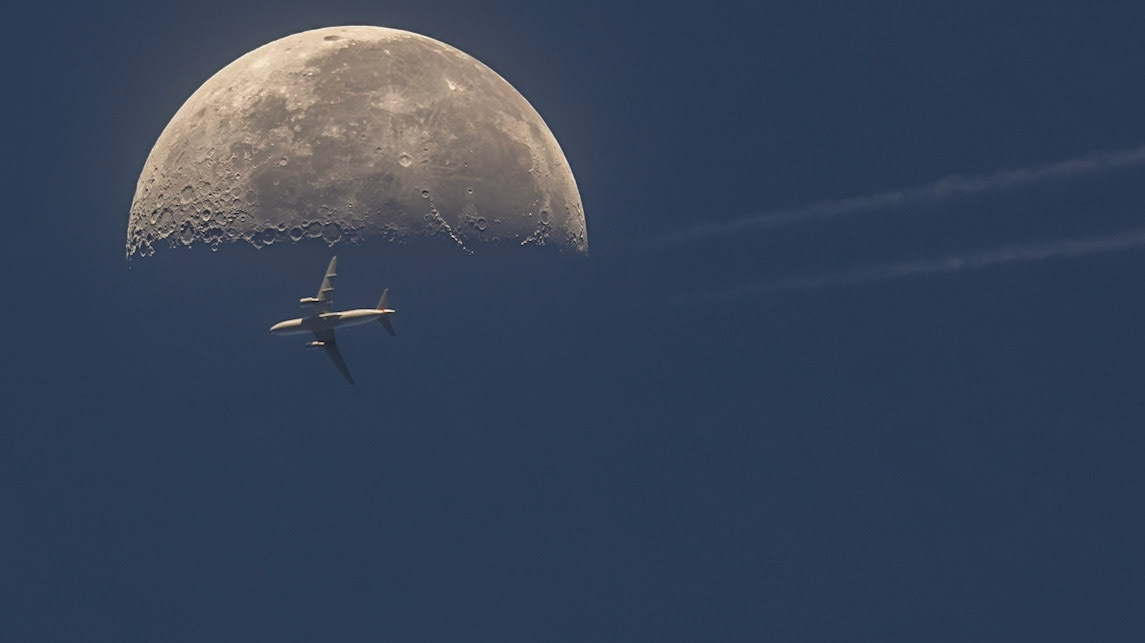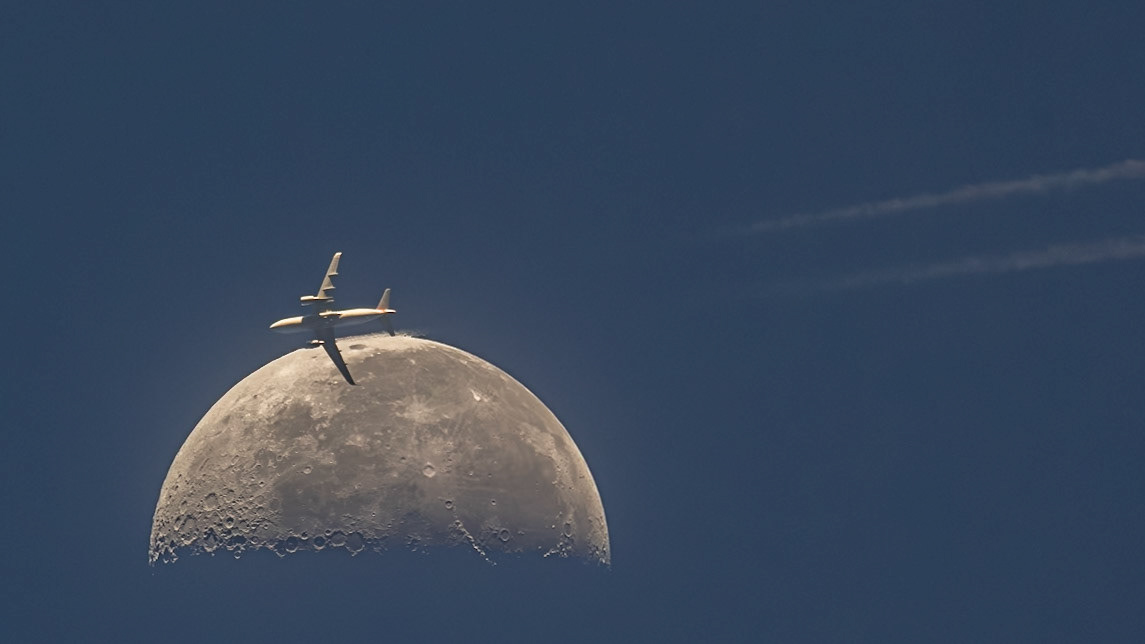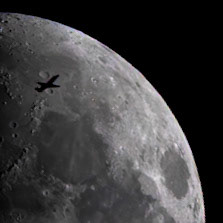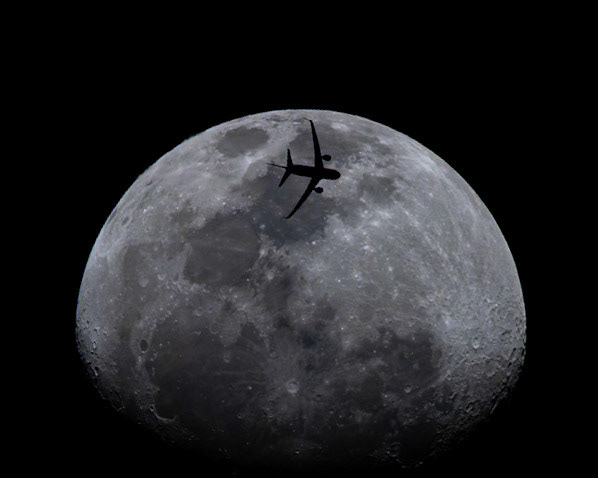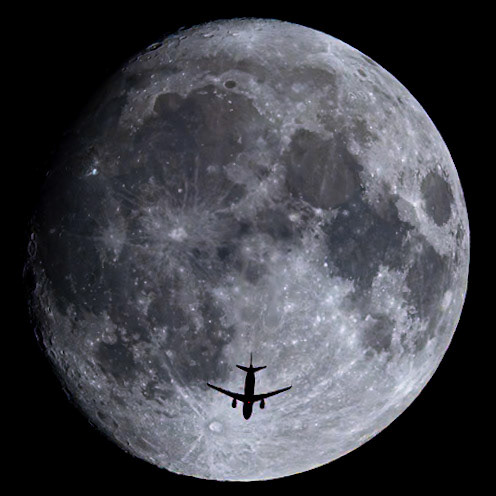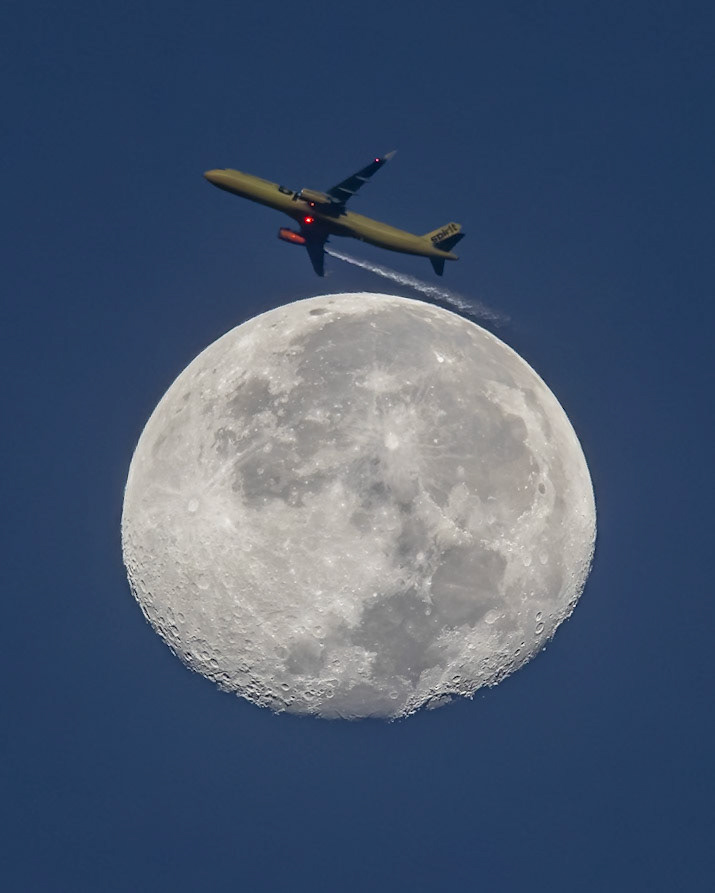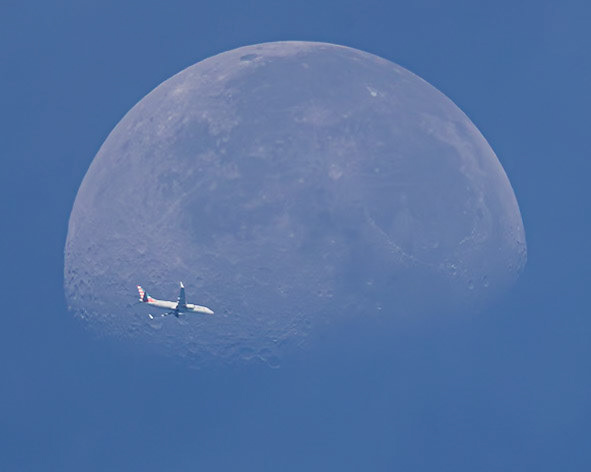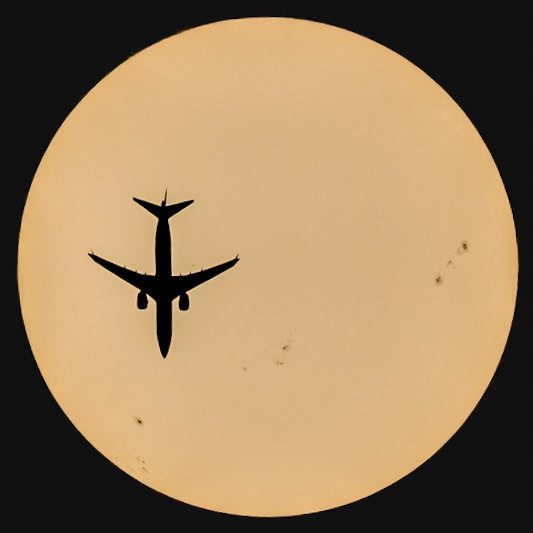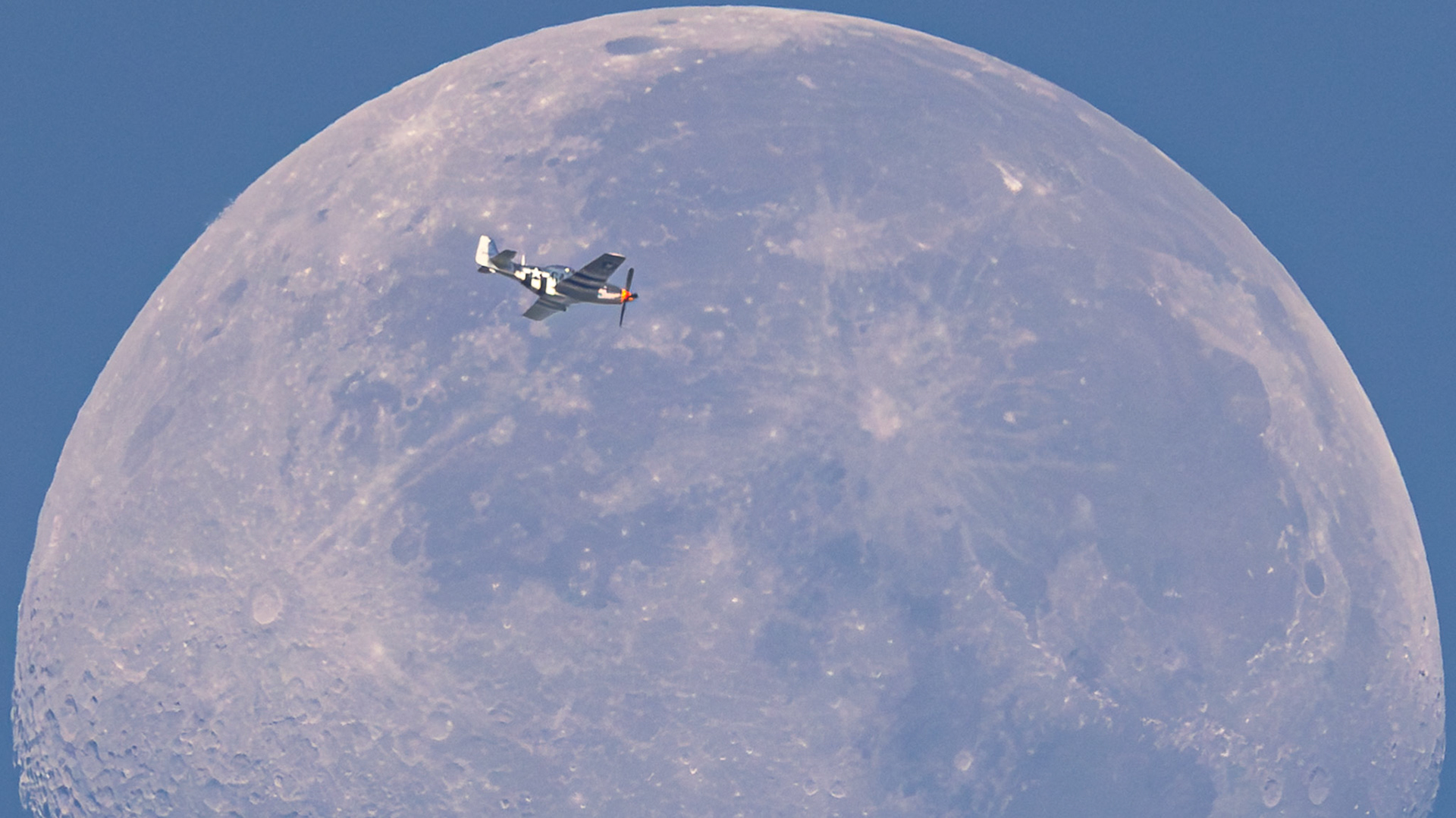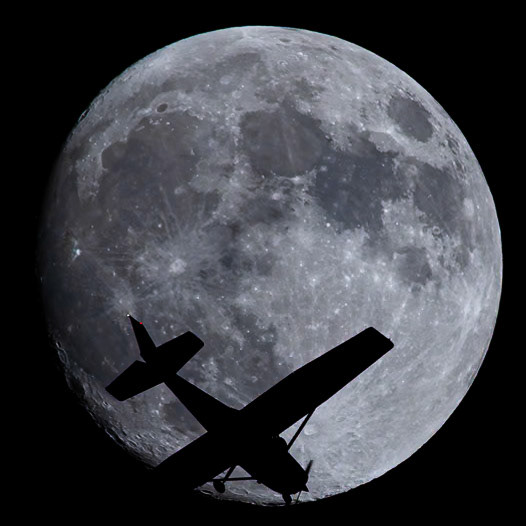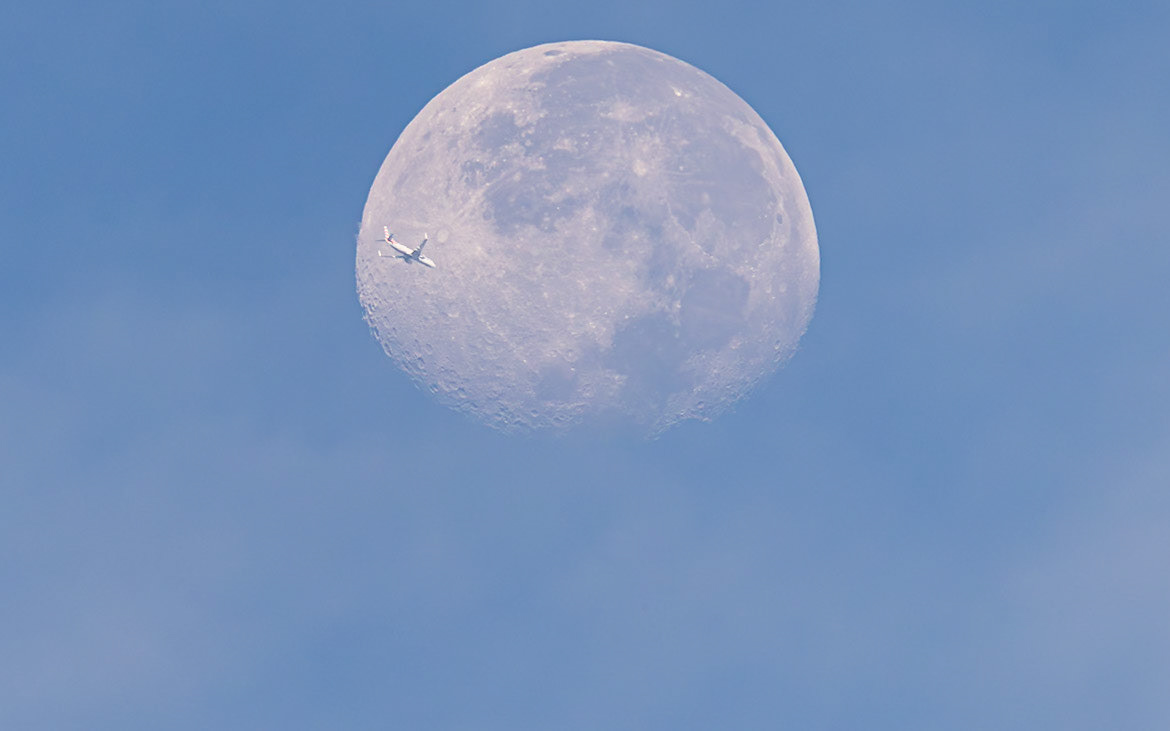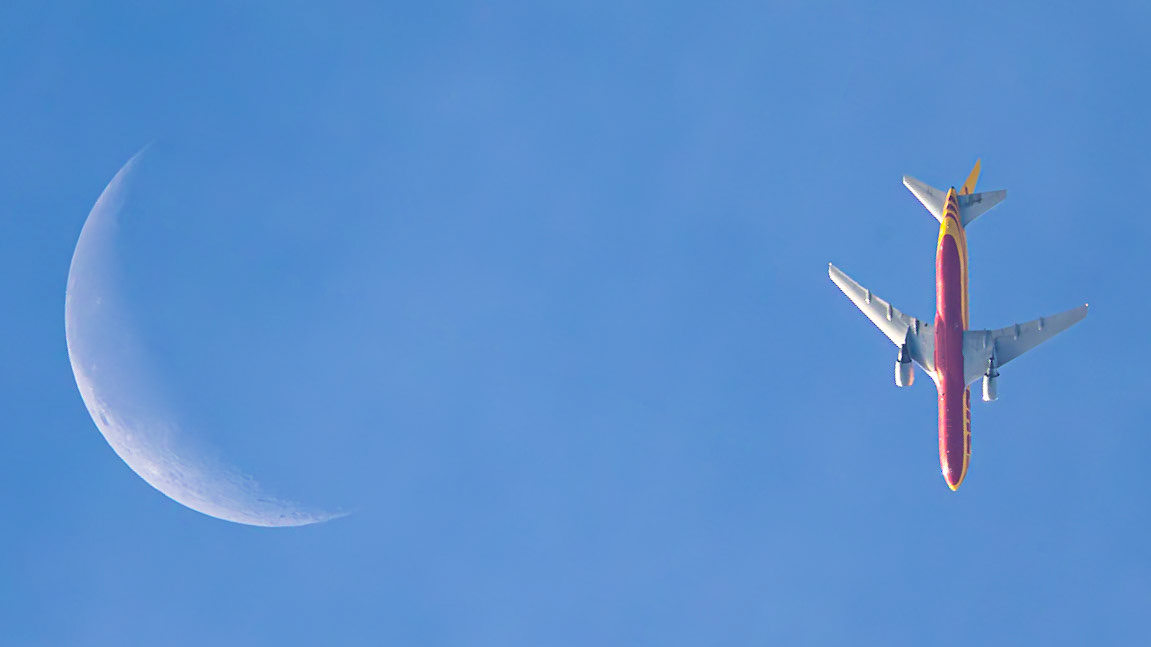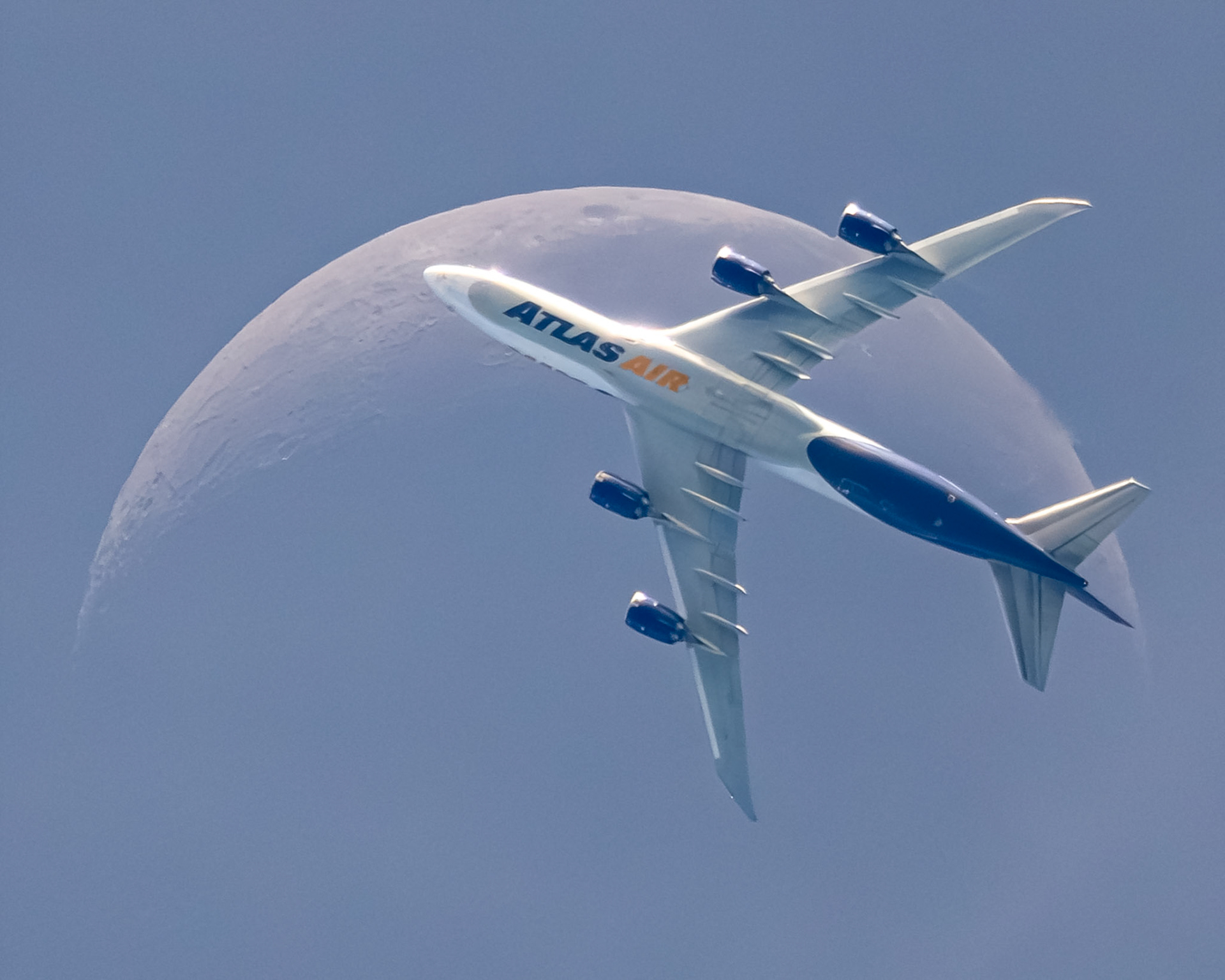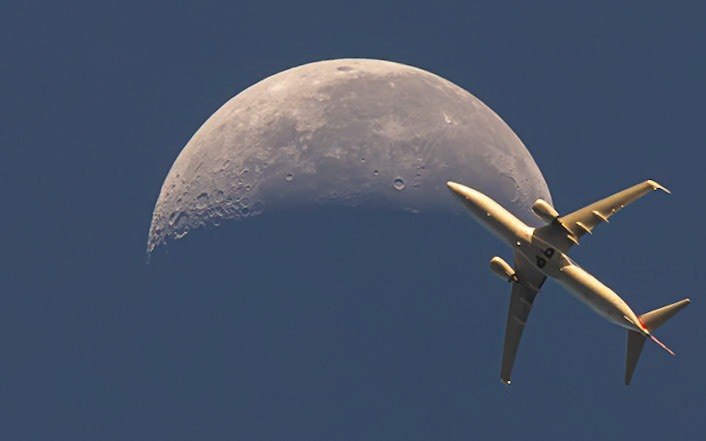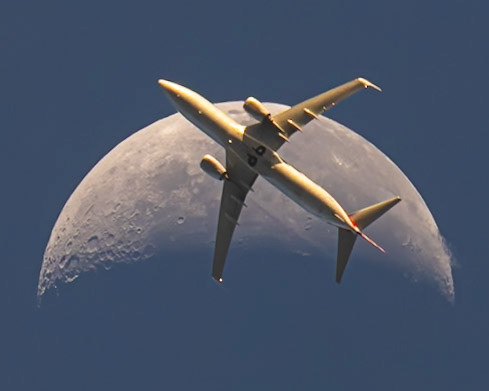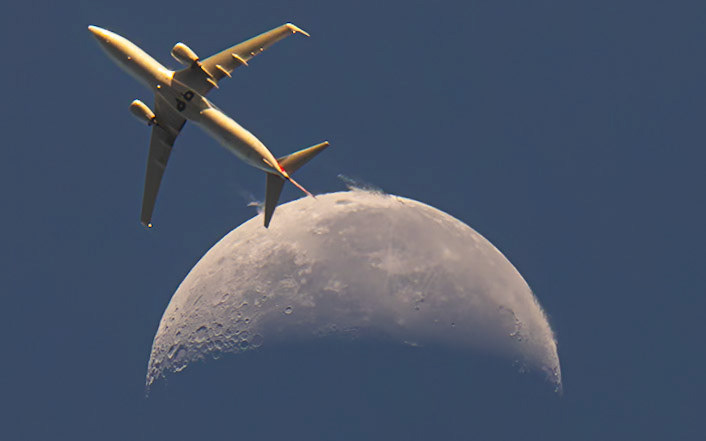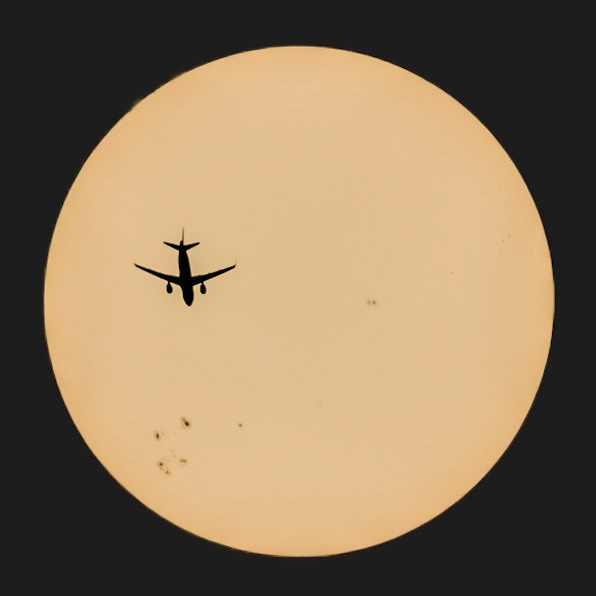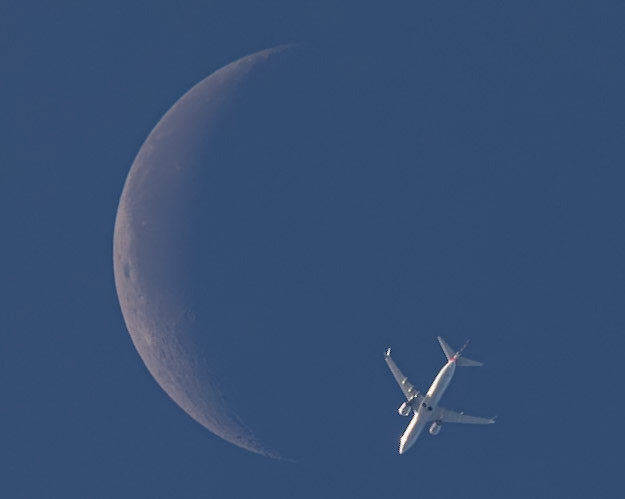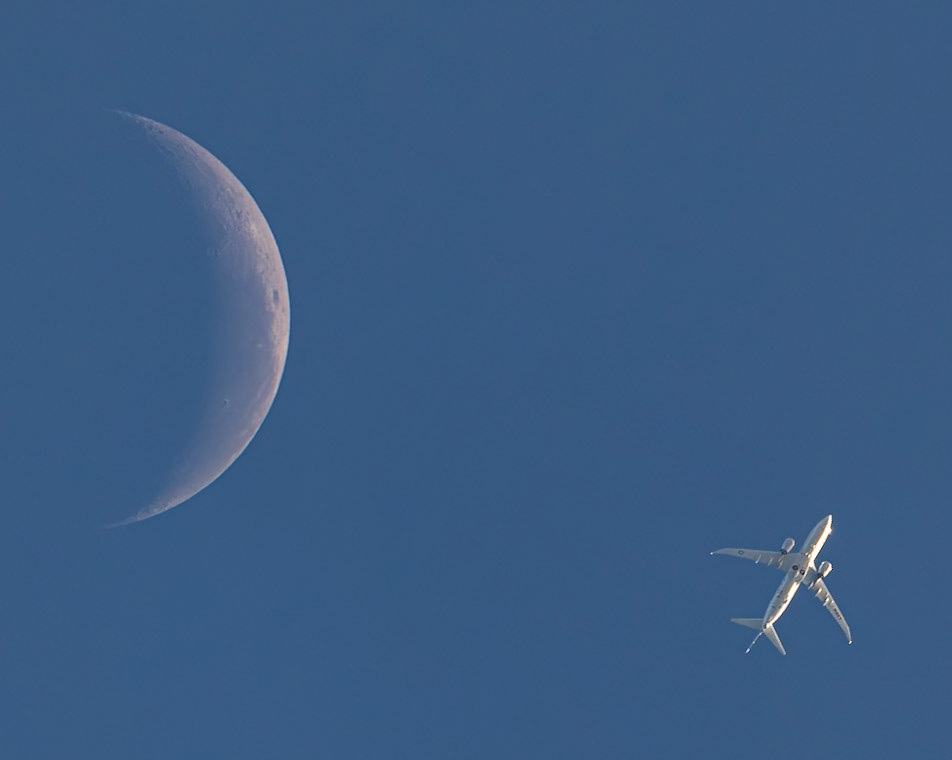
Mercury passing in front of the sun, May 9, 2016 seen from Melbourne, Florida and the campus of Florida Institute of Technology at 12:44pm. Picture was taken with a 400mm lens and stacked ND filters.

My contribution to the International Space Station / Lunar transit visible from the Space Coast tonight serves as a reminder that I really need a more solid tripod for these types of shoots. The station should be in a perfectly straight line as it transited the face of the moon, but because of the stiff ocean breeze (and the fact that I was shooting at 800mm) the image jumps around a fair amount.This was shot from Cocoa Beach, Florida, just south of NASA's Kennedy Space Center / Kennedy Space Center Visitor Complex.The image is a composite of 19 frames shot at 29 frames per second. I extracted the images showing the ISS, did initial edits in Lightroom, created the composite in Photoshop, and then did final edits (again) in Lightroom, with a touch of "detail extractor" applied in Color Efex 4.I like the timing of this shot, as we near Yuri's Night (with many celebrations already having taken occurred Saturday night) and this is also the last night for Station Commander Robert S. Kimbrough, as he is scheduled to return home on Monday, in fact, as I type this, he is already in the Soyuz (along with Sergey Ryzhikov and Andrey Borisenko) capsule.(Photo by Michael Seeley / We Report Space)

ISS Solar Transit: April 17, 2017Unfortunately, I'm not able to attend the launch by United Launch Alliance (for Orbital ATK) of the CRS-7 Cygnus capsule (named after the great John Glenn) tomorrow, but at just under 24 hours before the launch, I was able to see where the capsule is headed, from a distance of 452 km. May I present the International Space Station, transiting the face of the Sun, seen from downtown Melbourne (just 5 minutes from my office!) and the Space Coast of Florida at 11:46 am (ET). Thanks again to transit-finder.com for another accurate prediction. The transit began at 11:46:40 and lasted a mere .57 seconds. At the time of transit, the ISS was 452 km away from my viewing location. With another nod to Elliot Severn, this image was created by extracting 17 frames from a 4K video (I may post it later), shot at 29 frames per second with an EF100-400mm lens and a 2x converter. Shooting directly into the sun is serious business, so I was using two ND filters (a 10-stop and a 3-stop), and the camera was set at ISO100, 1/3200 and f16. The images were processed in Lightroom, combined in Photoshop using the "darken" mode and then finished (again) in Lightroom with a modest amount of "detail extraction" applied in Color Efex4 as a final touch. #SpotTheStation

I was able to capture the July full Moon (aka "Thunder Moon") rising earlier in the evening (photo here: https://flic.kr/p/Wms7oD ), and then 7 hours later, this: an International Space Station transit of the same full Thunder Moon.The transit was visible from Cocoa, Florida (not far from where the components of the ISS launched from). And, it lasted a luxurious 1.05 seconds, slower than the .5 second transits I've been capturing (I assume) because the ISS was a greater distance from the viewing location (400-ish km vs. this one at 630km). I caught it using the 4k video recording on a Canon DSLR (ISO640, 1/1250 and f11), shot through a 400mm lens with a 2x teleconverter. 34 individual frames were extracted, and then I combined them using PhotoShop. Minimal edits were done in Lightroom along the way.
A video of the transit is here: https://youtu.be/XwTbTICA7EAFor my uber space nerd and physicist friends, the details of the pass are pasted below. I use calsky.com and transit-finder.com to plan these shots and, frankly, I remain continually amazed that such a finely tuned event can be predicted, much less captured in this detail. High resolution: https://flic.kr/p/Vhd4R7Transit details (source: transit-finder.com):"Sunday 2017-07-09 02:58:22.00 • Lunar transitISS angular size: 43.81″; distance: 630.76 kmAngular separation: 2.9′; azimuth: 206.1°; altitude: 37.4°Center line distance: 0.54 km; visibility path width: 5.77 kmTransit duration: 1.05 s; transit chord length: 29.4′R.A.: 19h 17m; Dec: -19° 49′; parallactic angle: -23.6°ISS velocity: 28.1 ′/s (angular); 5.15 km/s (transverse)ISS velocity: -5.31 km/s (radial); 7.40 km/s (total);Direction of motion relative to zenith: 23.2°Moon angular size: 30.0′; 41.1 times larger than the ISSMoon phase: 99.9%; angular separation from Sun: 177.4°Sun altitude: -34.9°; the ISS will be in shadow"

My first field use of the 8" Celestron scope that I intend to use for the eclipse resulted in this: a solar transit of the International Space Station, seen here from Sebastian, Florida. at 5:10 pm on Thursday, August 3, 2017.I didn't have much time to set get set up, particularly because the rain was coming down in buckets until just about 15 minutes before the transit occurred. But the real thing I learned is quite obvious: I've got too much zoom. Even with a full-frame camera, I can't get the full face of the Sun in the frame. Specs:ISO640, 1/2000 exposure time, shot at 29 fps using a Canon 5D4. 24 frames extracted and combined in Photoshop, with initial edits done in Lightroom.
Transit details, with thanks again to transit-finder.com for the accurate prediction:
Thursday 2017-08-03 17:10:39.54 • Solar transitISS angular size: 44.09″; distance: 626.73 kmAngular separation: 0.5′; azimuth: 270.8°; altitude: 38.0°Center line distance: 0.11 km; visibility path width: 7.68 kmTransit duration: 0.90 s; transit chord length: 31.5′R.A.: 08h 56m; Dec: +17° 16′; parallactic angle: -53.1°ISS velocity: 34.8 ′/s (angular); 6.35 km/s (transverse)ISS velocity: -3.76 km/s (radial); 7.38 km/s (total);Direction of motion relative to zenith: -42.4°Sun angular size: 31.5′; 42.9 times larger than the ISS(Photo by Michael Seeley)

With a hurricane bearing down on Florida, the Space Coast was still able to see the International Space Station and astronauts Paolo Nespoli, Sergey Ryazanskiy and Commander Randy Bresnik meet the Full Corn Moon of September 6, 2017, seen here from Titusville, Florida, just across the river from NASA's Kennedy Space Center. The transit occurred at 3:39 am, and it lasted for 1.06 seconds. Of note, at least to me: this is just 36 minutes after the Moon was 100% illuminated. In other words, this is probably the fullest Moon I've ever photographed, and it happens to have the ISS passing in front of it. Also, the forecast called for mostly cloudy skies, and in fact, when I woke up (at 2 am), the skies above my house (45 minutes away from the centerline) were completely cloudy. But, the sky above Titusville was clear. And, full of mosquitos. Technical details: This was shot using a Canon 5D4 in 4k video mode at 29.97fps at ISO800 and 1/2500 sec. For optics, I'm using a Celestron 8" telescope with a focal reducer. 34 individual frames (each of the ISS frames and two frames of just the Moon) were extracted, processed in Lightroom, combined using the "darken" mode in Photoshop, and then final adjustments were made (again) in Lightroom. To plan the transit, I used transit-finder.com and calsky.com. Details of the transit (from transit-finder.com) are:"Wednesday 2017-09-06 03:39:01.52 • Lunar transitISS angular size: 45.75″; distance: 603.91 kmAngular separation: 0.0′; azimuth: 226.5°; altitude: 40.6°Center line distance: 0.03 km; visibility path width: 5.55 kmTransit duration: 1.06 s; transit chord length: 31.4′R.A.: 23h 02m; Dec: -08° 25′; parallactic angle: -36.9°ISS velocity: 29.6 ′/s (angular); 5.21 km/s (transverse)ISS velocity: -5.24 km/s (radial); 7.39 km/s (total);Direction of motion relative to zenith: -2.1°Moon angular size: 31.4′; 41.2 times larger than the ISSMoon phase: 100.0%; angular separation from Sun: 177.8°Sun altitude: -41.9°; the ISS will be in shadow"
(Photo by Michael Seeley)


May I present my final contribution to the #SuperMoon2017 festivities: The International Space Station and NASA Astronaut Randy "Komrade" Bresnik, Joe Acaba, Mark Vande Hei, Sergey Ryazansky and Paolo Nespoli cruising over the Space Coast of Florida, seen here against the still very Super full Moon of November 3, 2017 at 11:50pm (ET). This photo was taken near the entrance to the 45th Space Wing at Patrick Air Force Base, Fla., and within sight (albeit a few miles) of Cape Canaveral Air Force Station Space Launch Complex 40 where we hope to see SpaceX launch cargo to the ISS with #CRS13 on Friday (12/8). Joining in the fun this evening was Justin Credible, Marcus Cote and the legendary John Kraus. We were 4/4 tonight, with all of us getting the shot, no mean feat, as the transit lasted just .58 seconds. This picture is a composite of 17 images extracted from the 4K video recording (thank you, Elliot) I took of the transit. The camera (Canon 5D4) was set at ISO800, 1/4000sec shutter speed and f6.3, and I was using my new SIGMA 150-600mm lens for this one. (Edited to add the following quote/endorsement/analysis from Mr. Kraus: ".58 * 29.97 = 17.38 = 17. Seeley isn’t a fraud!")Details of the transit, from the always helpful transit-finder.com:Sunday 2017-12-03 23:50:40.12 • Lunar transitISS angular size: 65.64″; distance: 420.96 kmAngular separation: 0.1′; azimuth: 123.4°; altitude: 73.6°Center line distance: 0.02 km; visibility path width: 4.18 kmTransit duration: 0.58 s; transit chord length: 34.0′R.A.: 05h 18m; Dec: +18° 38′; parallactic angle: 44.4°ISS velocity: 58.3 ′/s (angular); 7.14 km/s (transverse)ISS velocity: 1.89 km/s (radial); 7.39 km/s (total);Direction of motion relative to zenith: -172.0°Moon angular size: 34.0′; 31.1 times larger than the ISSMoon phase: 99.4%; angular separation from Sun: 170.9°Sun altitude: -82.1°; the ISS will be in shadow.#SpotTheStation

I spend a ton of time looking at the Moon, and this is, in fact, the first time I've happened to catch an airplane-lunar transit.And what an airplane it is: that's most likely the HC-130 from the 920th Rescue Wing from Patrick Air Force Base, Florida, and if you look closely, you can see that the loading (and maybe, in this case, unloading) ramp is down/open.I was in the backyard trying to shoot the 89% illuminated waxing gibbous Moon through the trees, and this plane came into view. I didn't have time to switch equipment (I had the right lens but the wrong, full-frame, camera), but it all worked out well enough.(Photo by Michael Seeley)

The Waxing Gibbous Moon met the International Space Station, at least that's what it looked like from near the Sebastian Inlet Tuesday night.A mere 438km away, the Space Station flew across the face of the Moon in just over a half a second (.59, to be exact). This is the first time I've shot stills of a Lunar Transit (aka "spray and pray"), and I managed to capture the ISS in 4 frames, shown here in a 4-shot composite. It was breezy, chilly, and the Moon was quite high in the sky. Considering how much the lens was moving around in the breeze, I was uncertain I'd capture anything, but at least one of the frames is pretty sharp.Also, I was shooting with the always-talented John Kraus / John Kraus Photos and Marcus Cote / Marcus Cote Photography, both of whom got great shots. Go check them out.Details: ISO800, f5.6 and 1/3200 sec, shot with a Canon 7D2 with a 500mm + 1.4x combo.
Transit details (from transit-finder.com):
Tuesday 2019-01-15 20:50:48.50 • Lunar transitISS angular size: 63.02″; distance: 438.46 kmAngular separation: 0.0′; azimuth: 227.9°; altitude: 67.6°Center line distance: 0.03 km; visibility path width: 4.06 kmTransit duration: 0.59 s; transit chord length: 31.7′R.A.: 03h 02m; Dec: +11° 51′; parallactic angle: -38.4°ISS velocity: 54.2 ′/s (angular); 6.91 km/s (transverse)ISS velocity: -2.62 km/s (radial); 7.39 km/s (total);Direction of motion relative to zenith: -2.3°Moon angular size: 31.7′; 30.2 times larger than the ISSMoon phase: 67.9%; angular separation from Sun: 110.9°Sun altitude: -39.8°; the ISS will be in shadow

No, these aren't Tie Fighters: At 3:32pm (ET), the International Space Station transited the Sun.Visible from the Space Coast, John Kraus, Dan Batcheldor & I were at Florida Institute of Technology to capture it. At a speed of 4.76 miles/sec, it was quick, just .62 secs!(Big thanks to Dr. Batcheldor for letting us use his telescopes for this shot -- as you can tell, I've actually got too much magnification as I couldn't get the full disc of the Sun in the frame!)

Good morning, #Falcon9. That's not a huge sunspot, it's the #SpaceX #Starlink launch.(Pic: me / WeReportSpace )

At 7:29am (ET) Tuesday, SpaceX successfully launched another batch of Starlink communications satellites from Kennedy Space Center’s LC-39A. This is the Falcon 9 rocket carrying the payload to orbit, seen from Titusville transiting the Sun shortly after sunrise. Photo: Michael Seeley / @mseeley20

Good morning, Sun, and good morning, #Falcon9! This is the #SpaceX #Starlink rocket, passing in front of the Sun, seen Wednesday morning from Titusville, Florida.

For my second transit in one day, may I present, traveling at 17,500mph, the International Space Station passing in front of the First Quarter Moon, seen Wednesday evening from Mims, Florida.

The SpaceX Falcon 9 rocket meets the Moon as another batch of Starlink satellites are sent to orbit. Alternate title: A Falcon 9 and the Moon walk into a bar...Big thanks to flightclub.io for helping me know where to stand for this shot, captured in a single shot with a Canon R5 + RF100-500mm w/ 1.4x TC.(📷:me / We Report Space)

Falcon 9 meets the Moon: the wide view.The only option I could find for a rocket/lunar alignment was along this narrow road, the A. Max Brewer Parkway, in Titusville. Although there's water (and things that live in the water) nearby, there was no clear view of the horizon for any reflection. But, the bright smudge is the 95% illuminated Moon, and you can see how far into the flight the transit occurred. I come at this with a clear (and obsessive) bias, for sure, but it's always funny to me that at 11:44 pm, there are people awake and not watching the rocket. I'm referring to the car (frame left) speeding toward me, causing me to end this exposure after 168-seconds to save the frame from the headlights. Details: 168-secs at ISO320 and f18 at 16mm with a Canon 5D4 / EF 16-35mm.

Seen from Melbourne, Florida: That's American Airlines flight 751 (a Boeing 737-823) flying at 38,000ft from Charlotte, NC to Miami, Florida passing in front of the nearly Full Hunter's Moon. Details: ISO250, 1/1000-sec at f10 with a Canon R5 and RF100-500 + 1.4x TC. (Pic: me)

Seen Tuesday, October 19 from Melbourne, Florida: That's American Airlines flight 751 (a Boeing 737-823) flying at 38,000ft from Charlotte, NC to Miami, Florida passing in front of the nearly (99.5% illuminated) Full Hunter's Moon. According to the Flightradar24 app, the jet was traveling at 467kts. Details: 5 frames all shot at ISO250, 1/1000-sec at f10 with a Canon R5 and RF100-500 + 1.4x TC.

On Saturday, November 13 at 7:19 a.m. EST, Falcon 9 launched 53 Starlink satellites to orbit from Space Launch Complex 40 (SLC-40) at Cape Canaveral Space Force Station in Florida. This was the ninth launch and landing of this Falcon 9 first stage booster, which previously launched Crew Demo-2, ANASIS-11, CRS-21, Transporter-1, and now five Starlink missions.

And for my third night as the old man yelling at clouds, there's this episode from Saturday at 11:15 pm. Earlier in the night, the Moon was mainly unobscured as it rose through the flight paths near my house, but the cloud cover was nearly complete when I started looking at Flightradar24 for lucky transits. I had been watching this Beech 77 Skipper (thank you, Flightradar24) meander south from St. Augustine along I-95. Flying at 5,500 feet at a speed of 81 knots, it was pretty much the least exciting thing in the sky last night. Its track was rather inexact, and I thought it would stay west of me. But as it got closer (I could actually hear it as it approached), I stuck my head outside, found the smudge that was the Moon behind the thick clouds, and to my amazement (and disgust at the conditions), N6754W (private owner) was nearly perfectly aligned with the Moon.The photo is a mess -- for the photo nerds, this is ISO2000, f7.1 and 1/80 second, handheld. The exposure is pushed two stops in post, and I'm surprised the autofocus could even find anything to lock onto. I'm also experimenting with a noise reduction plug-in, and that's been deployed here. Too Long; Didn't Read: I'm ready for the clouds to be gone, and I spend way too much time looking at the Moon.

Seen from Melbourne, Florida passing in front of the Moon, a Bombardier Challenger 300 jet flying at 18,000ft & 345kts, traveling from TEB (Teterboro, NJ) to BCT (Boca Raton, FL).Pic: me, Friday, Jan 14, 2022(Thanks, FlightRadar24, for the flight data)

A small handful of Boeing 747s fly the flight corridors near our house every night. And for the past few months, I've wondered what one of those 747s would look like passing in front of the Moon. Last night I (sort of) got my answer.Meet (half of) flight Atlas Air flight 5Y612, flying Friday night over the Space Coast at 32,000 ft and 489 kts. It was nearly directly overhead and traveling from Huntsville, AL (HSV) to Miami, FL (MIA). It's listed as a Boeing 747-45E(F), in other words, a giant airplane.I've taken to just leaving my camera on a lunar tracking mount all night, making the numerous near-misses less work (and less disappointing). For this shot, it was a "yesyesyesyesnoooo" kind of thing, and I went to bed feeling "meh" about it. But it's grown on me. And 6-year-old Lauren, too. When I showed it to her, she declared, "The photos you usually take of the Moon, the planes are really small. This is the best one because the plane is hugeungus!"

Good (Thurs) morning from the Space Coast: That's the 94% illuminated Moon, photobombed by @SpiritAirlines flight NK126 traveling at 35,000 ft from Ft. Lauderdale (FLL) to Myrtle Beach (MYR). (The plane is yellow, but caught in the morning Sun, it looks orange.)Camera: me

A Cessna 560XL Citation XLS flying at 26,000 ft & 413 kts barely clipping the top of the 75% illuminated Moon, seen Fri from Melbourne, Florida.Alternate caption: "It looks like it's landing on the Moon" (7-year-old Lauren)Operated by NetJets, this plane was headed from PTK (Oakland County) to BCT (Boca Raton).(📷:me; data by flightradar24)

That's American Airlines flight 1572 passing over the Space Coast and in front of the 81% illuminated Moon Saturday night on its way from Toronto, Canada to Miami, Florida. The Airbus A319 was flying at 28,000ft & 428kts. (Pic: me; flight data from Flightradar24.com)

That's American Airlines flight 1572 passing over the Space Coast and in front of the 81% illuminated Moon Saturday night on its way from Toronto, Canada to Miami, Florida. The Airbus A319 was flying at 28,000ft & 428kts. (Pic: me; flight data from Flightradar24.com)

A look at the Sun Wednesday from the Space Coast of Florida revealed sunspots (lots of them) and the International Space Station. Traveling at over 4.76 miles/sec, it took just .69 secs for the ISS to transit the face of the Sun.#SpotTheStation

Close. Very close.According to FlightRadar24, that's American flight 1340, a Boeing 737-823, flying from DCA to MIA, captured Friday (4/8) harassing the Moon.

Not a sunspot (look at all of them!): Look closely, and you'll see the International Space Station (carrying seven humans) traveling at 17,500 mph caught Monday, passing in front of the Sun, visible through thin clouds from the Space Coast of Florida.

This is the @Space_Station and crew of 7 astronauts passing in front of the Moon seen Wednesday at 9:53pm from Fort Pierce, Florida. It's fast, traveling at ~17,500 mph. The transit shown (in a composite series) took just over a half a second. #SpotTheStation

Seen this morning from Melbourne, Florida: American Airlines flight 4161 traveling from CHS to MIA at 457kts & an altitude of 34,000ft, passing in front of the ~43% illuminated Moon. (📷:me, w/ thanks to Flightradar24.com for the flight data.)

I was hoping to catch a shot of the illuminated International Space Station flying over the Space Coast tonight, but it was too cloudy, so here's a pic from Monday of the ISS silhouetted against the Sun, casually passing by some sunspots. (1/5000-sec, f10&ISO500 @ 700mm w/ a solar filter)

It's a sunny Memorial Day on the Space Coast as the International Space Station (top left) zips in front of the Sun at 2:44pm (ET). There are currently 7 astronauts on board the orbiting laboratory as it travels around the Earth at over 17,500mph. (📷:me)

An Airbus A320-232 passing over the Space Coast of Florida and in front of the Sun at ~6:10pm (ET) Monday, July 4th. That's Spirit Airlines NK222 traveling from Ft. Lauderdale-Hollywood International Airport to Nashville International Airport, traveling at 484kts & 33,800ft. Edited to add that this was really quite lucky. Unlike with the lunar transits, there’s no way to find the plane and track it using the camera because the solar filter blocks everything except the Sun. And because you’re pointed at the Sun, you can’t track the plane (at least not without burning your eyeballs) as it approaches. For this shot, I caught a glimpse of the plane ~60 secs before the transit, and it looked roughly in alignment with the Sun. So, I pointed the camera at the Sun, and when I saw the silhouette of the plane with the viewfinder, I started firing. This was the first frame, so truly if I had been slightly slower, I’d have missed it completely. (📷: me using a solar filter, w/ flight data by Flightradar24.com)

Spirit Airlines NK3119 heading from MIA to EWR seen Monday night passing in front of the 29% Moon, or "When you get caught between the Moon and New York City." (alternate title credit to Elizabeth Stiles)The Airbus A321 was flying @ 480kts & 32,000ft. (📷:me, flight data by Flightradar24.com, lyric by Christopher Cross)

Welcome to the Sunshine State: That's American Airlines flight AA1837 traveling from PHL to PBI, seen from the Space Coast of Florida passing in front of the Sun. The Airbus A321 was flying at 26,000ft & 426kts. Captured using a Canon R5 + RF100-500 w/ 1.4x TC with a proper solar filter (and sunblock for my face, as I was shooting handheld.)(📷: me, flight data by Flightradar24.com)— in Melbourne, Florida.

Seen Monday night from Melbourne, Florida, that's Delta Air Lines flight 777 having a close encounter with the waxing crescent Moon. The Boeing 737 was flying from MIA to DTW @ 35,000 feet and 464 kts. (📷: me with flight data by Flightradar24.com)

United flight 2119 passes in front of the Sun, seen Saturday from the Space Coast of Florida. From my driveway, to be precise. From a travel perspective, these are pretty much the easiest shots I capture, as I'm merely walking a few feet out the front door. For this shot, I had about 15 misses before this flight zipped by. The Boeing 737-824 was traveling from Newark, NJ (EWR) to George Town, Cayman Island (GCM) @ 36,000 ft & 467 knots. (📷:me, w/ flight data & tracking by Flightradar24.com)

An Embraer E175LR passes in front of the 86% illuminated Moon, seen Monday night from the Space Coast of Florida. That's American Airlines flight 3762 traveling from Pensacola (PNS) to Miami (MIA) at 36000 ft & 463 kts. Interestingly/coincidentally, a few miles east of me, Mr. John Kraus of John Kraus Photos snagged a bigger plane passing in front of the Moon just about 90-seconds before I got this shot. Go check out his amazing shot, and follow him if you aren't already. (📷: me, w/ flight data & tracking via Flightradar24.com)

Final approach, Tranquility Base: A Boeing 747 (operated by Atlas Air) appears to be flying toward the Apollo 11 landing site & Mare Tranquillitatis on the face of the partially illuminated Moon.📷: me w/ flight data by @flightradar24, Sept 4, 2022 from the Space Coast of FLThis is a re-edit of a frame from a series previously posted; I took that shot and rotated it counter-clockwise 90 degrees to get this.

Fly me (or my cargo?) to the Moon: An Atlas Air Worldwide Holdings 747 flies in front of the 64% illuminated Moon, seen from the Space Coast of Florida. The cargo plane was traveling from Anchorage (ANC) to Miami (MIA) at 38,000ft & 505kts. Shortly after I spotted this beast of a plane (and the huge chemtrails, amirite?) overhead, the Moon (a few seconds downrange) was completely obscured by a cloud. Normally I focus on the Moon, but with no Moon to point toward, I decided to follow the plane. After maybe 20-seconds with no Moon, I almost gave up, but I’m glad I didn’t. As it popped into the frame the Moon was still covered by a thin cloud, but the dense cloud had moved just in time. It wasn’t until I reviewed the images afterward that I was able to see just how well positioned the plane was. (📷:me w/ flight data by Flightradar24.com)

Welcome to the Sunshine State: That's Air Canada flight 1206 passing very near the Sun today, seen from the Space Coast of Florida. The Airbus A220 was travelling from Montreal (YUL) to Miami (MIA) @ 34,000ft & 451kts. Image captured with a Canon R5 & RF100-500mm w/ 1.4x TC with a solar filter (mandatory); the solar filter is why the area around the Sun is dark; I initially dismissed the image when I saw just the wing hit, but there was enough data to bring out the plane.(📷:me w/ flight tracking & data by Flightradar24.com)

Moon on a stick, or another look at the #SpaceX #Falcon9 rocket transiting the 98.9% illuminated Moon as it carries the Intelsat G-33/G-34 payload to orbit, seen in a 30-sec exposure.

A #SpaceX #Falcon9 rocket meets the 98.9% illuminated Moon as it carries the Intelsat G-33/G-34 payload to orbit.What a show this was. Well done, @elonmusk & team!

The Sun + Air Canada flight 1206 traveling Sunday from Montreal (YUL) to Miami (MIA), seen from the Space Coast of Florida -- from my driveway, specifically. The Airbus A220-300 was flying at 34,000ft & 521kts as it passed in front of the Sun. (📷: me w/ flight data by Flightradar24.com)

An Airbus A320 passes in front of the un-illuminated side of the 42% illuminated Moon, seen Tuesday from the Space Coast. That's Avianca flight 247 traveling from Washington, DC (IAD) to Bogota, Colombia (BOG) at 34k feet & 472kts.(📷:me, flight data by Flightradar24.com)

That's a Boeing 737MAX8 sneaking in front of the first quarter Moon, seen Thurs from Melbourne, Florida. It's American Airlines flight 1286, traveling from Miami, FL (MIA) to Raleigh-Durham, NC (RDU) @ 35,000ft & 441 knots. (📷:me; flight data by Flightradar24.com)

Meet the 1st Full Moon of 2023, the Wolf Moon, seen from Central Florida (Palm Coast) with a special guest appearance by the International Space Station, silhouetted near Tycho Crater. The ISS & crew of 7 humans were 512km overhead traveling at 4.76 miles/second.

An Airbus A321-231 flying over the Space Coast of FL (aka area code 321) passes in front of the almost full Moon: That's American Airlines flight 2194, traveling from Charlotte, NC to Fort Lauderdale, FL Saturday night at 34,000 feet and 483 knots.(📷:me, flight data by Flightradar24.com)

The SpaceX Falcon9 GPSIIISV06 launch was initially scheduled for 7:10 am (ET) Wednesday, January 18, 2023, or 5 minutes before sunrise. A crescent Moon was in the sky, so I planned to line up the rocket with the Moon. To do so required me to be at a specific location on Playalinda Beach, .6 miles from the nearest parking spot. I got there early enough to get a place in the closest lot and started the march along the beach with not-weightless gear in tow. By 6:40, I was approaching the pin on my map when I got the text from none other than Mr. John Kraus: "NEW T-0 7:24." Back to the car I went, my watch screaming at me, wondering if I was working out, and eventually, having a cardiac event. I headed west, and with the quick help of PhotoPills, The Photographer's Ephemeris, and flightclub.io, John and I settled on a location in the Merritt Island National Wildlife Refuge. I reached it at 7:08 pm, just enough time to find a break in the trees and set up gear. The Sun rose at 7:15, and it wasn't immediately clear that it would make it over clouds low on the horizon, but with 4 minutes to spare before launch, the Sun (with all its sunspots) was where it needed to be, and at 7:24, so was the rocket. It was magical. John's shot is really great, you should go check it out, and if you aren't following him, you should be. Find him at John Kraus Photos.Captured using a Canon R5+RF100-500L & 1.4x TC.


Next up in my all transit, all the time feed: That's a Boeing 737-823 passing in front of the 81% waxing Moon, seen Tuesday night from the Space Coast of Florida. American Air flight 2323 was traveling from Chicago (ORD) to Miami (MIA) at 34,000 feet and 487 knots as it tried to sneak by the Moon. (📷: me, flight data by @flightradar24)

Lots of sunspot activity today as Delta Air Lines flight 582 passed in front of the Sun earlier, seen from the Space Coast of Florida. The Boeing 737-932 was traveling from Atlanta, GA to Oranjestad, Aruba at 34,000 feet & 465 knots. (📷: me, flight data by Flightradar24.com)

At 12:10am (ET) Sunday, SpaceX sent 55 Starlink satellites to orbit atop a #Falcon9 rocket. The 65% illuminated recently risen Moon was on hand; check out the streak -- it's almost as if the rocket decided to swerve around it.

Transit denied, redux: SpaceX Falcon9 rocket carrying 55 Starlink satellites to orbit Sunday morning, doing a fine job avoiding the Moon. This is a stack of 134 individual frames aligned on the Moon, all shot at 700mm.

That’s an Airbus A321-211 passing in front of the Sun, seen Monday from the Space Coast of Florida (w/ bonus sunspots!).GlobalX flight 6610 was traveling from BDL to MIA at ~34k feet & 496 knots. (📷: me, flight data by @flightradar24)

✈️: Boeing 737-83N flown by Amazon Air / Atlas Air🌔: 36% waxing crescentThe jet was traveling from Cincinnati, OH (CVG) to Miami, FL (MIA) @ 38k feet & 470 knots when it passed over the Space Coast (FL) for this shot.(📷: me, flight data by Flightradar24.com)#planespotting #avgeek

Saturday solar transit from the Space Coast of Florida: WestJet flight 2032 flying from Toronto (YYZ) to George Town (GCM). The Boeing 737-8CT was flying at 36,000 feet and 499 knots. Its registration is C-GWSZ, aka "Walt Disney World - Mickey Mouse Livery."(📷: me; flight data by Flightradar24.com)

🌒: 20% Waxing✈️: American Airlines flight 775The clouds over the Space Coast cooperated just enough for a peek at this Boeing 737-823 as it passed by the Moon. It was flying from Charlotte (CLT) to Miami (MIA) @ ~38k feet & 469 kts.(📷: me, flight data by Flightradar24.com)

I asked ChatGPT to write a caption for this photo from Sunday afternoon, and this is what it came up with:"Fly me to the moon! 🚀✈️✨ United Airlines Flight 1844 took to the skies at 34,000 feet and 480 knots, soaring past the 30% illuminated Waxing Moon. A breathtaking moment captured over the Space Coast of Florida. #UnitedAirlines #Boeing737Max9 #Moonshot"(Picture by me, caption by ChatGPT, flight data by Flightradar24.com)

That's American Airlines flight 1698 passing in front of the Sun, seen Saturday from the Space Coast of Florida. The Boeing 737-823 was traveling from Miami (MIA) to Charlotte (CLT) at 37k feet & 468 knots. Standard safety tips apply: don't look at the Sun without protection. For this shot, I'm using a Luzid solar filter, which is why the sky around the Sun is completely dark.(📷: me w/ flight data by Flightradar24.com)

That's an Embraer E175LR caught passing in front of the sunspot-covered Sun Sunday morning, seen from Melbourne, Florida. American Airlines flight 3906 (operated by Envoy Air) was traveling from Charleston, SC (CHS) to Miami, FL (MIA) at 34k feet & 455 knots.(📷: me w/ flight data by Flightradar24.com)

An Airbus A320-232 grazes the 86% illuminated Moon, seen Wednesday morning from the Space Coast of Florida. According to @flightradar24, it's JetBlue flight 1360 traveling from Kingston (KIN) to New York (JFK) at 38,975 feet & 456 knots. #AvGeek #planespotting

Boeing 757-232: 7.57 miles awayThe Sun: 93 million miles awayThat's Delta Air Lines flight 8841, traveling from St. Louis (STL) to Miami (MIA), seen Saturday afternoon as it passed in front of the Sun @ 457kts.Details: 1/4000, f10 and ISO400 with a Canon R5 / RF100-500mm & 1.4x TC with a solar filter. Standard safety rules apply: don't look at the Sun without protection.(📷: me from Melbourne, FL; flight data by Flightradar24.com)

At 3:10am (ET) Monday, SpaceX sent a batch of Starlink satellites to orbit.This was the view from Titusville as the Falcon 9 passed near the crescent Moon.

This shot was truly an accident: I was hoping to catch a 777 flying south, and I was lined up on the Sun. I normally ignore smaller planes mainly because they’re too low to catch the overhead transits I chase. But, this little plane refused to be ignored, passing nearly directly overhead at a fairly high altitude, traveling north. At first I thought it was a bird. Please meet N282FD, a Cirrus Aircraft SR22, traveling between Fort Lauderdale (FLL) and Daytona Beach (DAB) on June 18, 2023. The plane was traveling at 14,542 feet and 175 knots as it passed over the Space Coast and right in front of the Sun just a few minutes past high noon.

It's a sunny Sunday morning on the Space Coast (FL) as a Boeing 737 MAX 9 photobombs the Sun. United flight 2168 was traveling from EWR to PBI at 27,500 feet & 465 knots, seen here from Melbourne, Florida. (📷: me, flight data by Flightradar24.com)

Superjumbo solar transit: That's British Airways flight BA206 passing in front of the Sun on its way to London (LHR) from Miami (MIA), seen Wed evening from the Space Coast. The A380-841 was traveling at 35k feet & 459 knots.(📷: me; flight data by Flightradar24.com)4

An Airbus A320-214 caught zipping by the Sun (& a huge sunspot), seen Saturday from the Space Coast of Florida.This is American Airlines flight 2615, traveling from Washington (DCA) to Nassau (NAS) at 29,991 ft & 485 kts.(📷: me, flight data by Flightradar24.com)


This was an entirely unintentional photo captured when I was watching a high-altitude flight, and the Sun went behind a fairly dense cloud. I pushed the ISO way up to 12800 to try and see the Sun through the nuisance clouds and the solar filter. I thought the plane I was tracking would be close to a solar transit, and while I had given up on a clear shot (insert "man shakes fist at cloud" image here), I still wanted to know if the Sun was above the flight path. Suddenly, from the east, I hear a jet, and in the blink of an eye, this shadowy plane zips across the viewfinder.According to Flightradar24.com, this is Embraer (Test) flight EMB163 traveling at 2,861 feet and 227 knots. It had left Melbourne Orlando International Airport - MLB 1:10 prior, and it was on approach to land at MLB after a test flight that included several racetrack-shaped loops over the Atlantic. Embraer builds and sells jets at their site here in Melbourne, so I assume this may have been a potential customer taking a multi-million dollar jet out for a test drive. I was shooting video; otherwise, I would never have caught the image. I was still at 1/4000 and f10, so the image is still pretty dark, and at ISO12800, the image is quite grainy, so it lent itself nicely to a moody black and white finish, presented here.




A Boeing 737-932 over the Space Coast, flying in front of the Sun: that's Delta flight 1801 traveling Sunday from Atlanta (ATL) to Montego Bay (MBJ) @ 32,000 feet & 494 knots.
Captured with a @CanonUSAimaging R5 & R100-500L with 1.4x TC and a solar filter; standard safety rules apply -- don't look at the Sun without protection.
(📷: me, flight data by @flightradar24)
![I've had some success capturing various things passing in front of the Sun and the Moon, but this is the first time I've caught an AtlasV rocket transit, and oh, what an AtlasV it was. Flying with five solid rocket boosters strapped on, the CEO of United Launch Alliance has nicknamed this AtlasV configuration "The Bruiser." It's an apt name.At 8:47 a.m. Sunday, September 10, United Launch Alliance launched "The Bruiser," sending the NROL-107 satellite Silentbarker to orbit. The joint national security mission for the National Reconnaissance Office and the Space Force's Space Systems Command - SSC is reported to be a success, resulting in a "high-priority" payload being delivered "directly to Geosynchronous Orbit." (Source: ULA)With the help of flightclub.io, I mapped out 12 possible shooting locations all over Titusville, all chosen with the hope of getting this shot at any point through the launch window. I traveled light; usually, I set 2 or more cameras, but for this launch, it was a single-camera operation. For the first spot for the start of the launch window, there was a multi-story building one block away and between me and the pad. This meant I couldn't see the rocket until it cleared the building; at that point, it was too close to the Sun to see it without welding goggles. So, at T-0, with the Sun in the viewfinder low and to the left of the center, I pressed record (8k, ftw) and watched the camera screen. I had calculated the transit would occur ~45 seconds in flight, and that's an excruciating amount of time to wait. At T+47 seconds, I was ready to accept failure, but just then, a dark line zipped across the right side of the Sun, and the plume that followed was unmistakable. My head exploded. When I could sit and look at the scene, for the briefest of moments, "The Bruiser" looked like it made the Sun melt, both as the rocket approached and passed by. You can see the activity in the series below, or check out the full-motion and slowed video, linked below. It's well-explained by Dr. Philip Metzger on the Twitter, aka X.com: "The refraction of light is caused by variations in density of the air. Density can be varied by either pressure or temperature (or both). You can see both effects in this video. [Near the top of the rocket] are shockwaves which vary both the pressure and temperature, so light bends in the shockwave. Previously dark areas can be bright or previously bright areas can be dark depending on where the bent light came from." He also explains the effect on the Sun as the rocket passes by as "variation of the temperature around the plume causing variation in air density, also bending the light."And Dr. Thomas Zurbuchen put it very elegantly: "Want a space pic which includes solar activity, advanced aerodynamics, and a rocket all at once? Look no further - Mike Seeley has got it". TL;DR: The Bruiser and the Sun walk into a bar...Video (preferably watch in 4k): https://youtu.be/ByVwk-xCaKA?si=dPi2luiVSxwOP8lR](data:image/gif;base64,R0lGODlhAQABAIAAAAAAAP///yH5BAEAAAAALAAAAAABAAEAAAIBRAA7)
I've had some success capturing various things passing in front of the Sun and the Moon, but this is the first time I've caught an AtlasV rocket transit, and oh, what an AtlasV it was. Flying with five solid rocket boosters strapped on, the CEO of United Launch Alliance has nicknamed this AtlasV configuration "The Bruiser." It's an apt name.At 8:47 a.m. Sunday, September 10, United Launch Alliance launched "The Bruiser," sending the NROL-107 satellite Silentbarker to orbit. The joint national security mission for the National Reconnaissance Office and the Space Force's Space Systems Command - SSC is reported to be a success, resulting in a "high-priority" payload being delivered "directly to Geosynchronous Orbit." (Source: ULA)With the help of flightclub.io, I mapped out 12 possible shooting locations all over Titusville, all chosen with the hope of getting this shot at any point through the launch window. I traveled light; usually, I set 2 or more cameras, but for this launch, it was a single-camera operation. For the first spot for the start of the launch window, there was a multi-story building one block away and between me and the pad. This meant I couldn't see the rocket until it cleared the building; at that point, it was too close to the Sun to see it without welding goggles. So, at T-0, with the Sun in the viewfinder low and to the left of the center, I pressed record (8k, ftw) and watched the camera screen. I had calculated the transit would occur ~45 seconds in flight, and that's an excruciating amount of time to wait. At T+47 seconds, I was ready to accept failure, but just then, a dark line zipped across the right side of the Sun, and the plume that followed was unmistakable. My head exploded. When I could sit and look at the scene, for the briefest of moments, "The Bruiser" looked like it made the Sun melt, both as the rocket approached and passed by. You can see the activity in the series below, or check out the full-motion and slowed video, linked below. It's well-explained by Dr. Philip Metzger on the Twitter, aka X.com: "The refraction of light is caused by variations in density of the air. Density can be varied by either pressure or temperature (or both). You can see both effects in this video. [Near the top of the rocket] are shockwaves which vary both the pressure and temperature, so light bends in the shockwave. Previously dark areas can be bright or previously bright areas can be dark depending on where the bent light came from." He also explains the effect on the Sun as the rocket passes by as "variation of the temperature around the plume causing variation in air density, also bending the light."And Dr. Thomas Zurbuchen put it very elegantly: "Want a space pic which includes solar activity, advanced aerodynamics, and a rocket all at once? Look no further - Mike Seeley has got it". TL;DR: The Bruiser and the Sun walk into a bar...Video (preferably watch in 4k): https://youtu.be/ByVwk-xCaKA?si=dPi2luiVSxwOP8lR

Sunday Sun day: That's Frontier "Cubby the Bear Livery" F917 passing in front of the Sun Sunday, seen from the Space Coast of Florida. The Airbus A321-211 was traveling from Atlanta (ATL) to Montego Bay (MBJ) @ 36,050 ft & 437 kts.Read more about the Frontier jet (and its cute name) here:https://www.flyfrontier.com/plane-tails/land-animals/cubby-the-bear/?mobile=true(📷: me, flight details by Flightradar24.com)

🌓+✈️+Friday night, pt. 2: Norse flight 723 passing near the Moon, seen from the Space Coast. The Boeing 787-9 was traveling from London (LGW) to Miami (MIA) @ 40k ft & 482 kts. (📷: me, flight data by @flightradar24)

Airbus A350 vs the 37% waxing moon, seen Friday from the Space Coast.That’s Qatar Airways flight QR777 traveling from Doha (DOH) to Miami (MIA) @ 505kts & 35k feet.(📷: me, flight data by Flightradar24.com)





Saturday morning seemed to be the best time for the Moon (now nearly directly overhead this time of year) to align nicely with the nearby flight route. But, by the time the morning flights were overhead (6:45 a.m. or so), the Moon was already too far west. The Moon rises about an hour later each day, so Sunday would be the day. Enter daylight savings time. It effectively nullified the hour shift I was hoping for. (It also caused 8-year-old Lauren to wake up at 5 a.m., but that's a different story.) The first plane, again at 6:45 a.m., was to the East of the Moon, just like Saturday morning. As a general rule, I don't chase the plane transits. They've all been captured from my driveway. But I could see on FlightRadar24 that there were three more planes tucked into the route, so Lauren and I started driving East. The following two planes were still too far East, but 2 miles from home, we caught this transit. This is American Eagle flight 3660, operated by Envoy, passing in front of the Third Quarter Moon, seen from the Space Coast of Florida. The Embraer E175LR was traveling from Charleston (CHS) to Miami (MIA) at 36,000 feet and 462 knots. I want to say that I had a magic formula to tell me exactly where to stand, but there's a bunch of luck involved here. Afterward, Lauren declared that she was my "lucky charm." Also, Lauren firmly believed this was the frame to post; I favored the next frame, but she was right. Shout out to John Kraus for his consultative advice with the post-processing, and, for the record, he agreed with Lauren that this was the frame to post, not the one after. If you aren't following him, you should be.

In a corollary to my shot (and screed) yesterday, this shot is from Monday morning, a few minutes before sunrise. That's a Boeing 737-823 cruising by the 39% Moon, seen here from the Space Coast, and, from my driveway.American Airlines flight 439 was traveling from Charlotte (CLT) to Miami (MIA) at 29,584 feet & 522 knots.This was kind of a horrible exposure because the sky is dark enough that the plane isn't quite visible, and the side of the plane that's catching the sunlight is way bright, as is the Moon. So, I'm shooting slower than usually (1/1000 sec), and I'm handheld, pointing straight up. So the MVP here is Canon's image stabilization.(📷: me, flight details by Flightradar24.com)

That's American Airlines flight 1335 passing over the Space Coast of Florida and in front of the 67% waxing Moon as it traveled from Charleston, SC (CHS) to Miami, FL (MIA) Tuesday night. The Airbus A319-112 was flying at 32,000 feet and 475 knots. (Pic: me, November 21, 2023; flight data by Flightradar24.com)

Look closely and you'll see the International Space Station (with 7 humans on board) traveling at ~17,500mph as it passed in front of the Beaver Moon (~17 hrs post full) Monday night, seen from Osceola County, Florida.It took just .7 secs for the transit.Putting the Space in the Space Coast (sort of), this was just 90-minutes before the SpaceX launch last (Monday) night. I was able to drive inland ~40 minutes to catch this shot, make it close to home for the launch, and I was home before midnight.Details:7x ISO800, f10 & 1/5000-sec exposures captured with a Canon R5 w/ an RF100-500L & 1.4x TC, combined into a 7 frame composite in Photoshop with adjustments in Lightroom.Shot planned with http://transit-finder.com.

Dassault Falcon 900LX

At 8:07pm (ET), Thursday, December 28, 2023, a SpaceX #FalconHeavy rocket carried the USSF52 mission past the Moon and to space. Wow. just, wow. (📷:me from Titusville, FL)

SPACE LASERS!At 8:07pm (ET), Thursday, December 28, 2023, a SpaceX #FalconHeavy rocket carried the USSF52 mission past the Moon and to space, seen here in a 30-sec tracked shot (so the Moon stays stationary in the frame). Wow. just, wow again(📷:me from Titusville, FL)

At 8:07pm (ET), Thursday, December 28, 2023, a SpaceX #FalconHeavy rocket carried the USSF52 mission past the Moon and to space. Wow. just, wow. (📷:me from Titusville, FL)

New Year's Day #planespotting: I just caught Delta Air Lines flight 1346 passing in front of the 73% waning Moon. The Boeing 737-932 was flying from Miami (MIA) to Detroit (DTW) at 35,000 feet and 411 knots.

A Cessna/Textron Aviation 525C Citation CJ4 (reg N28LT) zips in front of the Sun, seen Friday from the Space Coast of Florida. The jet was flying from Flagler Executive Airport on approach to Vero Beach Regional Airport @ 7,800 ft & 288 knots. (📷:me, flight data by Flightradar24.com)

A Mitsubishi Heavy Industries CRJ-900LR (reg N554NN) passing in front of the Sun, seen through thick clouds Saturday. American Airlines flight 5110 was flying from Charlotte (CLT) to Freeport (FPO) at 25,000 feet and 442 knots as it passed over the Space Coast. The clouds were *really* thick and I was hoping for a break that would allow a clear view of the Sun. When I think a transit might be possible, I'll usually adjust the exposure settings constantly to keep the Sun visible, mainly for planning purposes. For this, I had bumped the ISO to 25,600 in order to keep the shutter speed high (1/1000). At first, I thought the image to be unusable, but in black and white it sort of captures the mood of a cloudy day. (📷:me, flight data by Flightradar24.com)





A Boeing 757-24APF (reg N461UP) caught photobombing the Moon, seen here Monday night from Melbourne, Florida.Operated by UPS, flight9745 was flying from Jacksonville (JAX) to Miami (MIA) at 28,000 feet and 439 knots.(📷: me, flight data by Flightradar24.com)

✈️+☀️A Cessna 700 Citation Latitude (N829QS) zips in front of the Sun, seen Friday from the Space Coast of Florida. Operated by @NetJets, it was flying from Indianapolis (IND) to Miami (MIA) @ 34k ft & 470 kts. (📷: me, flight data by @flightradar24)

Airbus A320-232 (reg N663JB) + 35% waxing Moon, seen Friday over the Space Coast of Florida.JetBlue flight B6734 was flying from Tampa (TPA) to Windsor Locks (BDL) at 30,378 feet & 511 knots.(📷: me, flight data by Flightradar24.com)


close (adjective)being near in time, space, effect, or degreeThese almost-lunar transits from Saturday are mainly remarkable because of the planes involved, both of them huge and photogenic from a #planespotting perspective. The unbothered Moon is almost secondary. I was tracking the first jet closely, a Boeing 787-9 Dreamliner (reg C-FVLX, listed as "Disney Wish Livery"). The timing seemed right for a direct hit, but Air Canada flight 1202 from Toronto (YYZ) to Miami (MIA) was traveling two-ish minutes too fast, and it passed just to the right of the Moon, 36,601 feet above me and moving at 458 knots. When a plane is that close to a transit (and to the west of the Moon/Sun), anything on that same flight path between two and six minutes behind is in play for a direct hit. A Boeing 747 was coming down the route, but I estimated it would be ten minutes behind the 787. Generally, I don't chase plane transits; all but two I've captured have been from my driveway. But I made an exception for a close 747. The second shot shows the result: another miss, this time on the other side of the Moon. The 747 was a tad slower than I estimated, but even if I accounted for the extra 2 minutes (it arrived 12 minutes after the 787), I still needed to be about three times further east than I was. But even if it is not passing in front of the Moon, it is still a magnificent plane, indeed the "Queen of the Skies." It's a Boeing 747-87UF (reg N856GT) operated by Atlas Air Worldwide Holdings as flight 5Y8052, traveling from Anchorage (ANC) to Miami (MIA), 34,000 feet above me.Big thanks to TPE for helping me gauge the Moon's position and, of course, to Flightradar24.com for the flight data. "close" definition by Merriam-Webster Dictionary.

close (adjective)being near in time, space, effect, or degreeThese almost-lunar transits from Saturday are mainly remarkable because of the planes involved, both of them huge and photogenic from a #planespotting perspective. The unbothered Moon is almost secondary. I was tracking the first jet closely, a Boeing 787-9 Dreamliner (reg C-FVLX, listed as "Disney Wish Livery"). The timing seemed right for a direct hit, but Air Canada flight 1202 from Toronto (YYZ) to Miami (MIA) was traveling two-ish minutes too fast, and it passed just to the right of the Moon, 36,601 feet above me and moving at 458 knots. When a plane is that close to a transit (and to the west of the Moon/Sun), anything on that same flight path between two and six minutes behind is in play for a direct hit. A Boeing 747 was coming down the route, but I estimated it would be ten minutes behind the 787. Generally, I don't chase plane transits; all but two I've captured have been from my driveway. But I made an exception for a close 747. The second shot shows the result: another miss, this time on the other side of the Moon. The 747 was a tad slower than I estimated, but even if I accounted for the extra 2 minutes (it arrived 12 minutes after the 787), I still needed to be about three times further east than I was. But even if it is not passing in front of the Moon, it is still a magnificent plane, indeed the "Queen of the Skies." It's a Boeing 747-87UF (reg N856GT) operated by Atlas Air Worldwide Holdings as flight 5Y8052, traveling from Anchorage (ANC) to Miami (MIA), 34,000 feet above me.Big thanks to TPE for helping me gauge the Moon's position and, of course, to Flightradar24.com for the flight data. "close" definition by Merriam-Webster Dictionary.

An Airbus A321-211 (reg C-FJOK) passing in front of the 76% waning Moon, seen Saturday morning from the Space Coast (FL). Air Canada Rouge flight 1621 was traveling from Fort Lauderdale (FLL) to Toronto (YYZ) at 31k feet & 431 knots. (📷: me, flight data by Flightradar24.com)



"Lunar Air Traffic," or " An Airbus, a Cessna, and a Boeing walk into a bar." (working title)Before you start shouting, "THIS IS FAKE," this is, in fact, a composite using the LOT Polish Airlines Moon flyby (I posted a slightly later frame last night) as a base frame. It started as an experimental image and an attempt to show just under 7 minutes of activity Saturday night, and it's grown on me quite a bit since I assembled the first version. It needs a bit of explanation, and along the way, it might give context to these shots.I was focused mainly on the flights headed toward Miami International Airport (MIA) because they usually fly nearly directly over my house in a (generally) north-to-south heading. Using The Photographer's Ephemeris, I knew the waxing Moon would pass over the route (from my home-based perspective) starting at ~5:20 pm until maybe 5:45 pm. Using Flightradar24.com, I could see three flights might be overhead in that time window.For this composite, I've aligned each of the frames on the Moon, which is moving East to West or from right to left, narrowing the gap between the flight route and the Moon as time passes.The first plane to arrive overhead was the one to the far left, arriving at 5:26 pm; it was close enough that I could get it and the Moon in a 700mm frame, which meant anything arriving after would be even closer. At 5:31 pm came the Cessna jet, which meant the Boeing 787 I had been watching for quite a while was in play. It arrived at 5:33 pm, close enough that if it were delayed even 90 seconds, it'd have likely passed directly in front of the Moon.Unfortunately, there wasn't anything in the route behind the 787 for another 20 minutes, and by then the Moon was too far West and, thus, far from the flight route.Flight details:1. An Airbus A321-231 (reg N668NK) operated by Spirit Airlines. Flight 941 was traveling from Raliegh-Durham (RDU) to Miami (MIA) at 36,000 feet and 441 knots. (far left)2. A Cessna 525B Citation CJ3+ (reg N701JS) operated by FlyExclusive, LLC. Flight 701 was traveling from Augusta (AGS) to Ocean Reef (OCA) at 38,229 feet and 440 knots, probably after a day at the Master's. (middle)3. A Boeing 787-9 Dreamliner (reg SP-LSG) operated by LOT Polish Airlines. Flight LO29 was traveling from Warsaw (WAW) to Miami (MIA) at 37,378 feet and 499 knots. (far right)#planespotting #avgeek



Next stop, the Moon? This is an Airbus A320-214 (reg CC-BAQ) passing in front of the 60% waxing Moon as it traveled from Orlando (MCO) to Bogota (BOG) Tuesday night. LATAM Airlines flight 4407 was flying at 15,202 feet (and climbing) and 408 knots. (📷:me, flight data by Flightradar24.com)

SpaceX Falcon 9 rocket carrying a batch of Starlink satellites to orbit Thursday night, caught through clouds as it flew over the Moon.

"Passengers on the left side of the plane will have a great view of Tycho" (this pilot, maybe)An Airbus A330-343 (reg C-GHLM) passes in front of the 99% illuminated Moon Monday night, seen from the Space Coast (FL).Air Canada flight 1026 was traveling from Toronto (YYZ) to Fort Lauderdale (FLL) at 33,210 feet & 443 knots.(📷: me, flight data by Flightradar24.com)

A Boeing 737 MAX 8 (reg N37278) soaking up the sun Thursday (May 23) over the Space Coast. (bonus: sunspots!)United flight 1080 was traveling from New York (EWR) to San Jose, Costa Rica (SJO) at 30,432 feet and 516 knots. 📷: me with a Canon R5 & RF100-500mm w/ 1.4x TC & a proper solar filter*; flight data by Flightradar24.com *don't stare at the Sun, even with a camera, without protection

American Airlines meets the Moon: That's AA445 passing in front of the 42% Moon as it flew over the Space Coast (FL) Saturday morning.The Boeing 737-823 (reg N849NN) was traveling from Savannah (SAV) to Miami (MIA) @ 34k ft & 478 kts.(📷: me, flight data by Flightradar24.com)

Two planes, one Moon: This is a composite of two images captured two minutes and six seconds apart, aligned on the Moon, basically the Monday morning view above the Space Coast. The Moon is only ~21% illuminated, so it's not terribly prominent, but prominent enough to be seen as it passed from east to west behind the flight route into Miami. (That's right to left, the way I have this frame oriented.)The left plane passed overhead first, an Embraer E175LR (reg N218NN) operated by Envoy for American Eagle. Flight 3375 was traveling from Columbus (CMH) to Miami (MIA) at 30,268 feet and 472 knots. The second flight was a direct hit, an Airbus A321-231 (reg N970JB) arriving 2 minutes later. That's JetBlue Airways flight 2293 traveling from New York (JFK) to Miami (MIA) at 34,000 feet and 478 knots. This frame is the base frame for the Moon, and I submit it as evidence that I'm not photoshopping the transits I post, as it's seriously bugging me that the plane isn't centered in the crescent, and if I were shopping it, I'd center the darn thing. Despite a 10-frame-per-second shutter, this is the closest to the center. It's fast: the jet is only in front of the Moon for three frames total. Shots by me; flight data from Flightradar24.





To the Moon: That's a Boeing 767-333 (reg C-GHLV) seen passing in front of the 82% waxing Moon as it flew over the Space Coast (FL) Thursday night. Air Canada Cargo flight 7252 was traveling from Toronto (YYZ) to Miami (MIA) at 36k ft & 476 kts. (📷: me, flight data by Flightradar24.com)

Next stop: Tycho Crater? That's an Airbus A320-232 (reg N693NK) passing in front of the 96% waxing Moon Saturday night as it passed over the Space Coast of Florida. Spirit Airlines flight 1831 was traveling from Baltimore (BWI) to Miami (MIA) at 36,000 feet and 461 knots. This frame captured the flashing red lower fuselage beacon light. It's part of why I'm posting this frame, as it's a bit wild to me that the light is so bright that it can be seen so far away. At first, I thought it was a stuck pixel, but I realize now that the camera fired precisely as the light flashed.I rarely do this, but I did chase this shot a bit. At 10:48 p.m., I had a frustratingly near miss to the right of the Moon. There was a plane 10-ish minutes behind in the MIA route, so I moved East, but I needed to be farther; it passed just to the left of the Moon (also frustratingly near; the wing clipped the disc of the Moon). This flight was the last one I was tracking, about 15 minutes behind the second miss. I positioned myself further east, about 1.25 miles from my usual fixed position (home), and it was the right place at the right time, a late birthday gift of sorts. Details: 1/2000 sec and f10 at ISO 640 with a Canon R5 / RF100-500mm with a 1.4x TC; flight details by Flightradar24.com



Southwest Airlines, soaking up the Sun: That's Southwest Airlines flight 1271 traveling from Atlanta (ATL) to Miami (MIA), caught Monday passing in front of the Sun over the Space Coast of Florida.The Boeing 737 MAX 8 (reg N8827Q) was flying at 35,531 ft & 456 knots. (📷: me, with a Canon R5 & 100-500mm w/ a 1.4x TC and a solar filter; flight data by Flightradar24.com)

A North American F-51D Mustang (reg N51KB) transiting the Moon Saturday morning as it flew over the Space Coast of FL. It was flying at 10,425 ft & 252 knots as it traveled from Stuart (SUA) to Vidalia (VDI).This was a fun, rare catch; of over 15,000 built during WWII, only ~150 are still operable.(📷: me, flight data by Flightradar24.com)Details: ISO640, 1/2000-sec & f10, shot with a Canon R5 and RF100-500L with a 1.4x TC, handheld (I/S ftw); post-processing in Lightroom

A Cessna 172S Skyhawk SP (reg N297PE) passing in front of the 97% waxing Moon over the Space Coast Tues night.Operated by Phoenix East Aviation, the plane was traveling from Daytona Beach (DAB) to Fort Pierce (FPR) @ 3,475 ft & 100 kts.(📷: me, flight data by Flightradar24.com)

Gleaming in the morning Sun, the Queen of the Skies glides in front of the 20% waning Moon over the Space Coast. Operated (somewhat obviously, thanks to the excellent paint job) by Atlas Air Worldwide Holdings, the Boeing 747-87UF (reg N854GT) was traveling from Anchorage (ANC) to Miami (MIA) Sunday morning at 34,000 feet and 490 knots.(📷: me, flight data by Flightradar24.com)

Sunday morning view of the 36% waning Moon over the Space Coast of Florida, seen as a Boeing 737-823 (reg N914AN) passes by. American Airlines flight 3165 was traveling from Orlando (MCO) to Miami (MIA) at 18,968 feet (and climbing) and 405 knots. The people on the left side of the plane would have had a lovely view of the Sun rising over the Atlantic Ocean; it was a very pretty (and chilly) morning. (📷: me, flight data by Flightradar24.com)

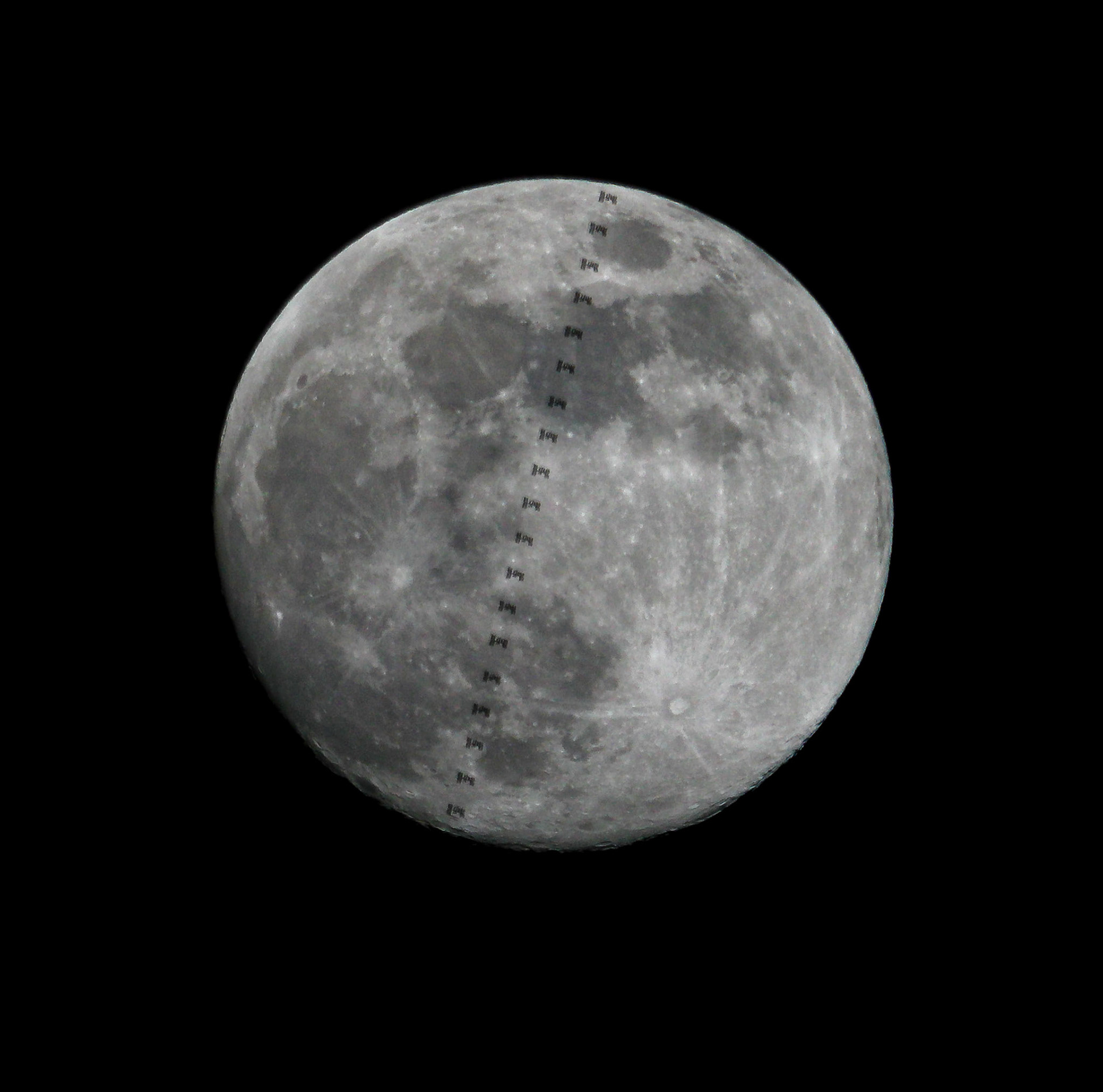
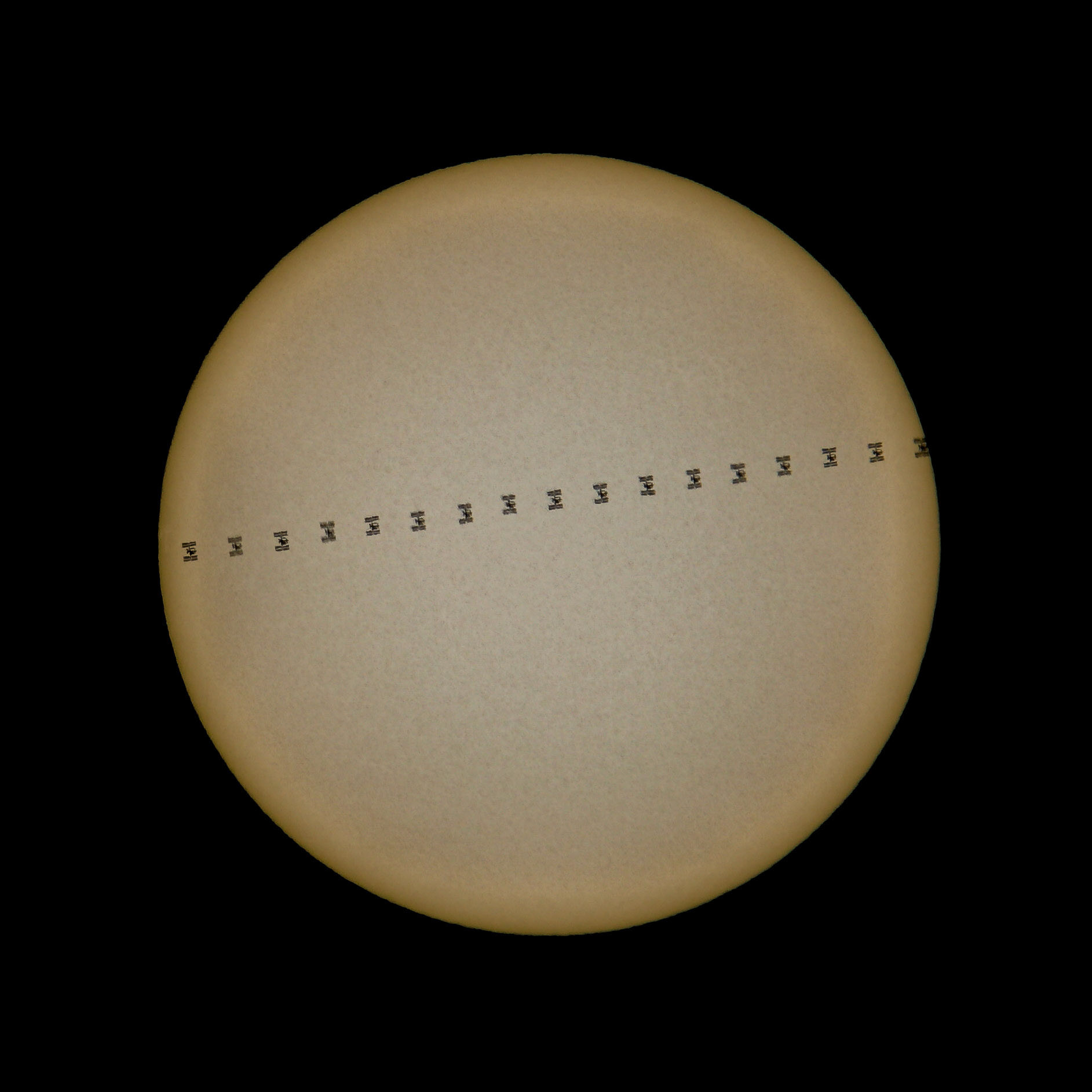
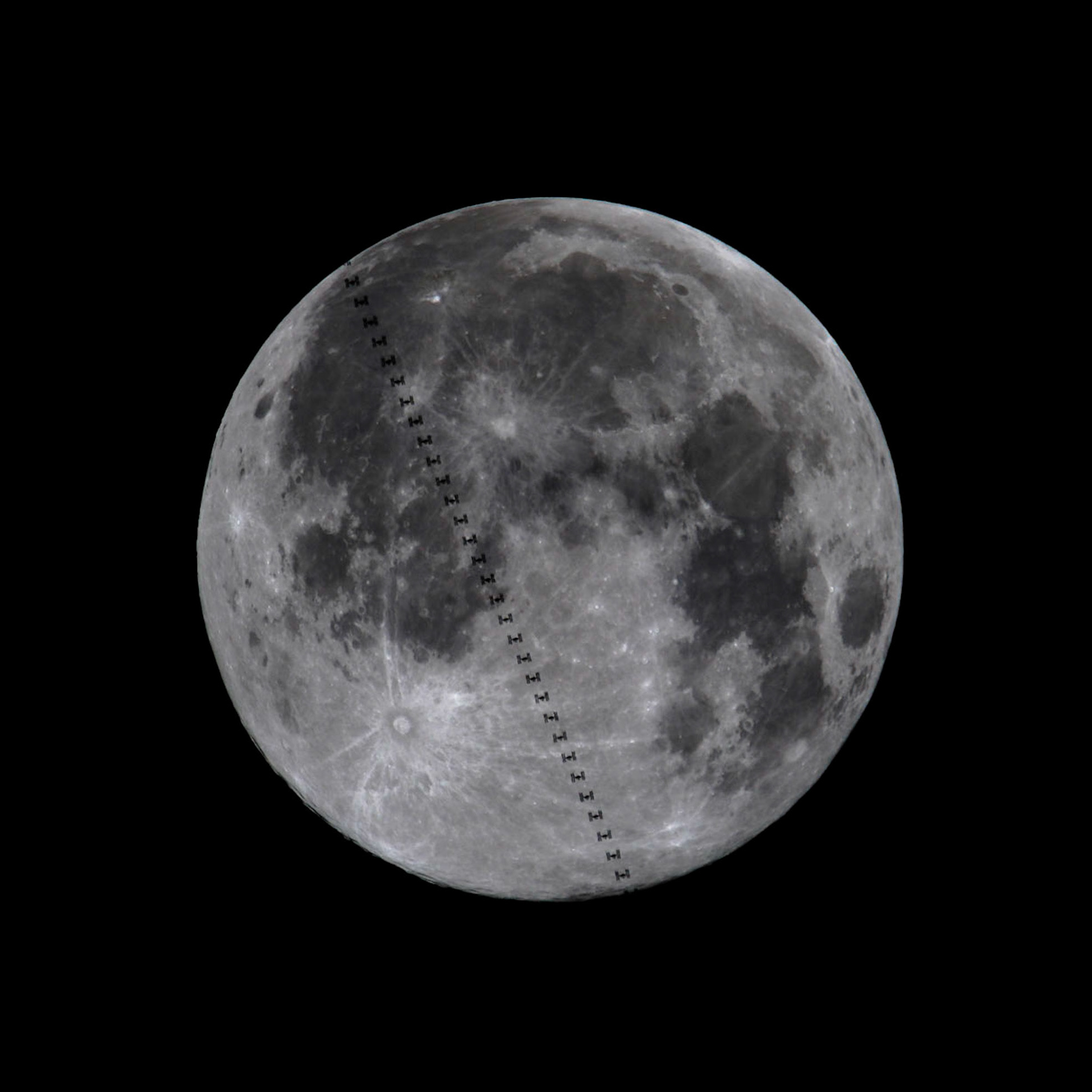
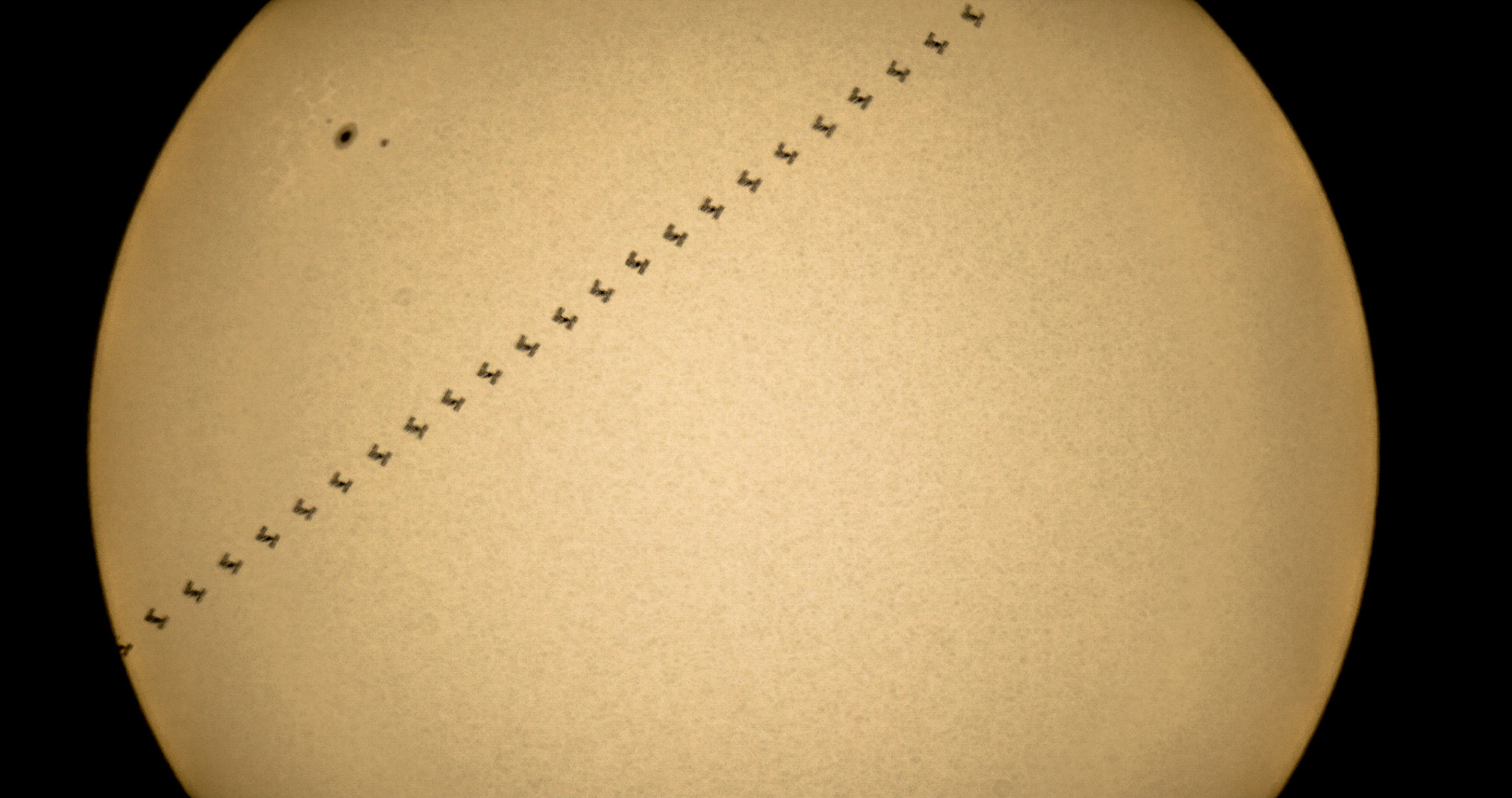

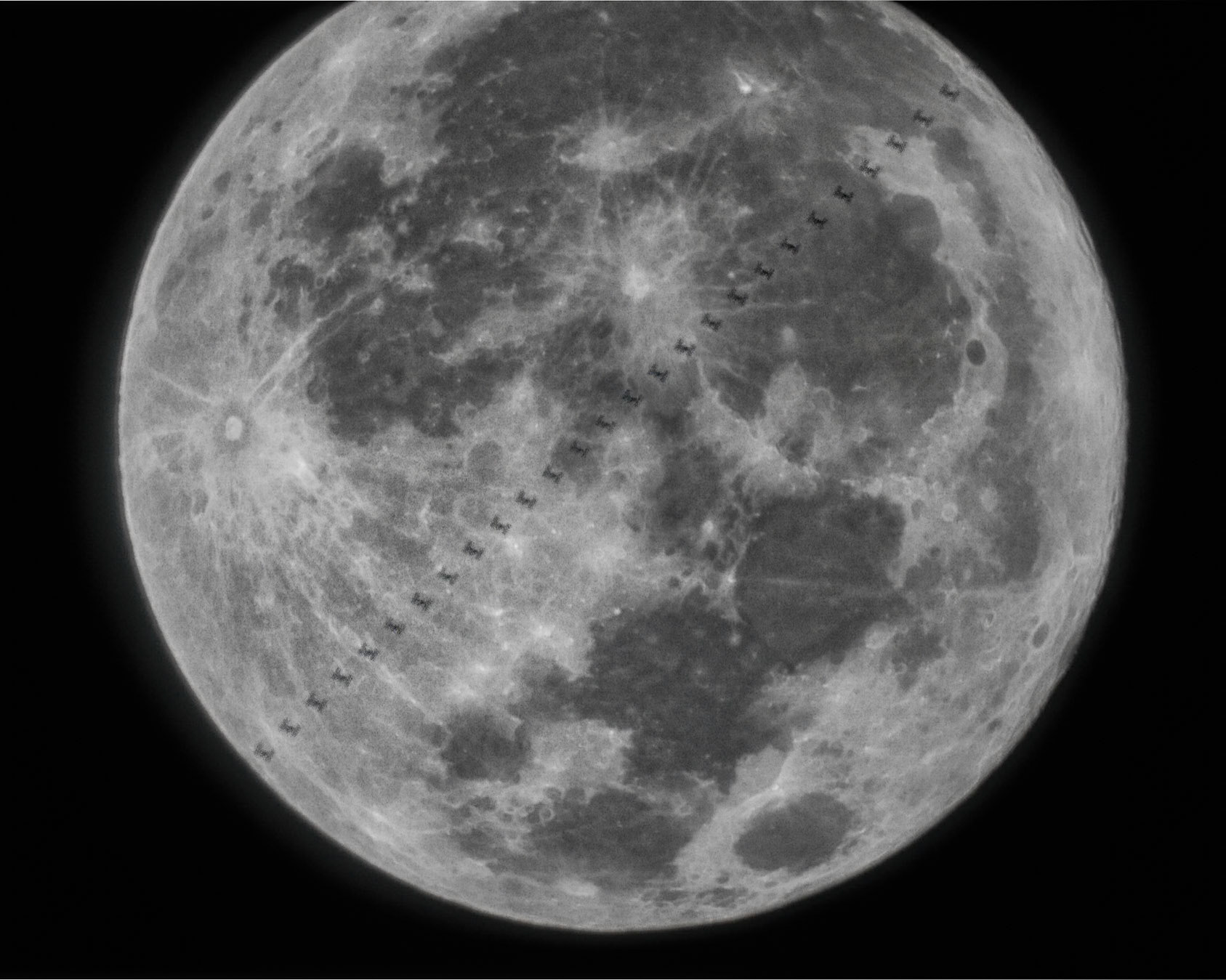
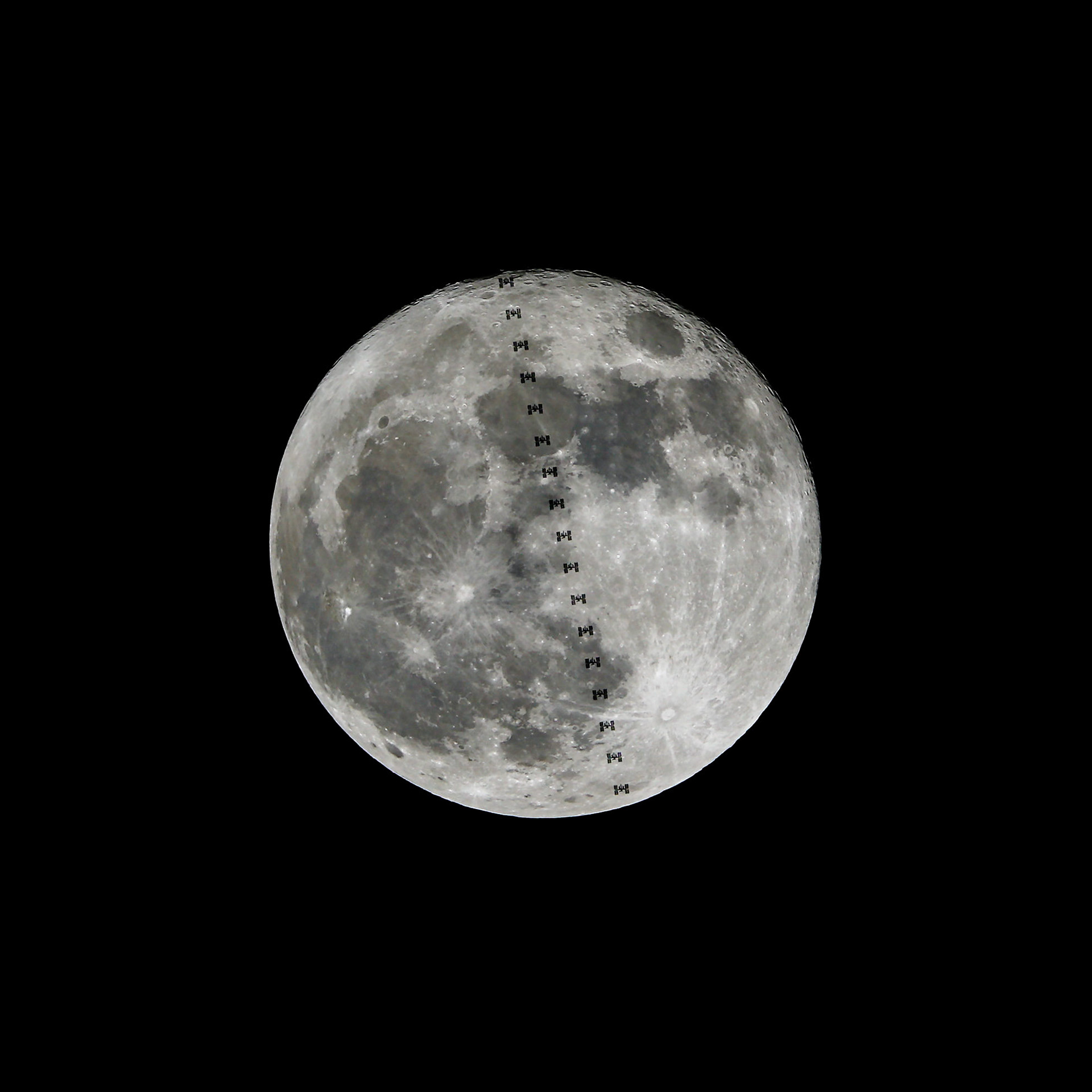
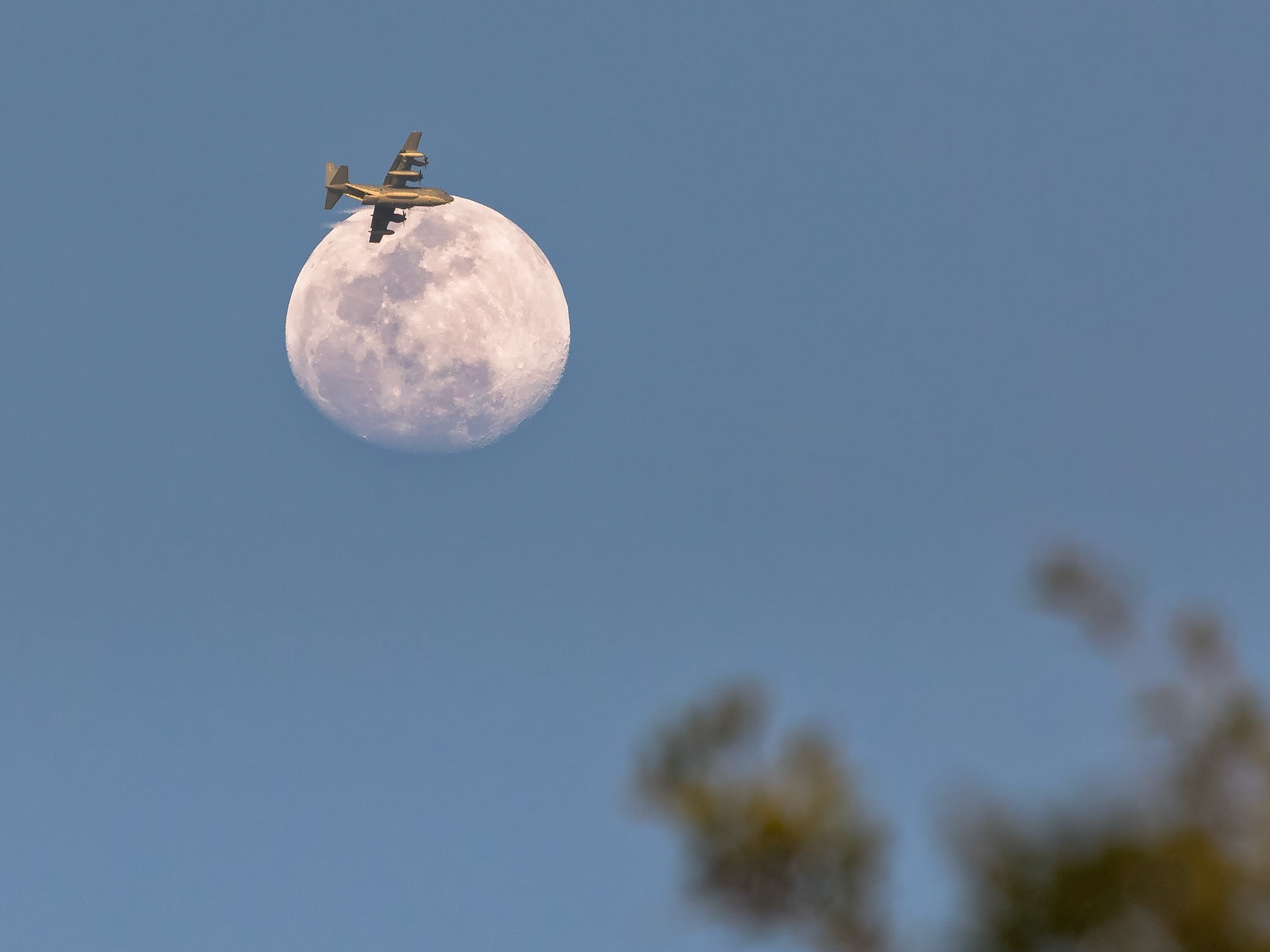
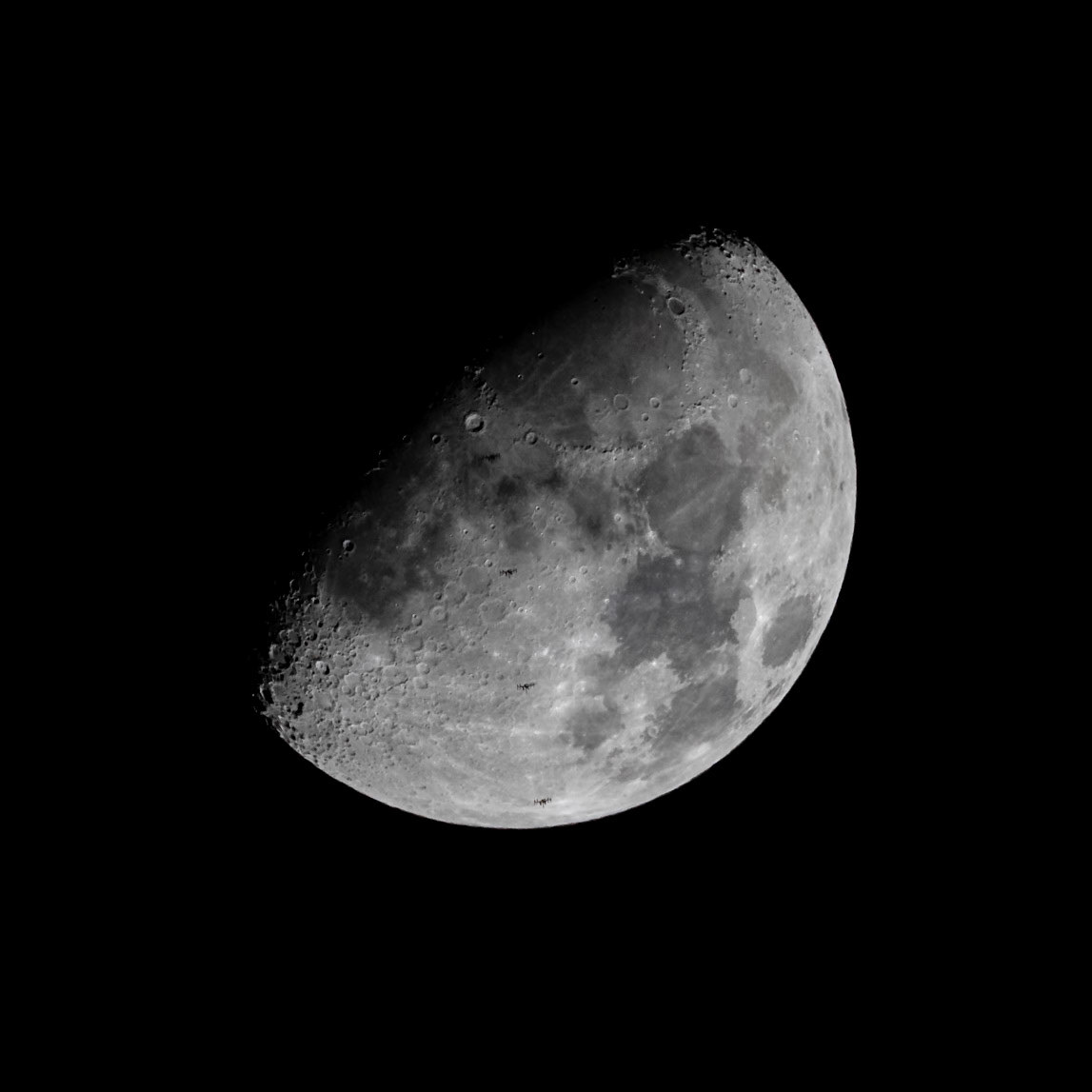
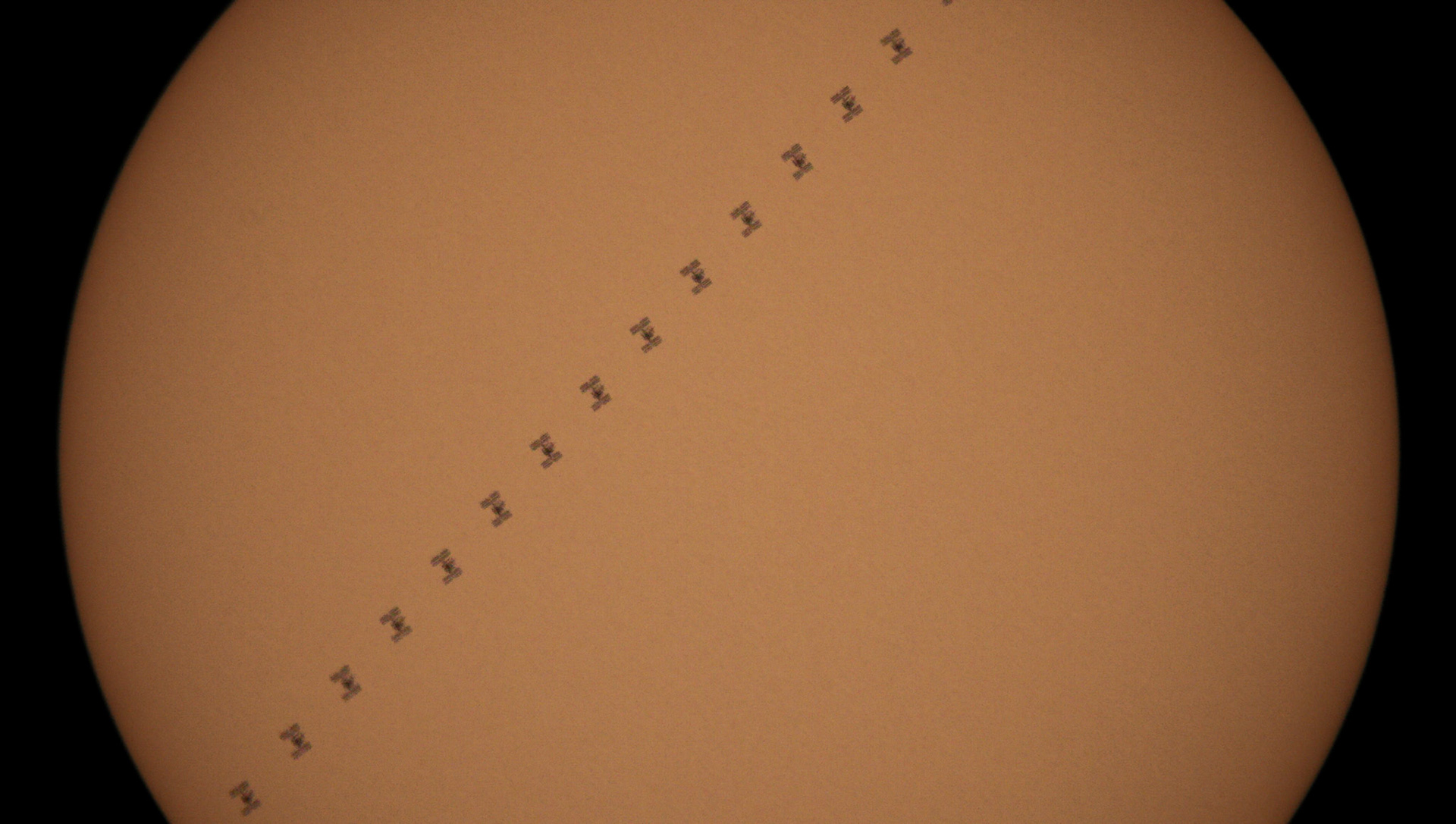
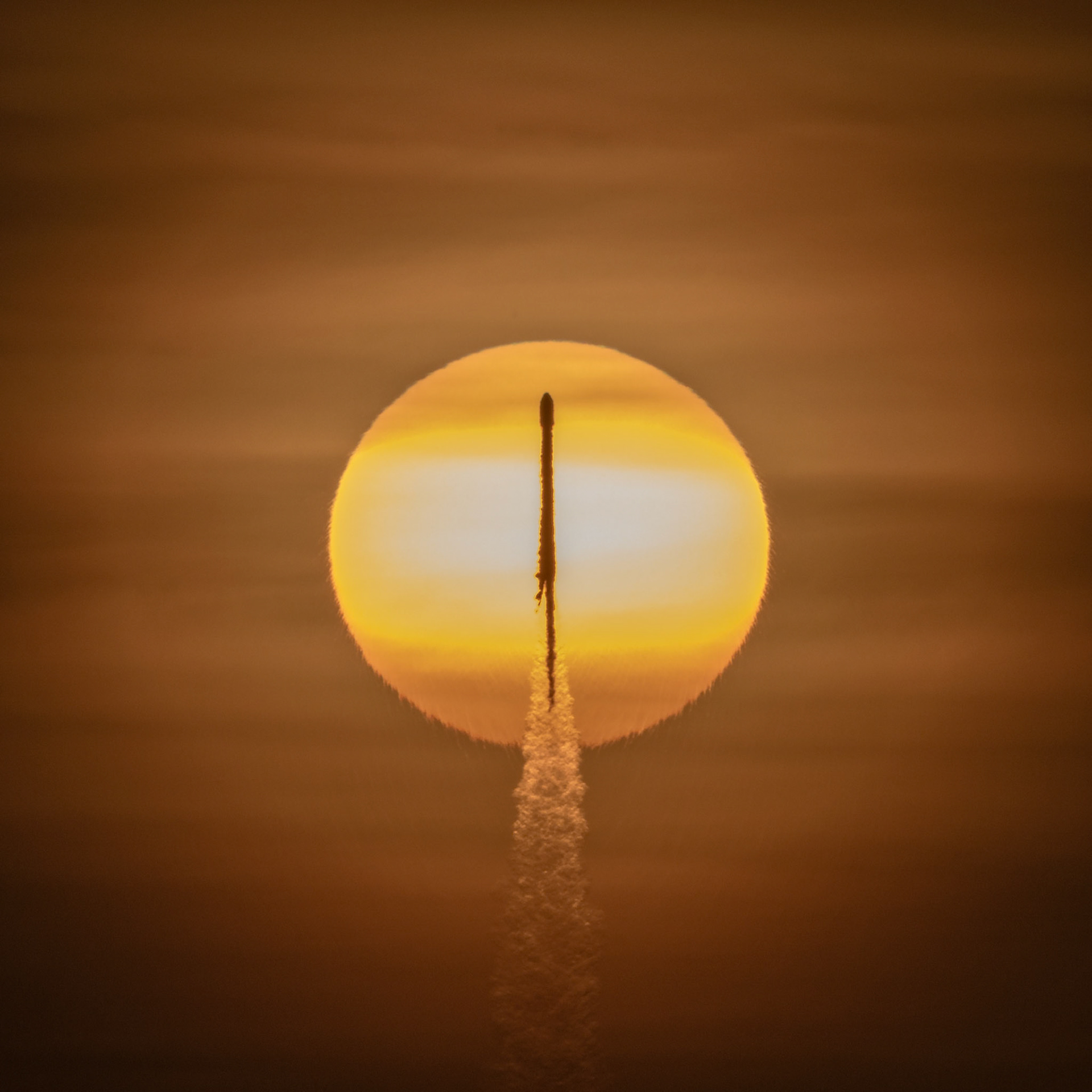
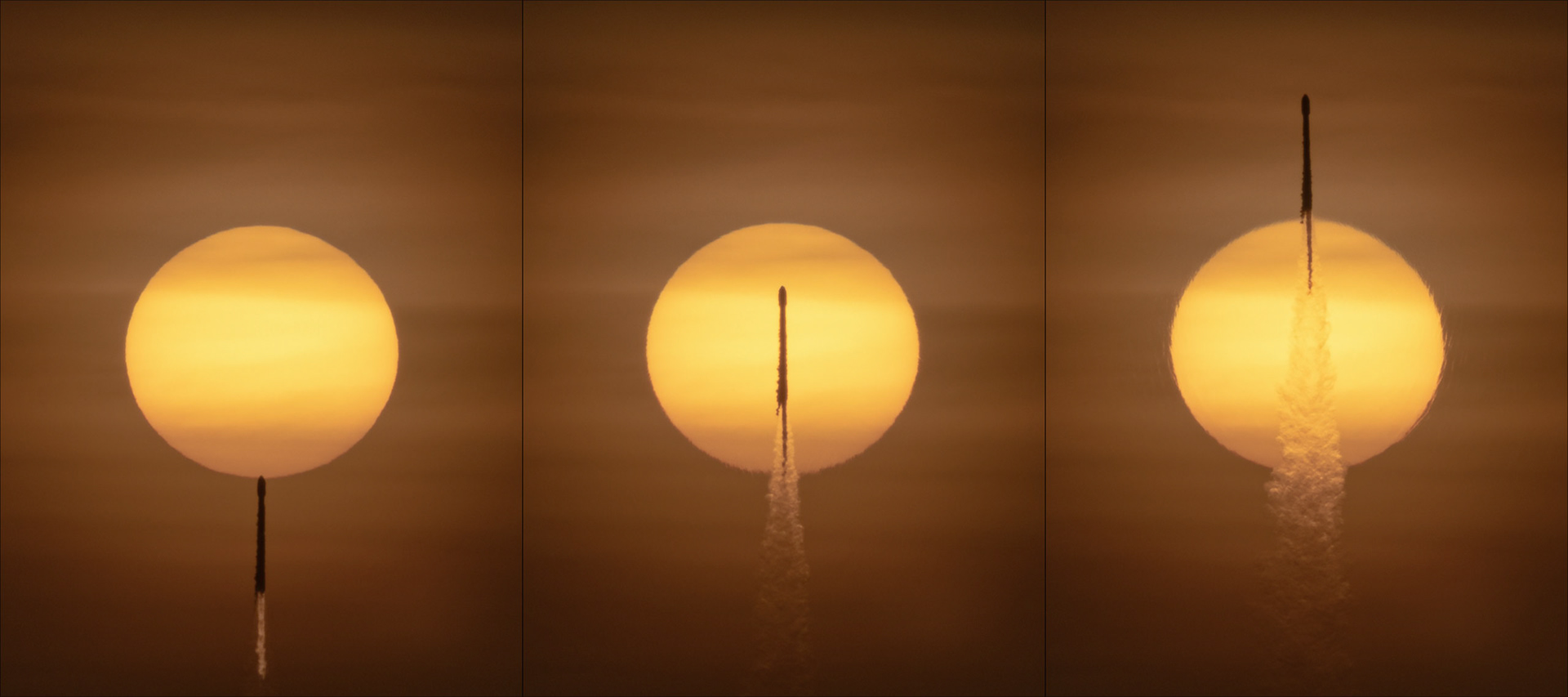
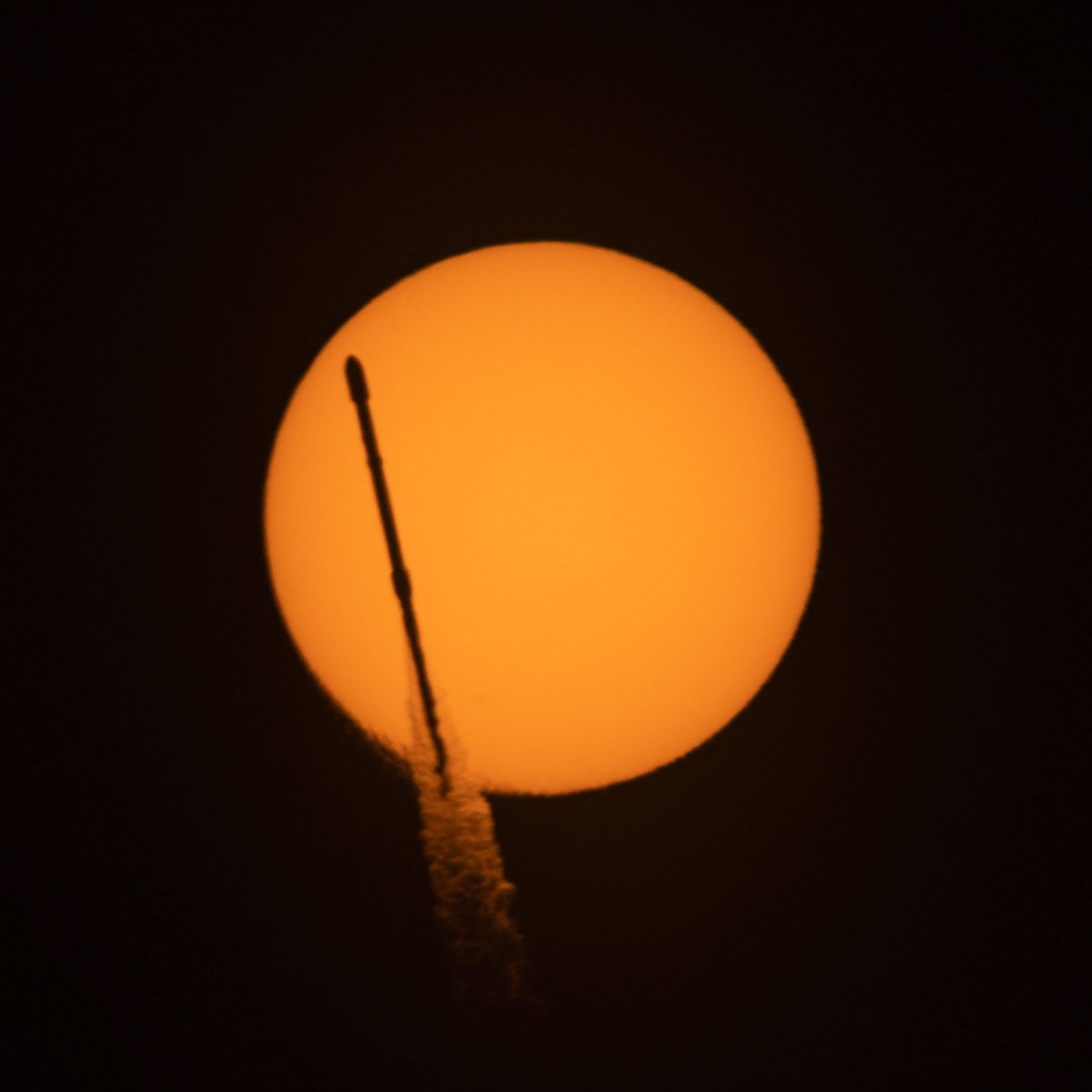
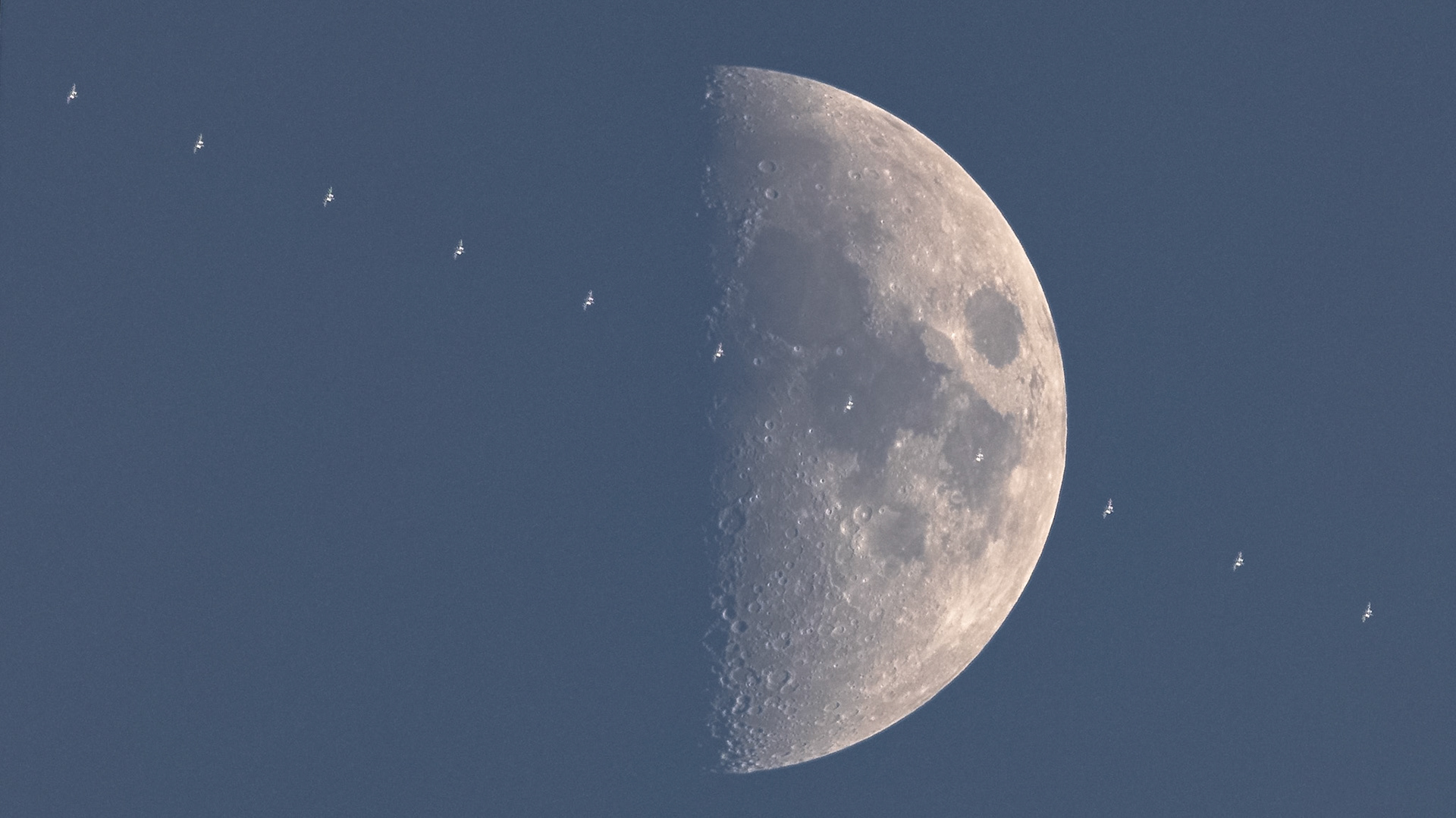
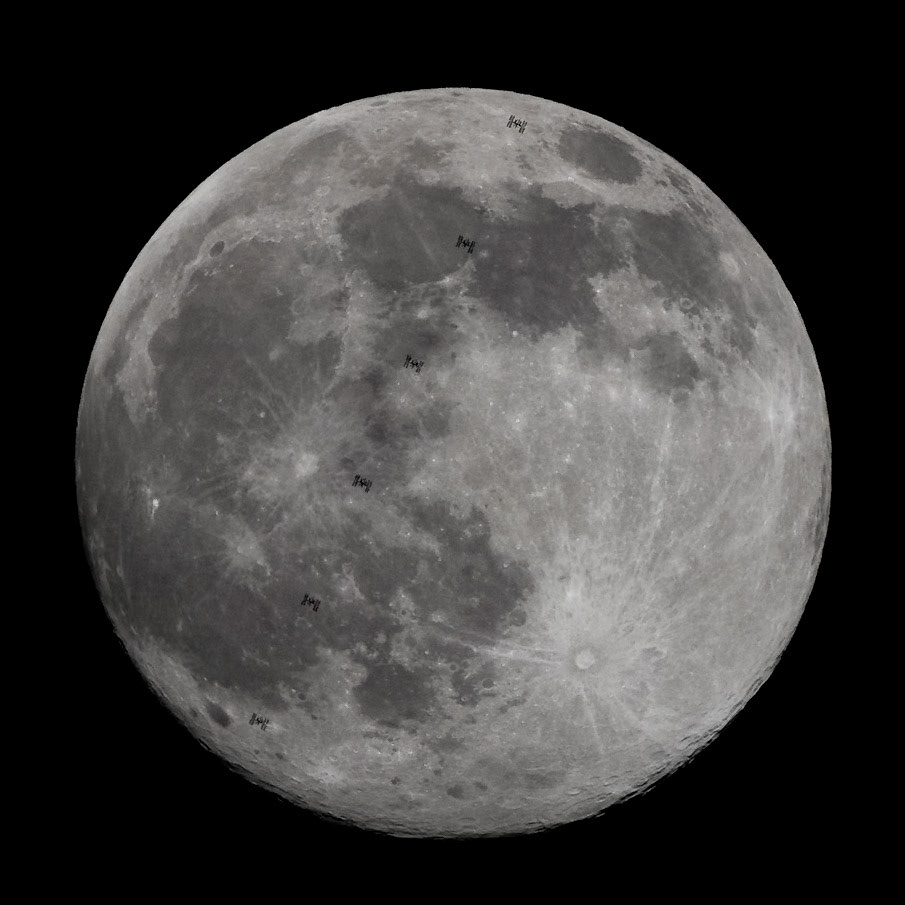
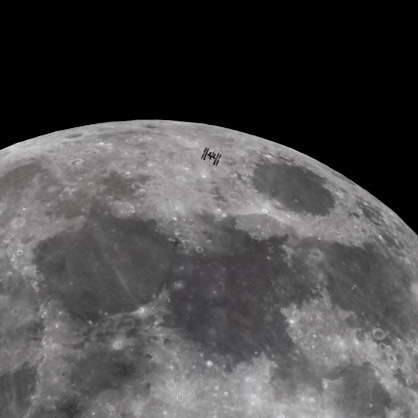
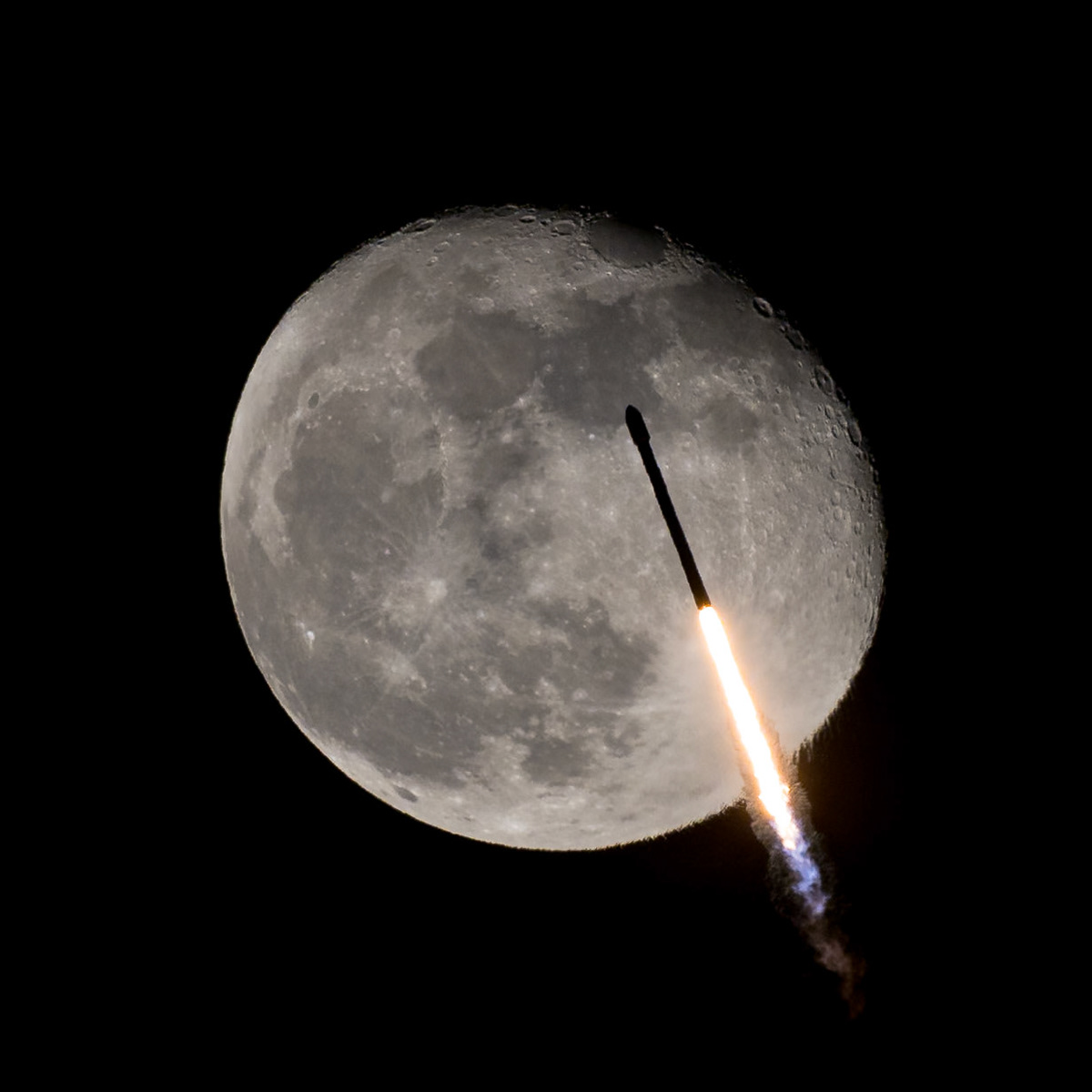
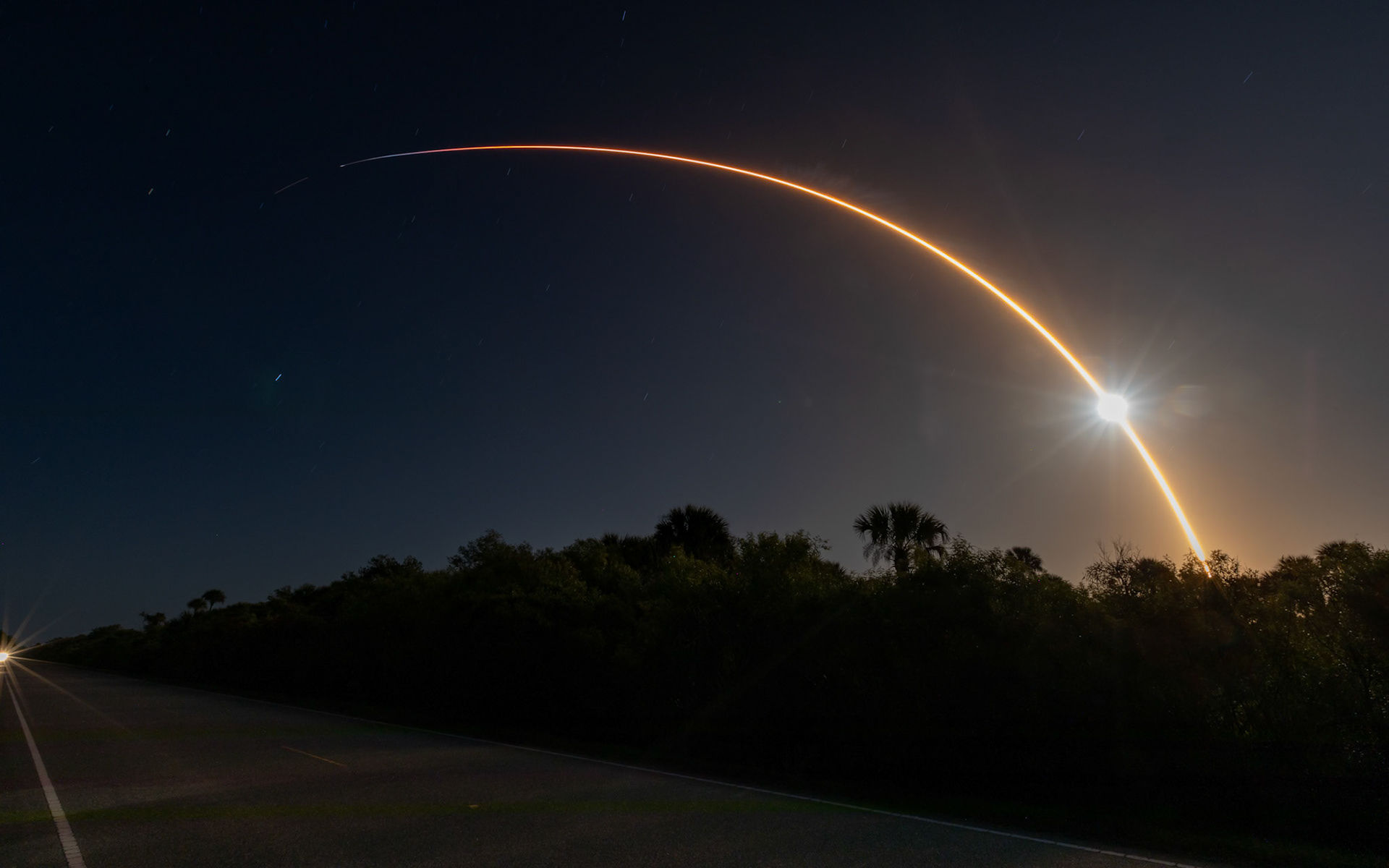
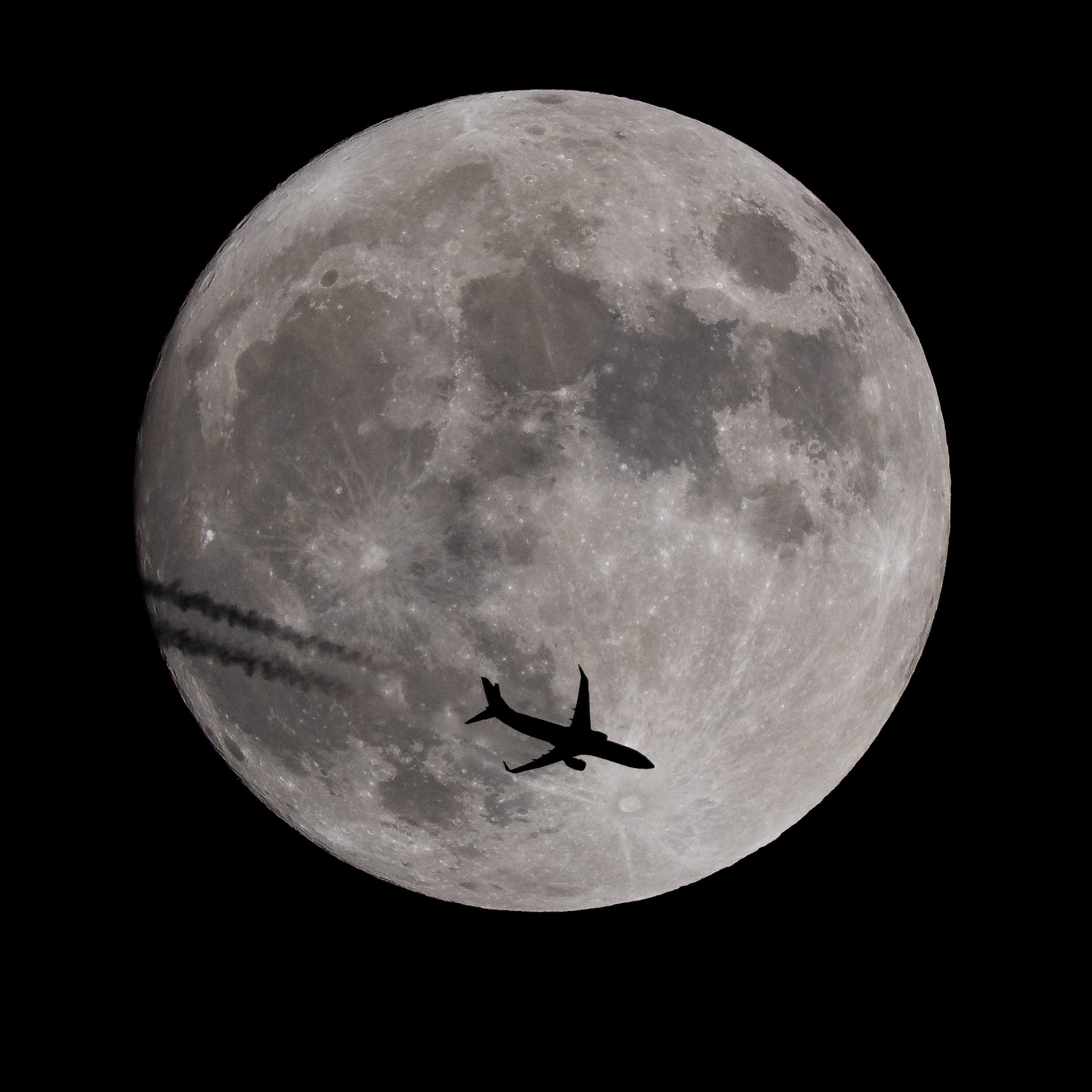

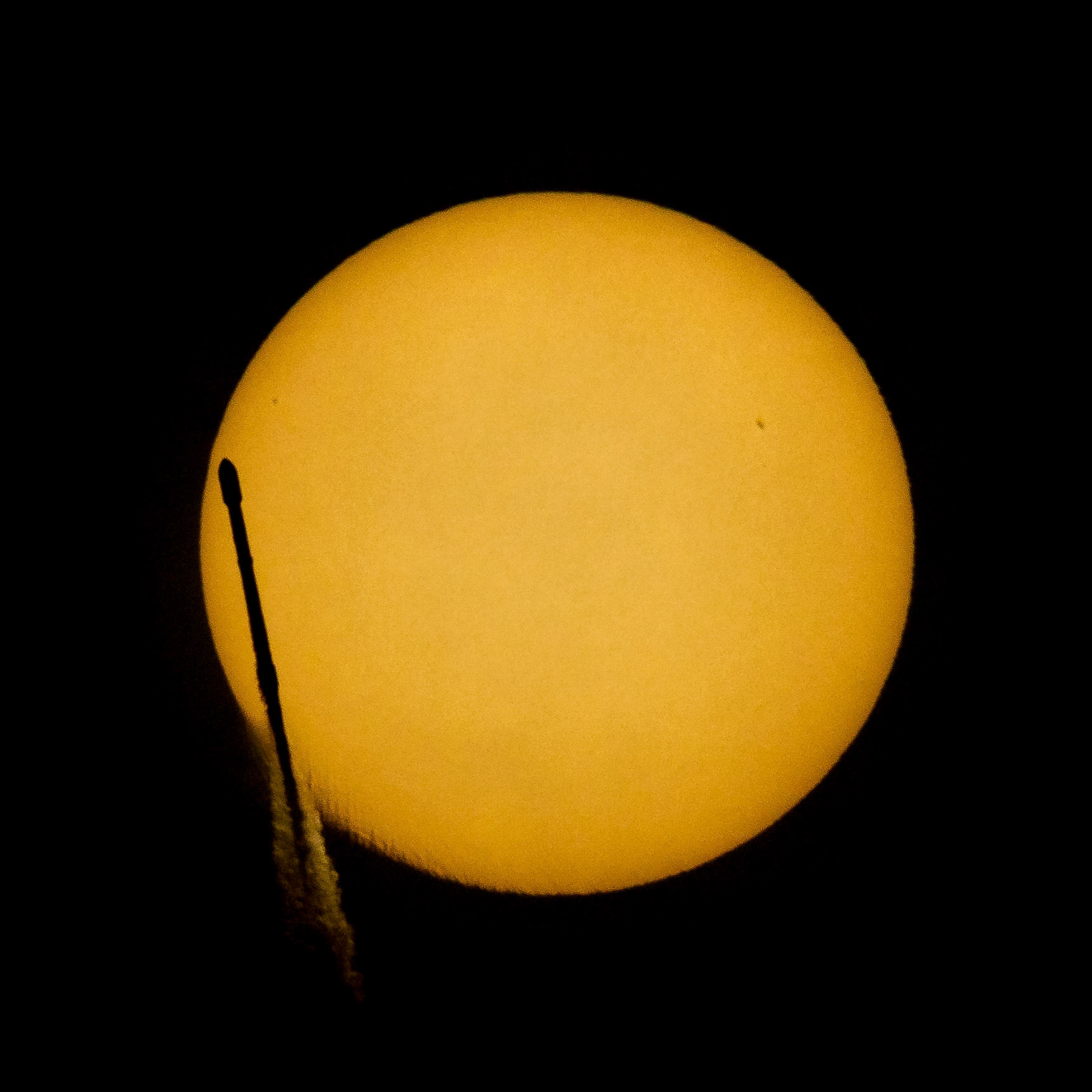
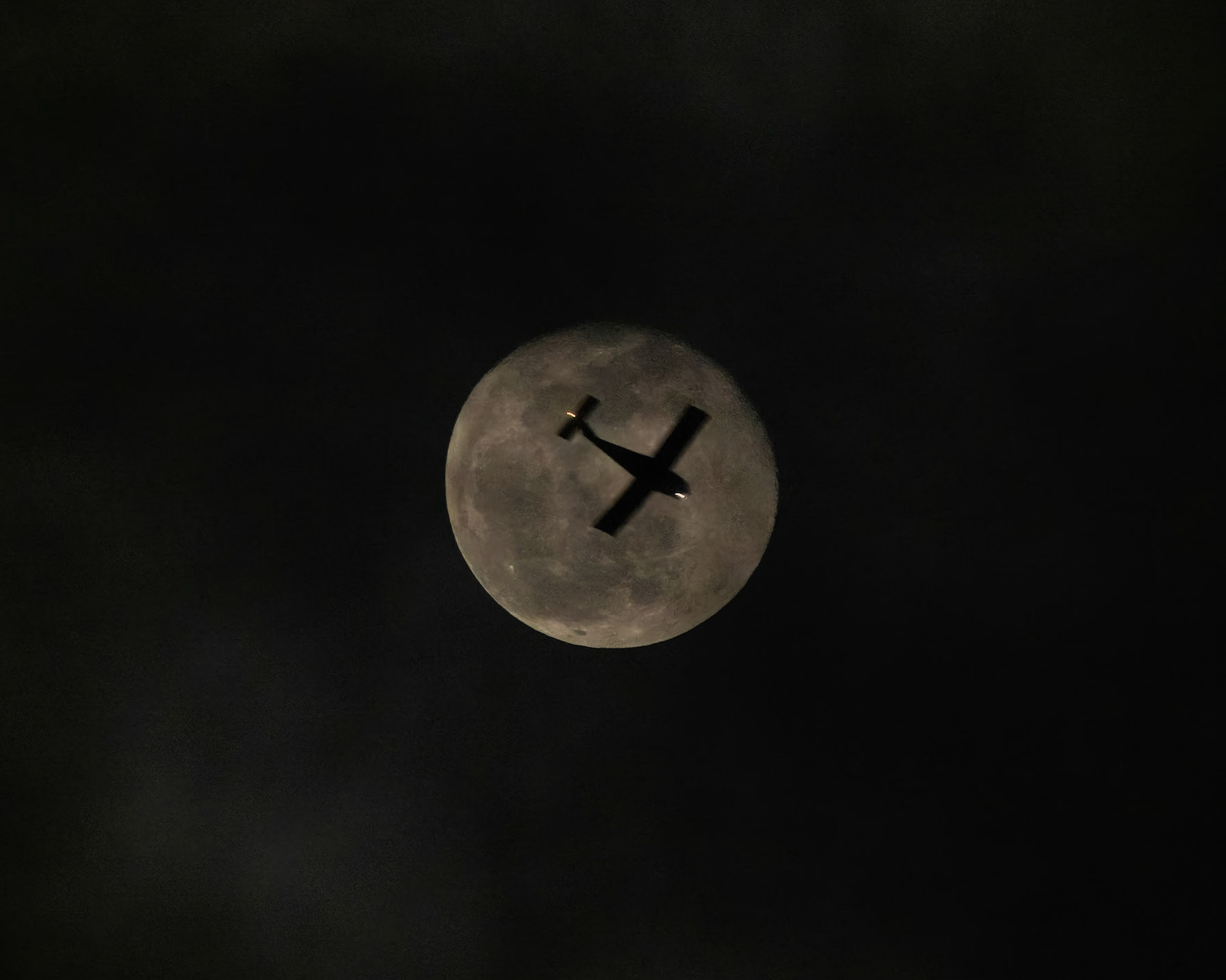
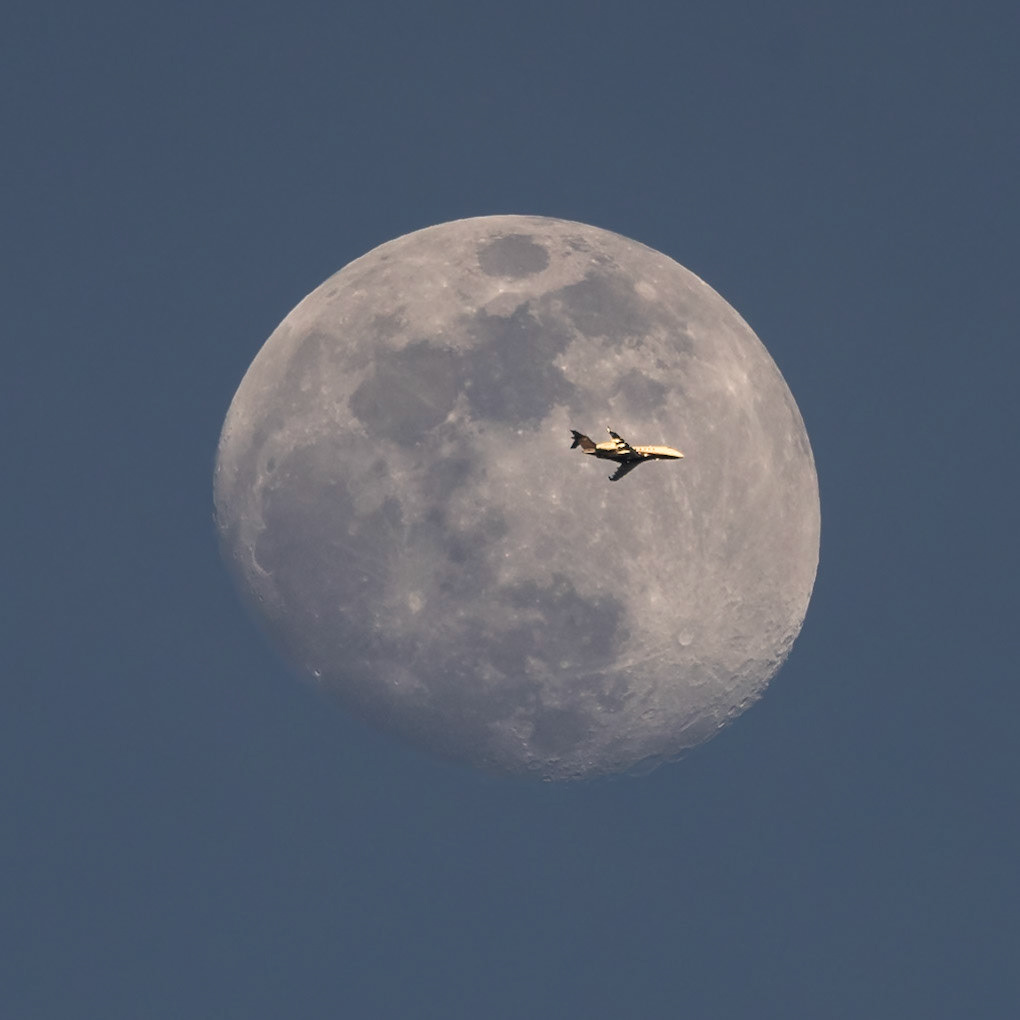
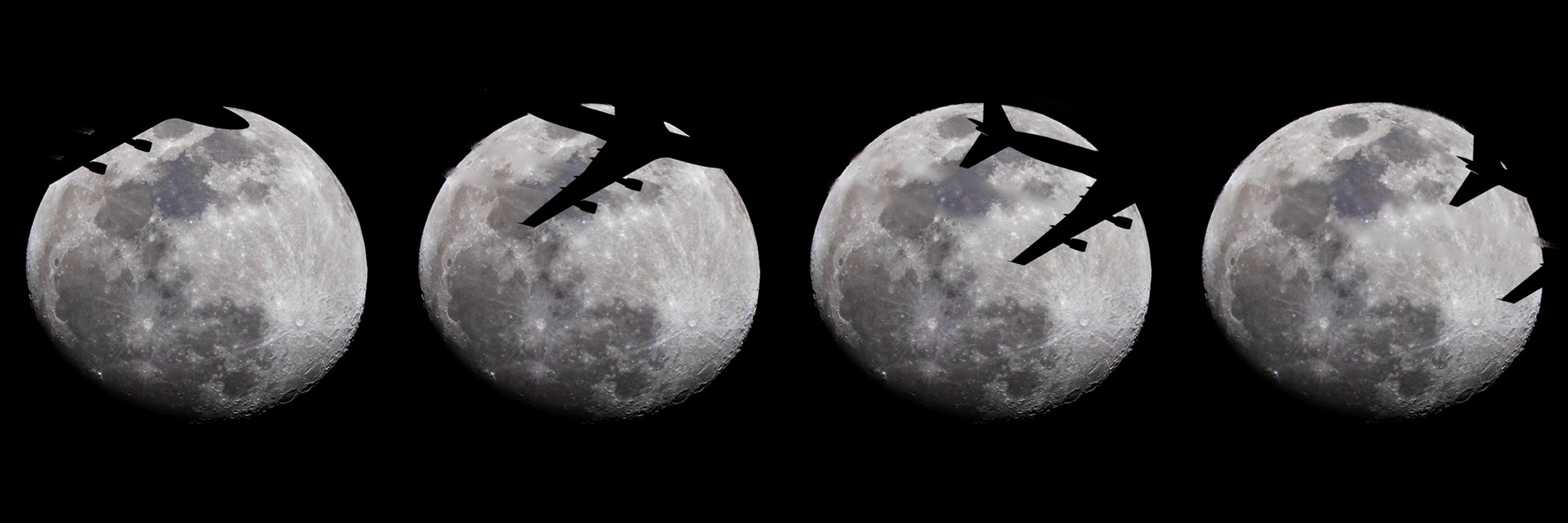
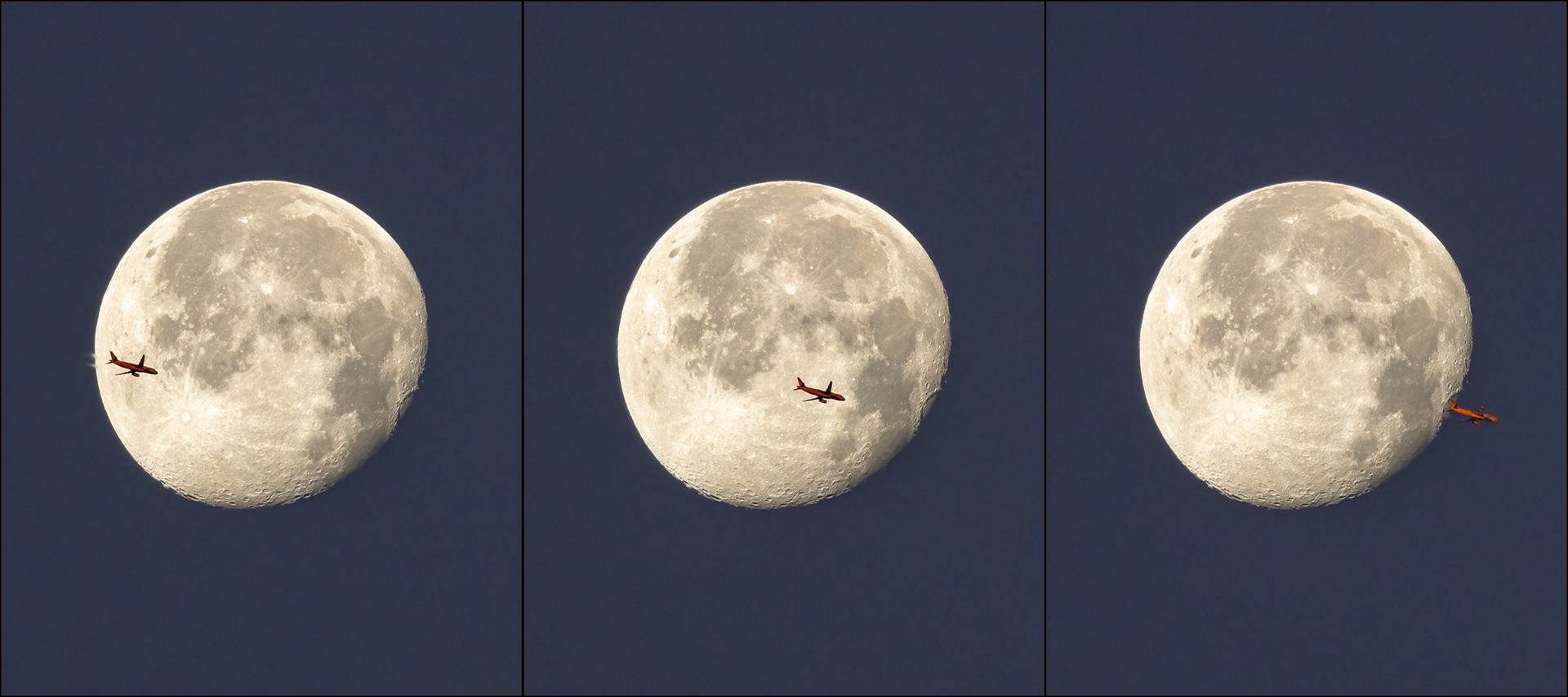
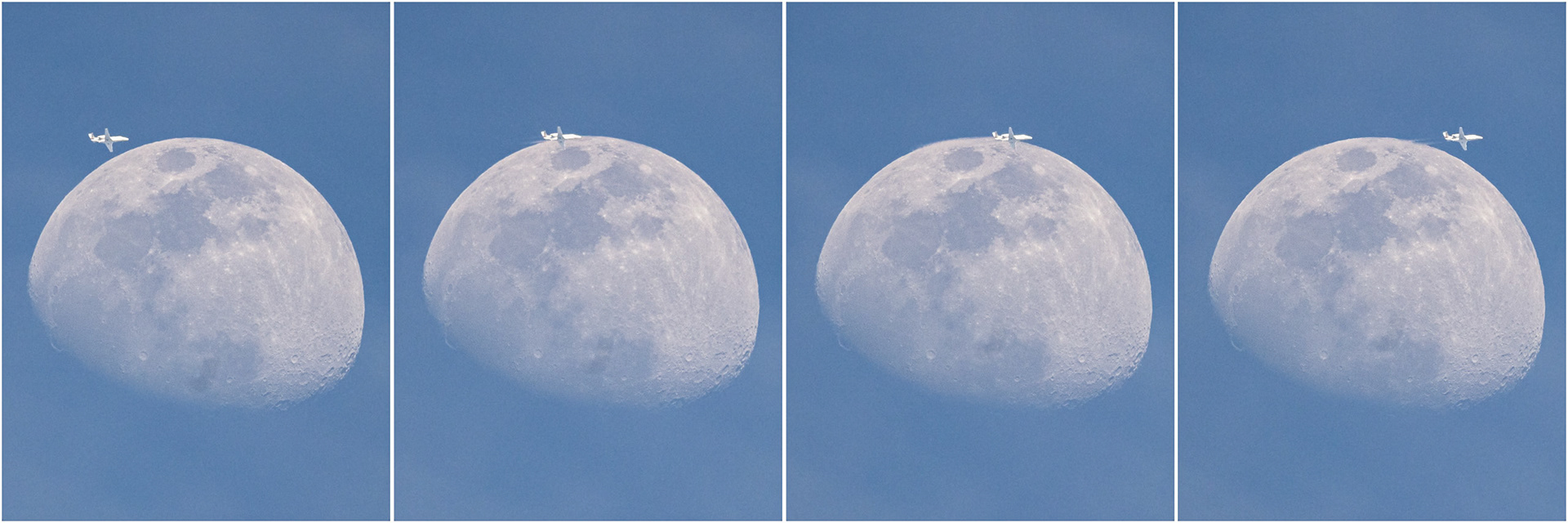
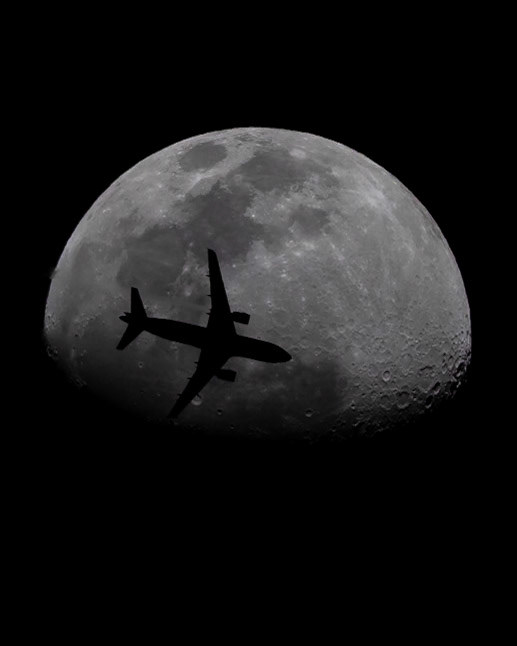


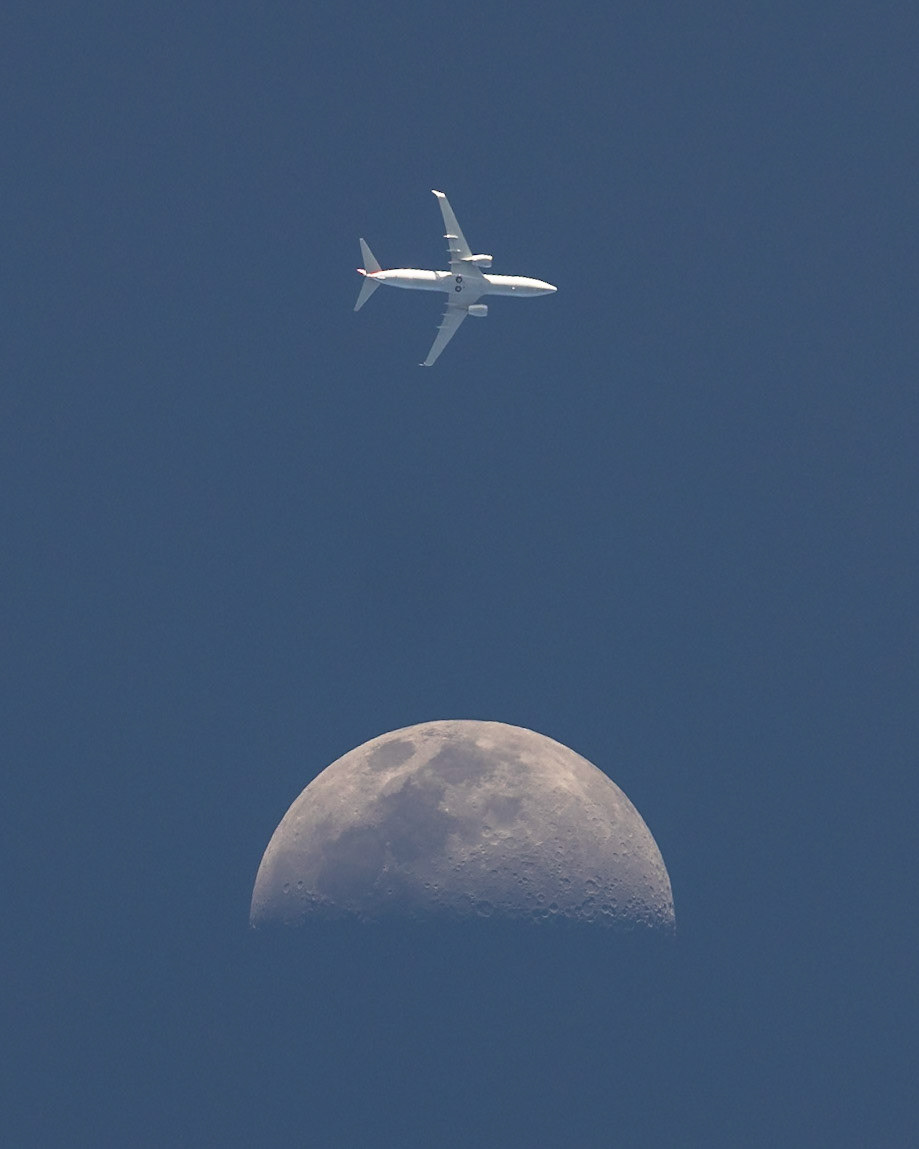
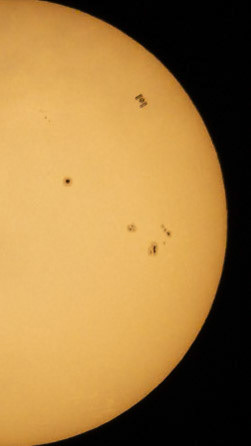
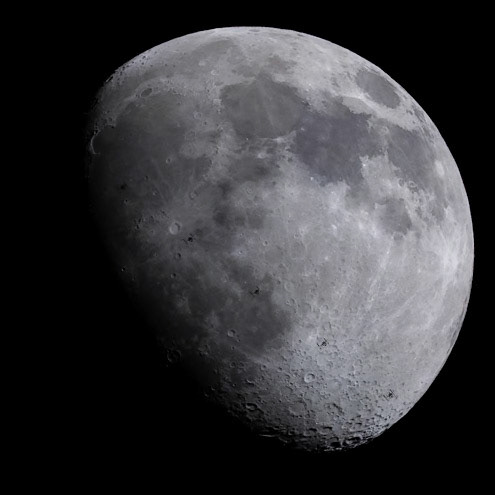
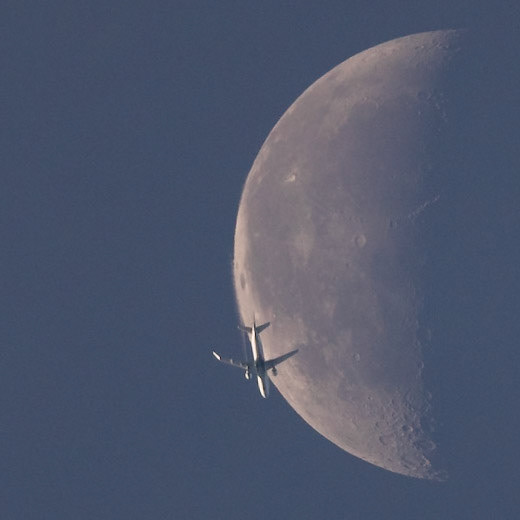
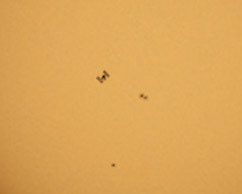
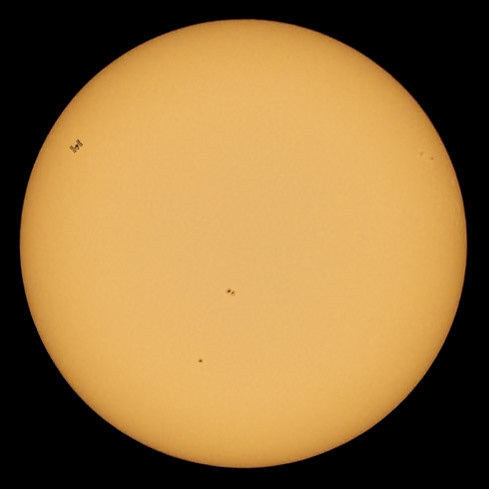
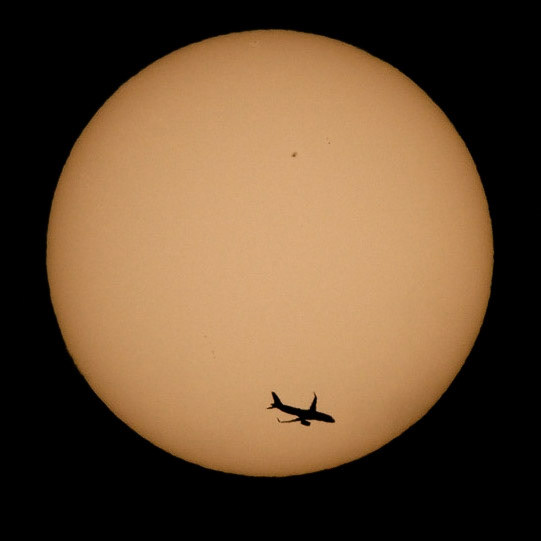
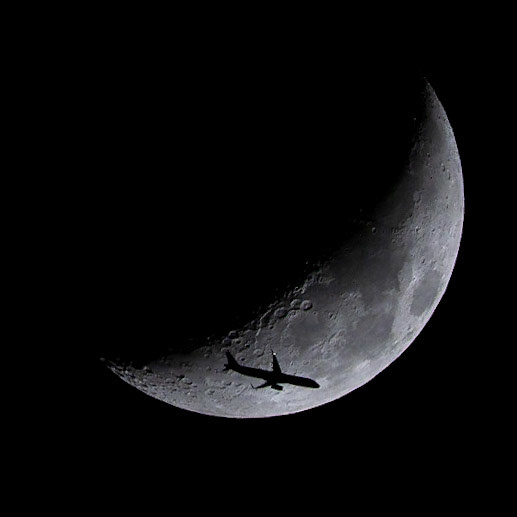
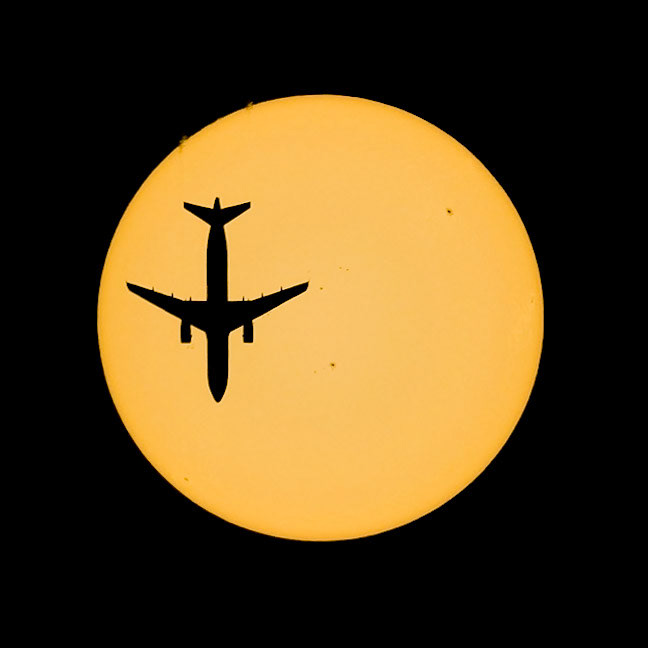
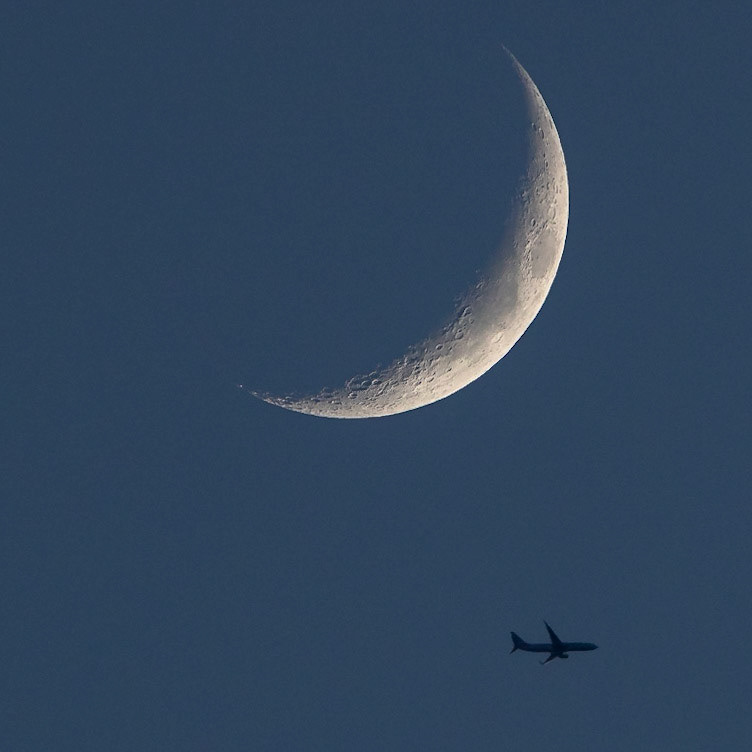
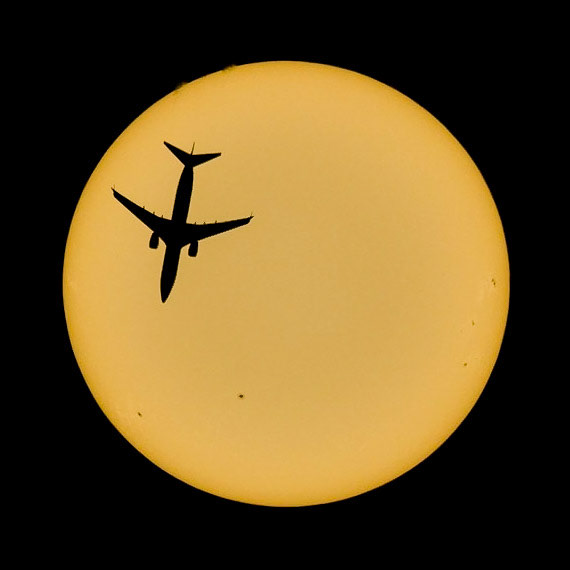
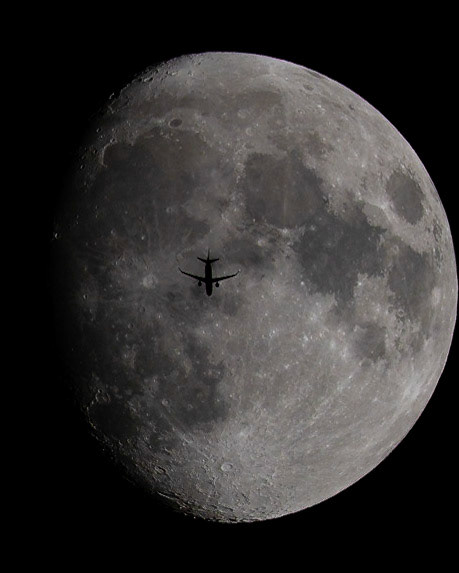
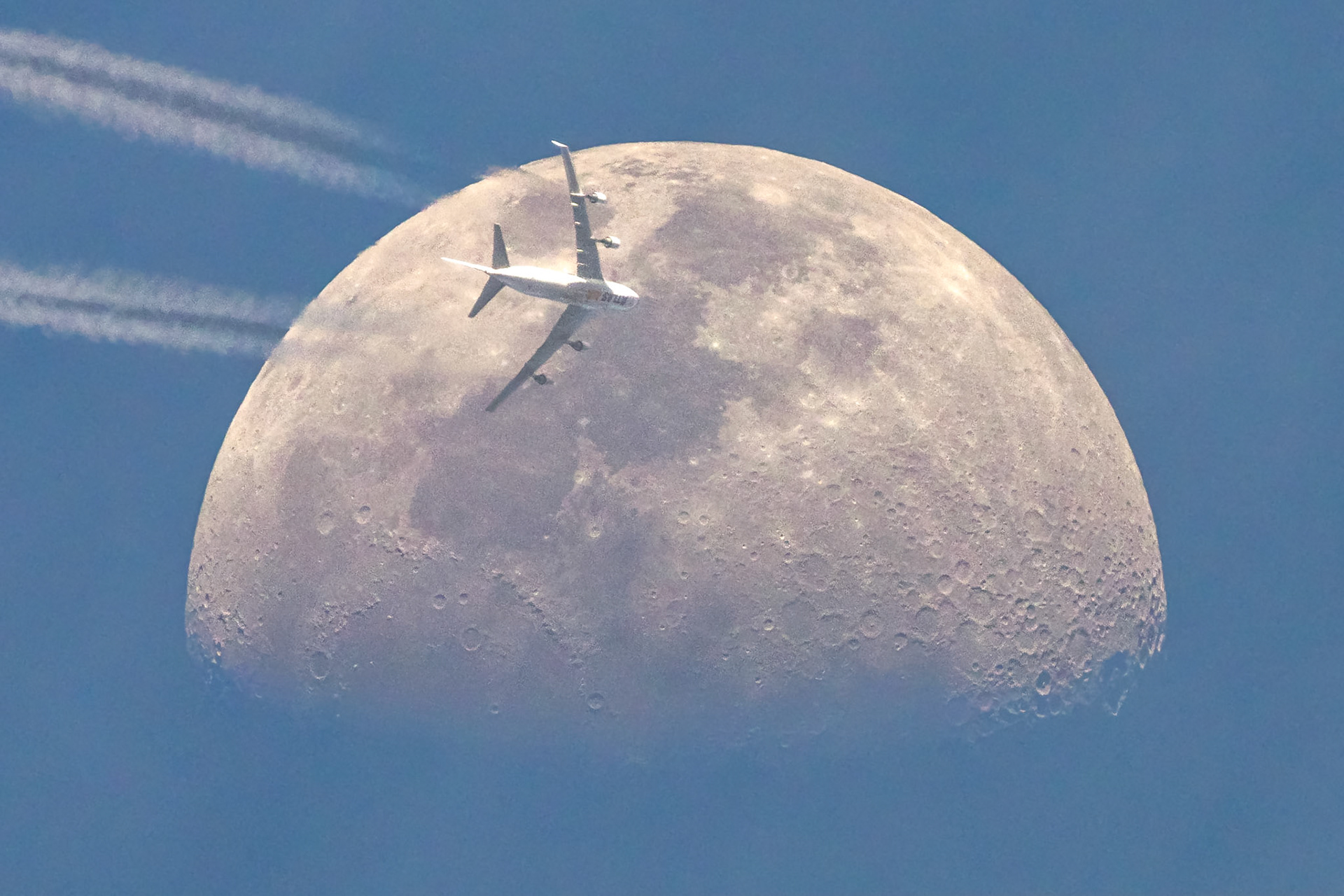
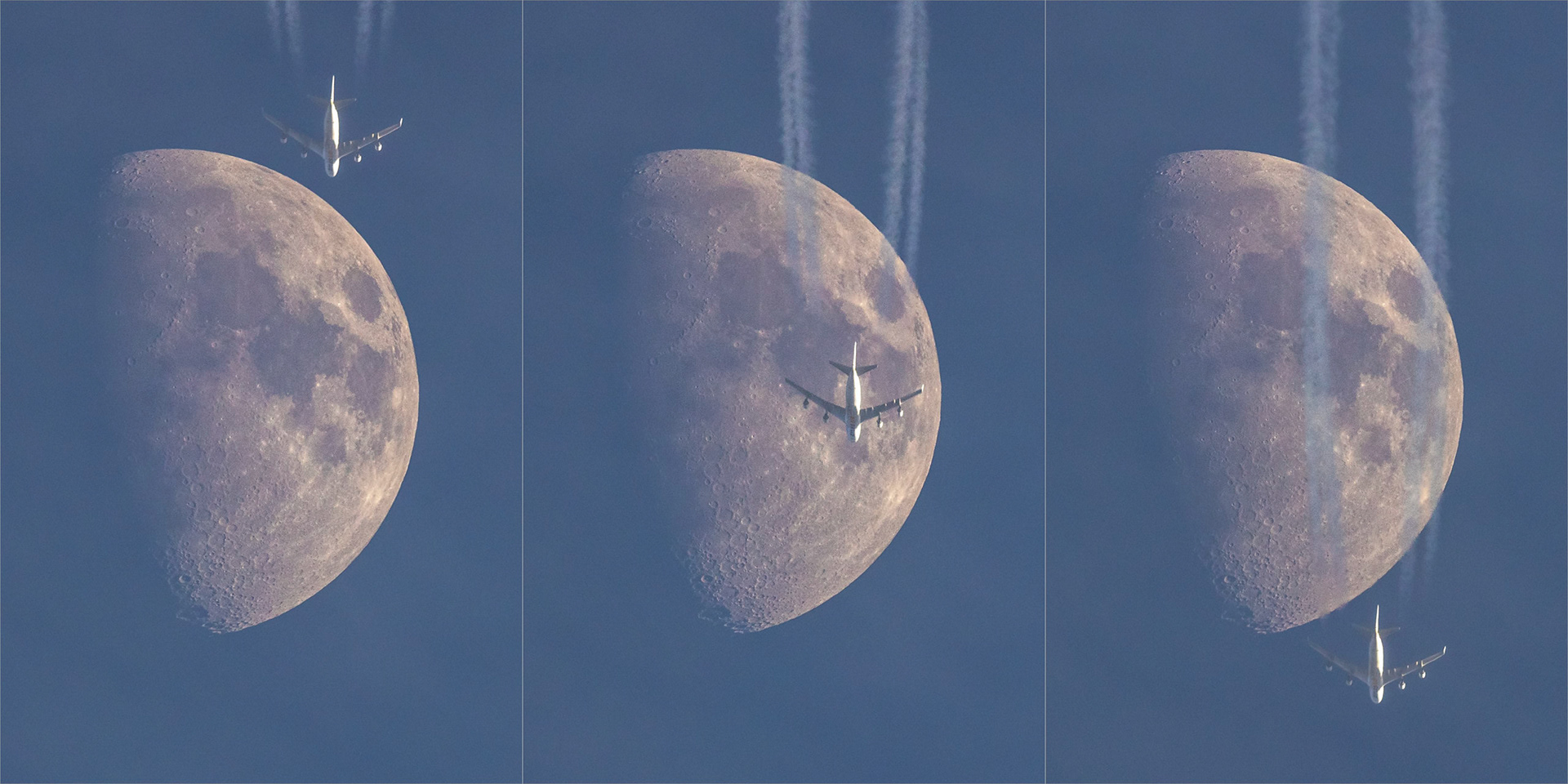
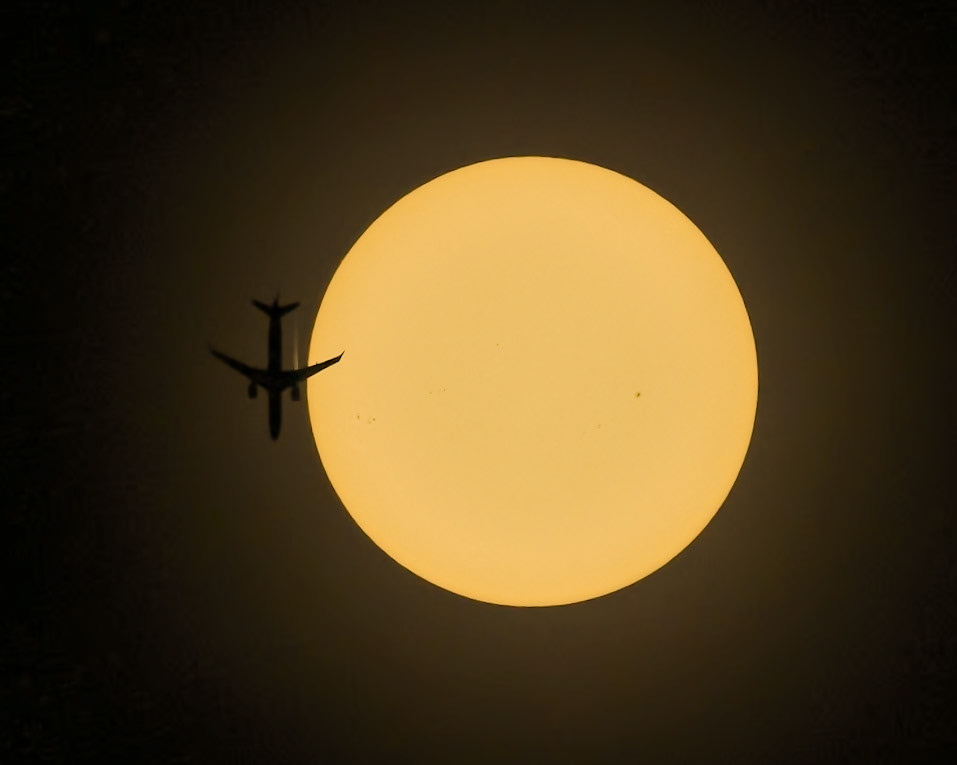
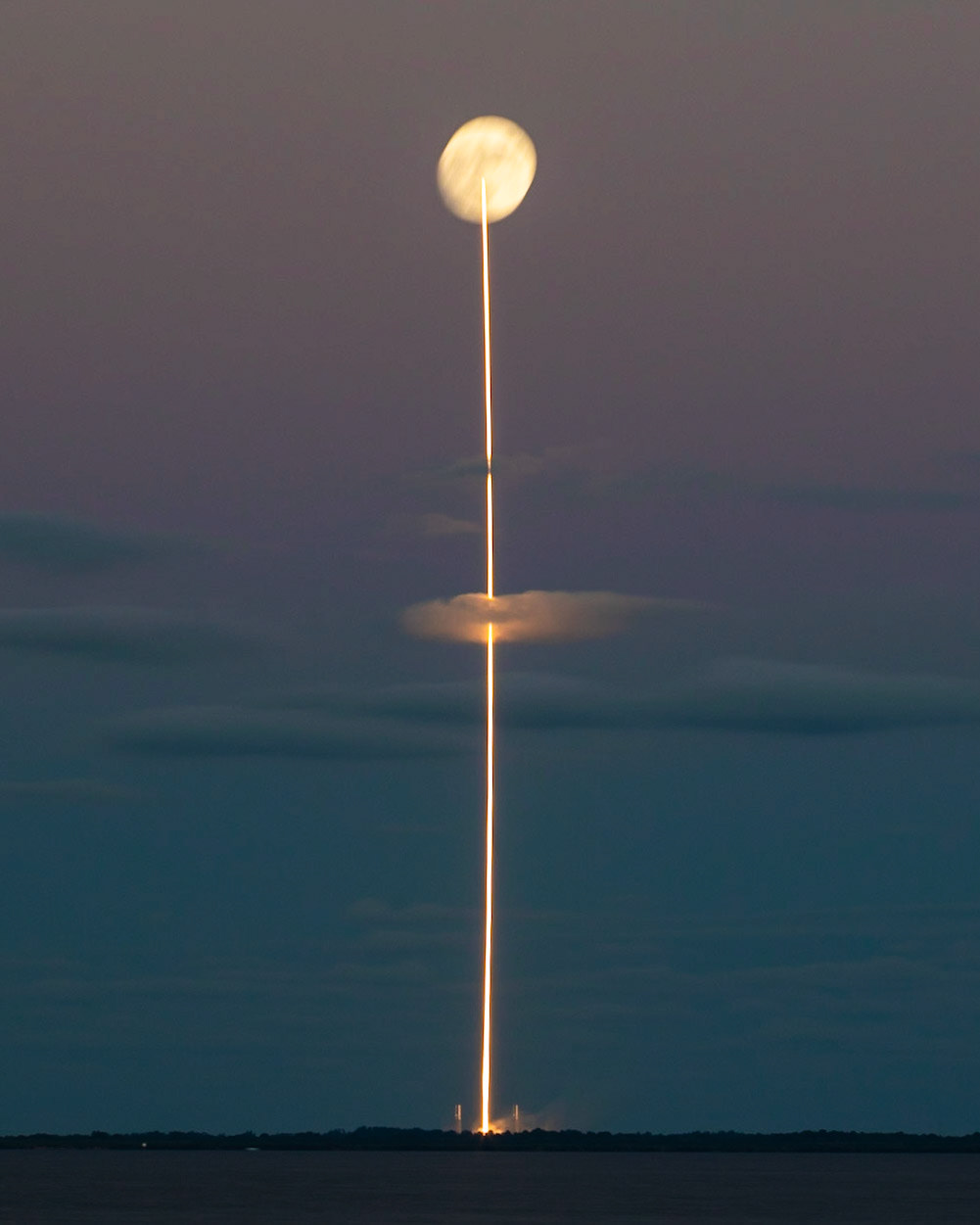
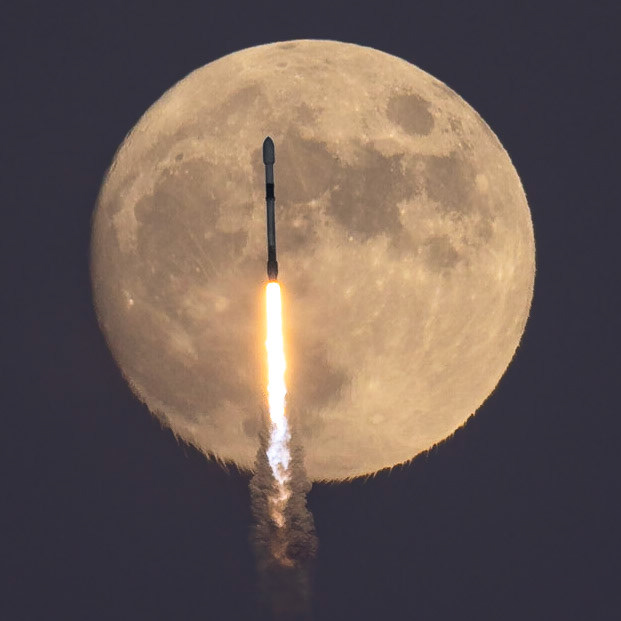
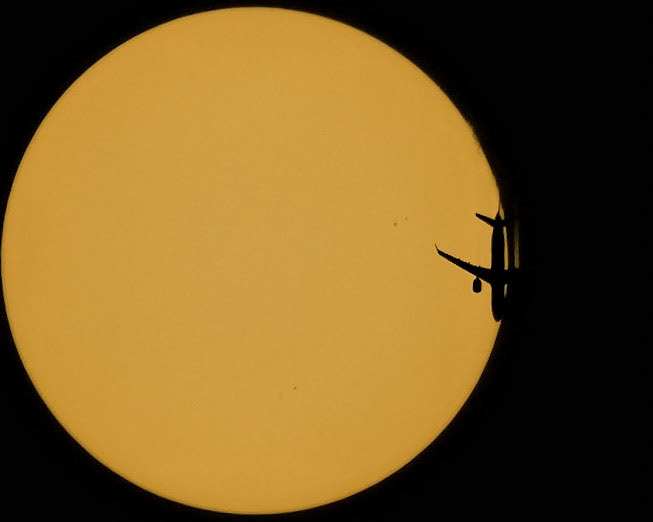
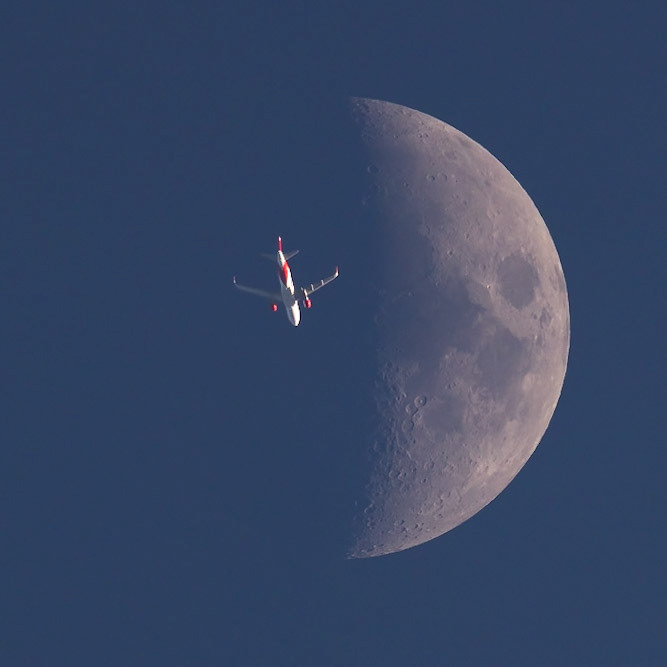
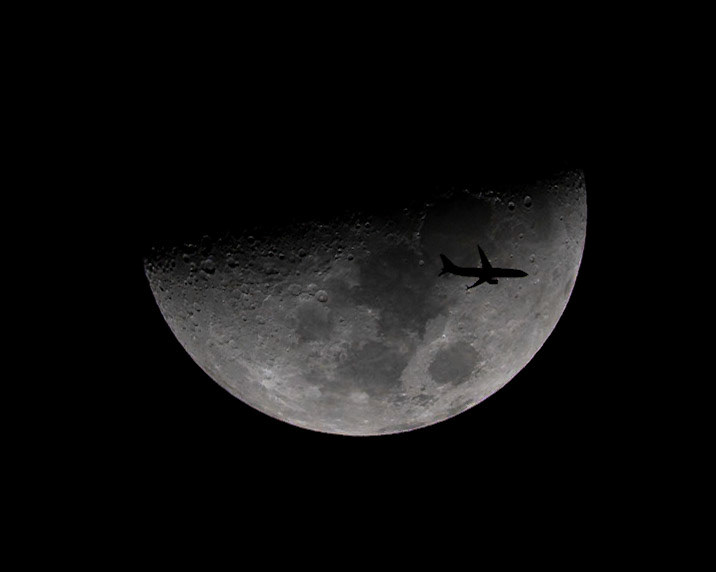
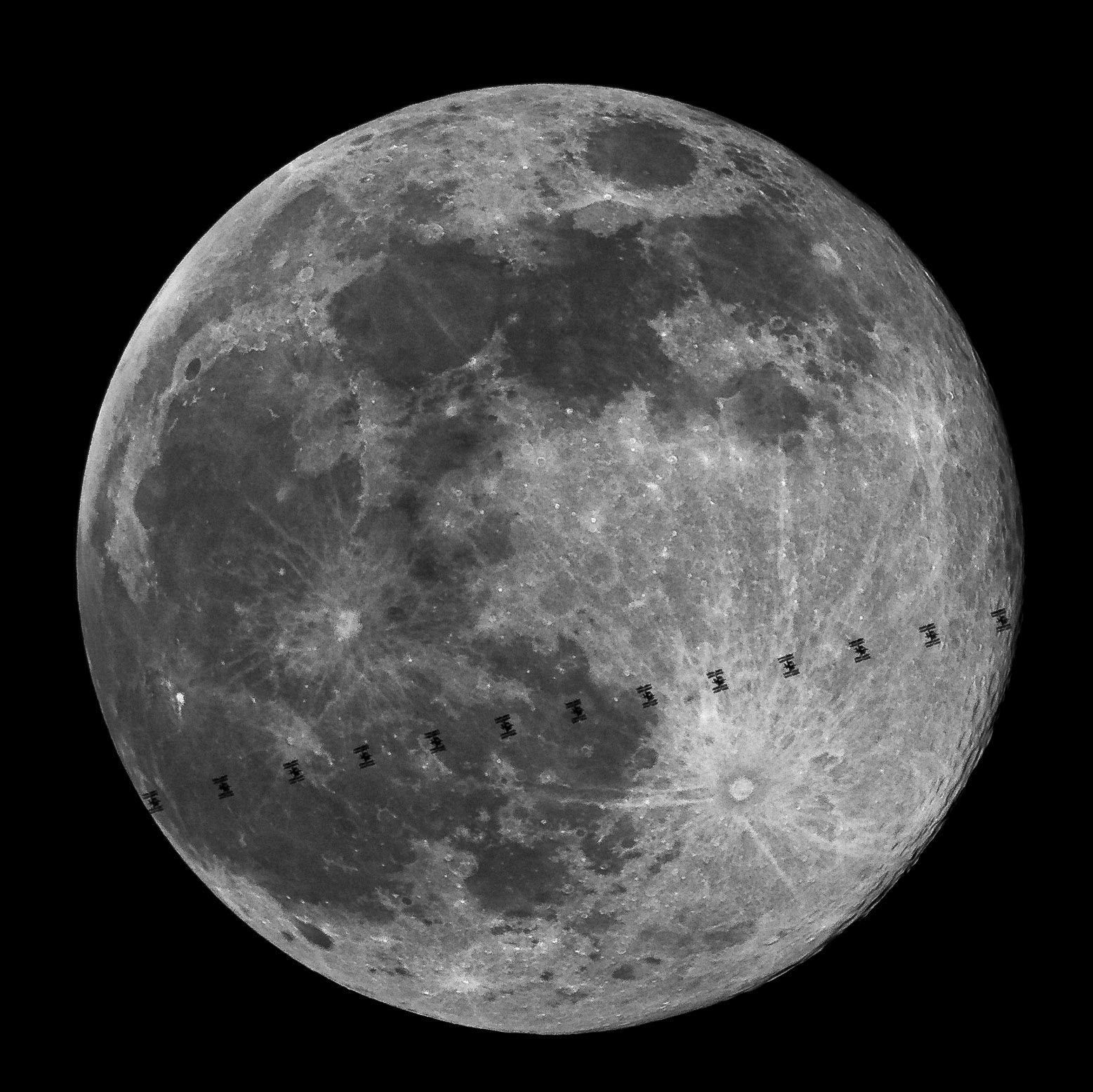
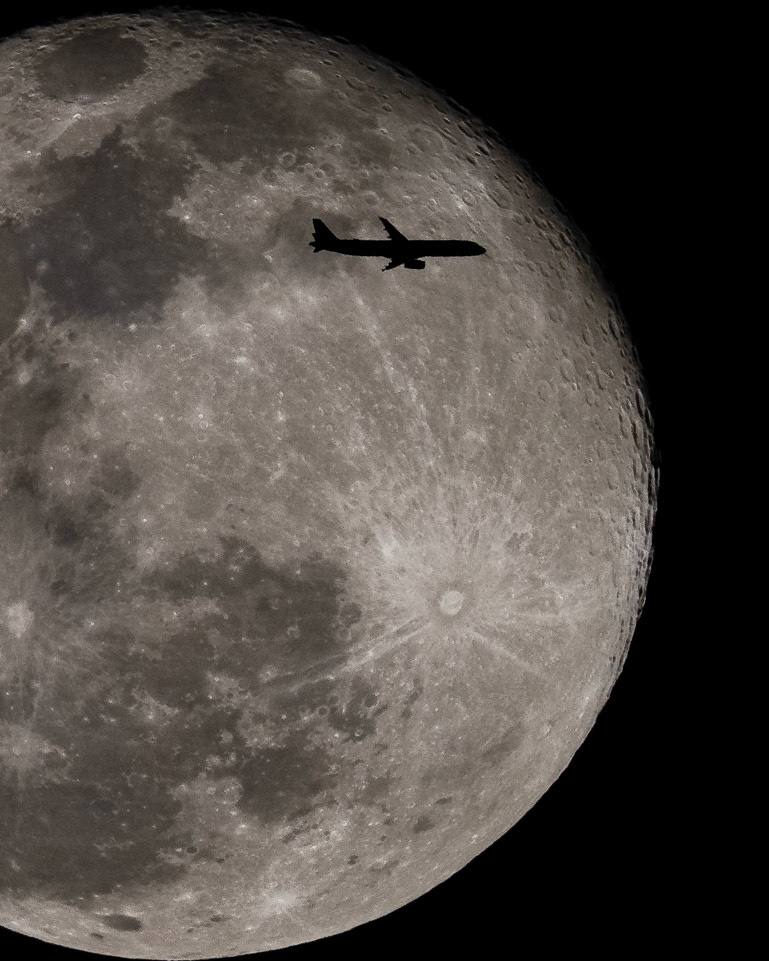
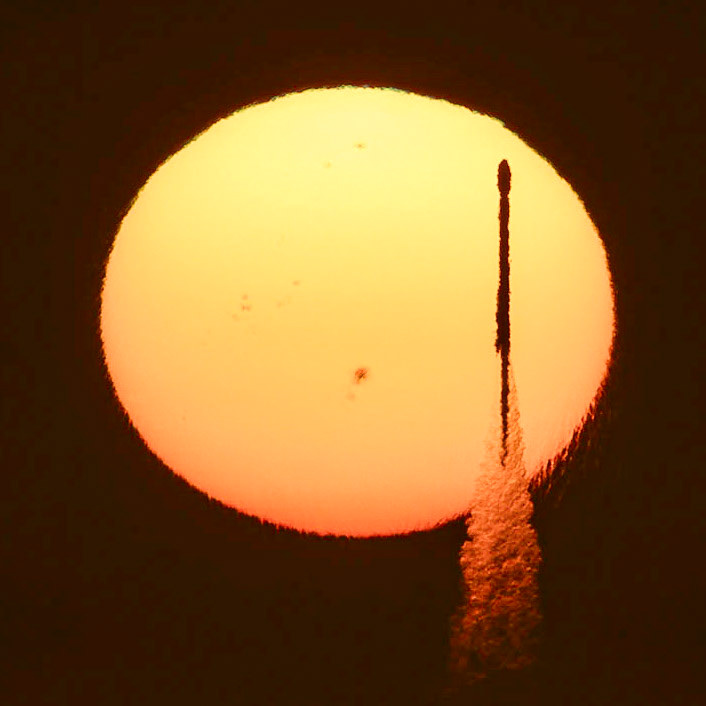
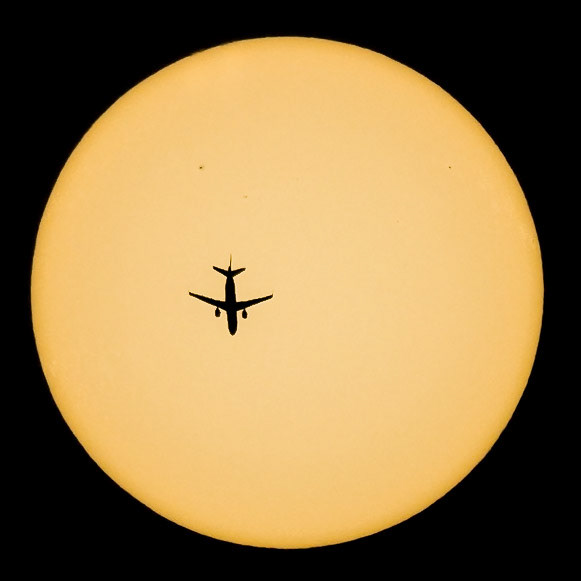
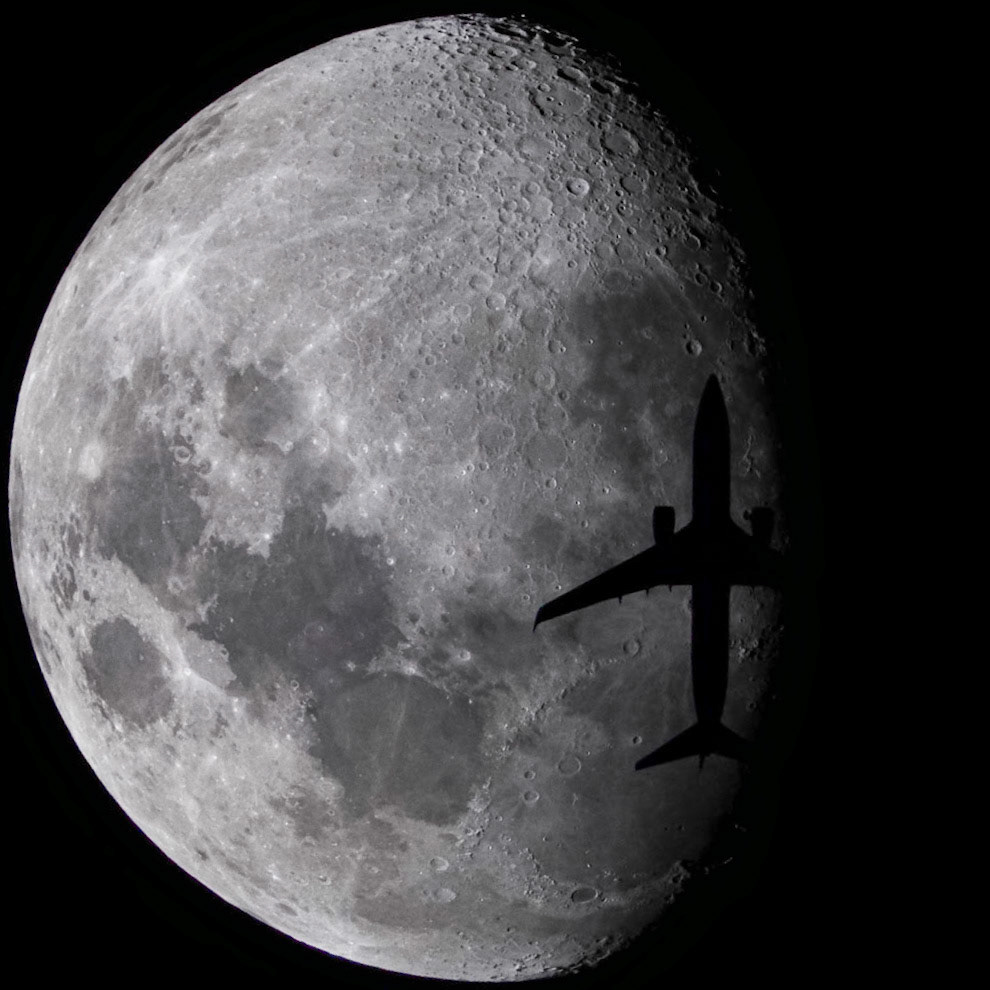
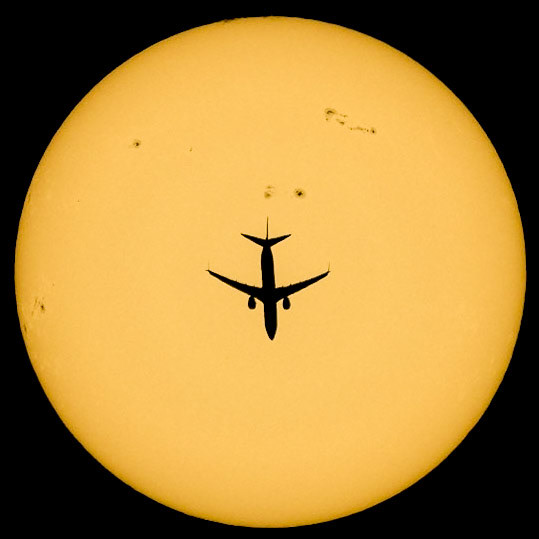
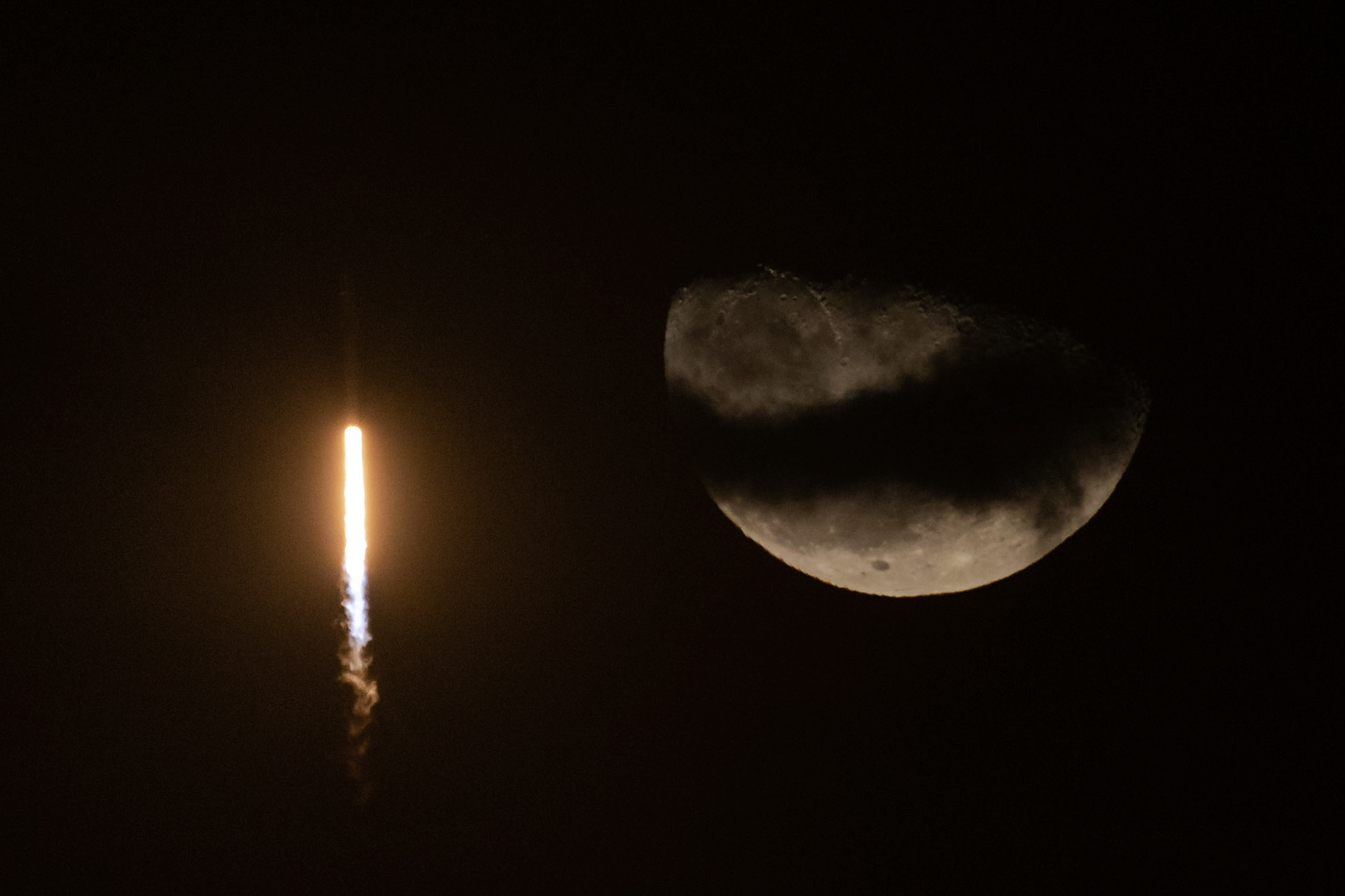
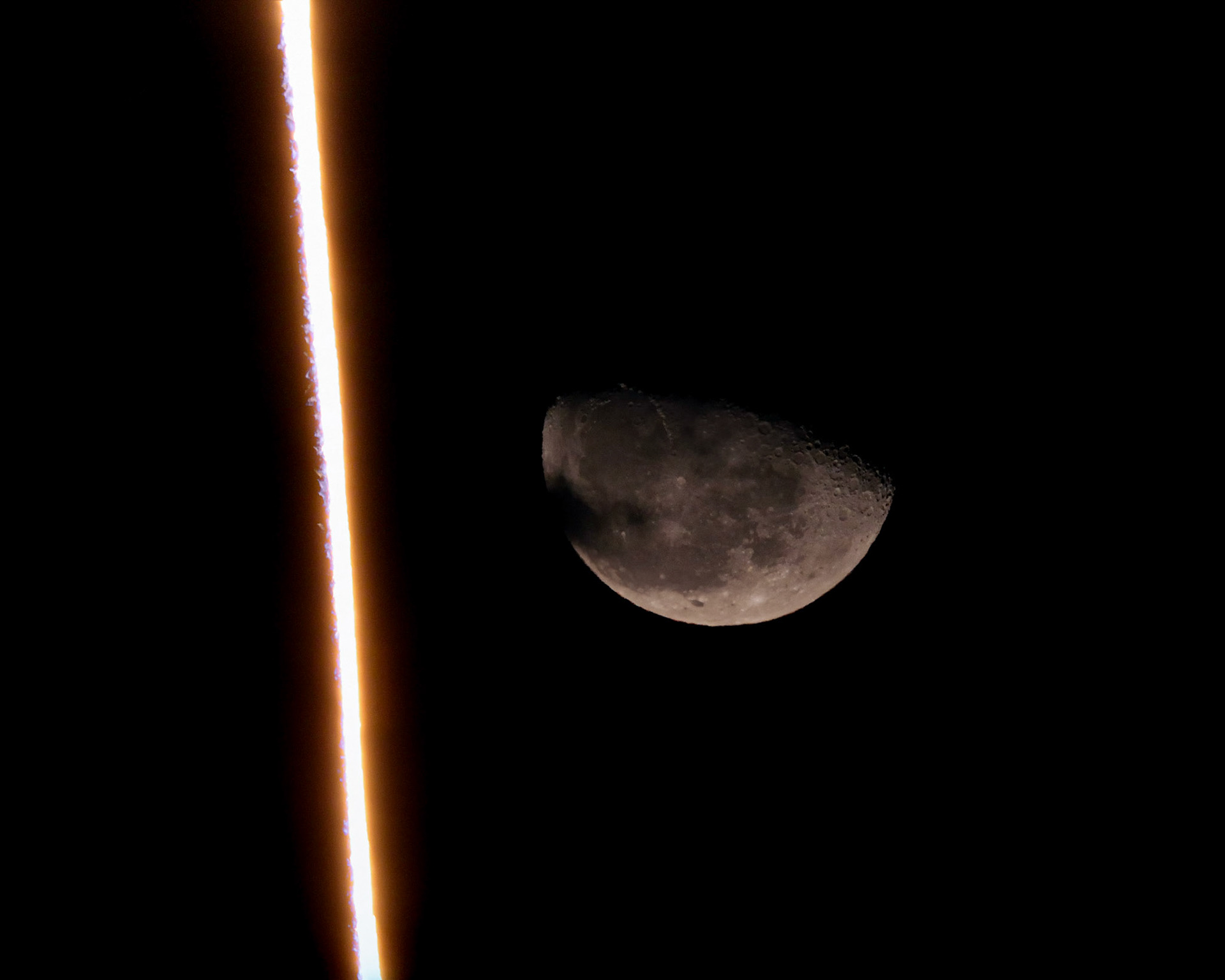
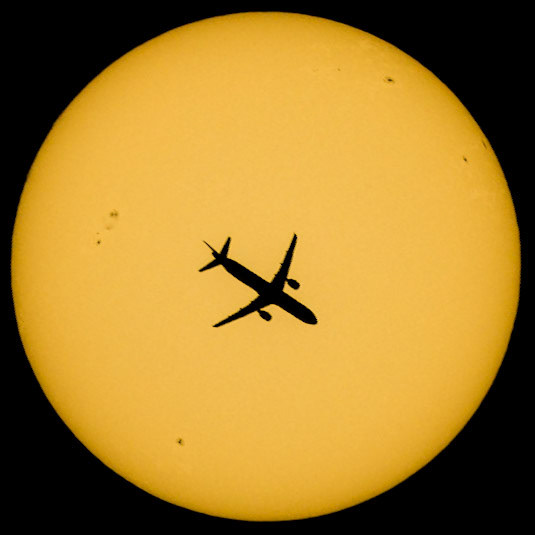
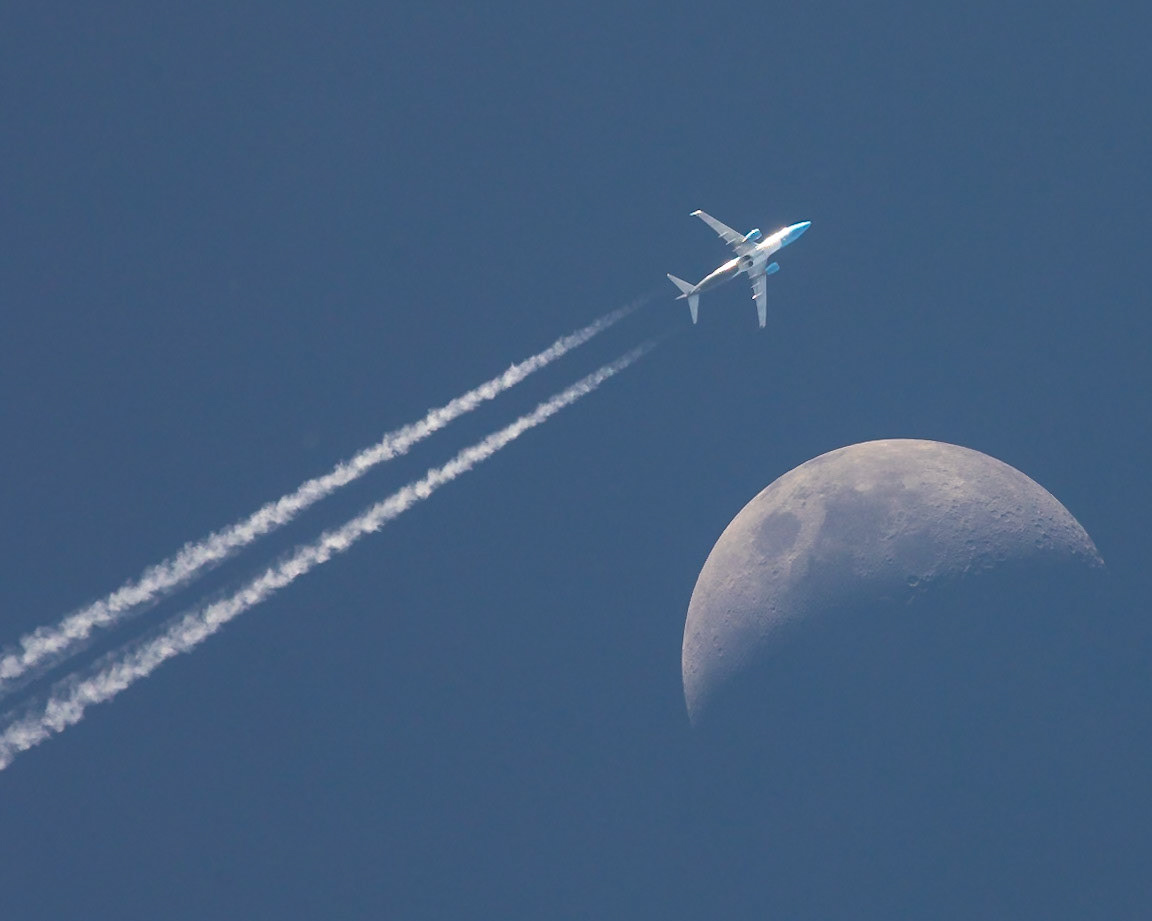
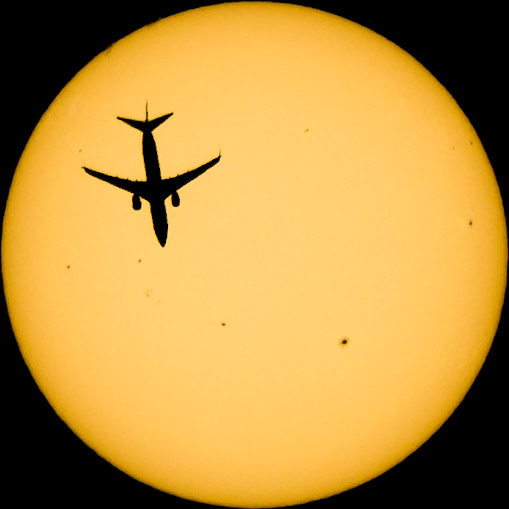
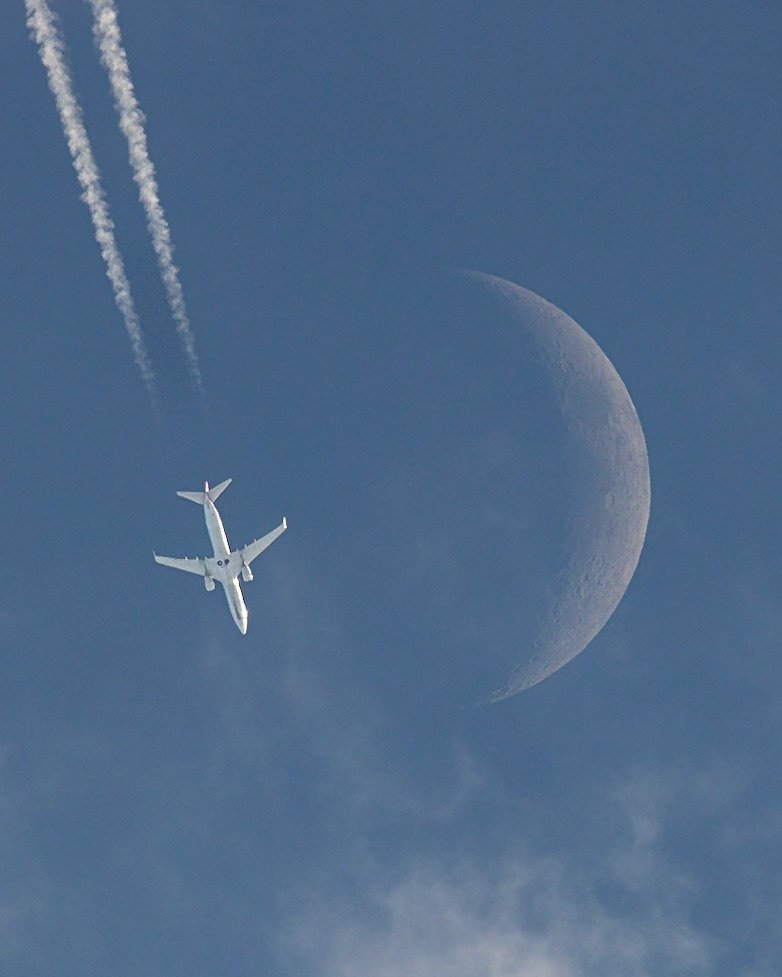
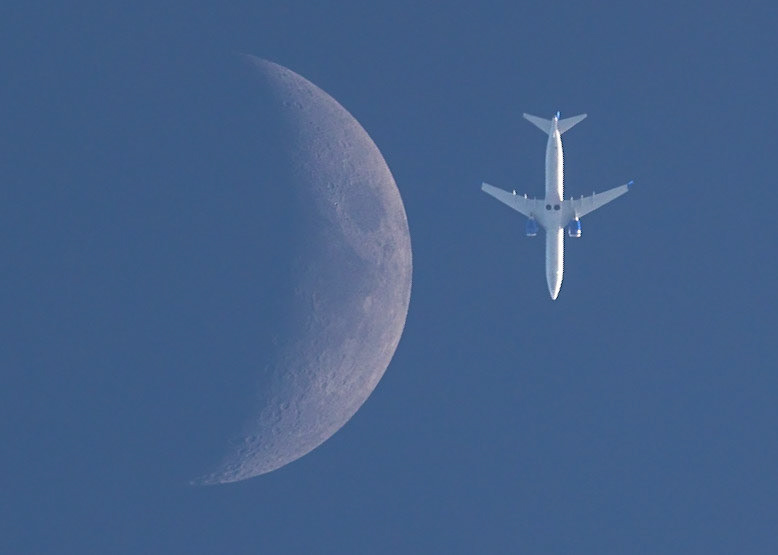
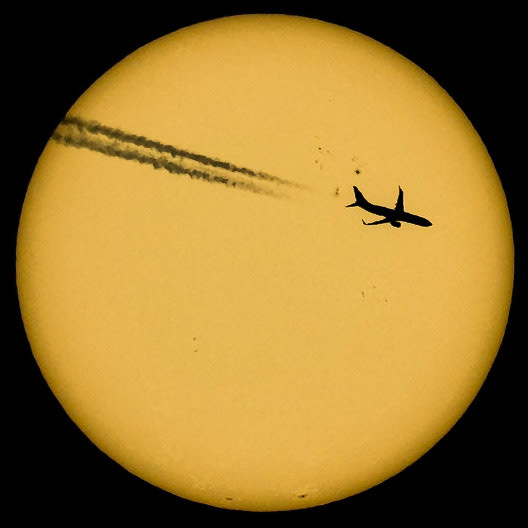
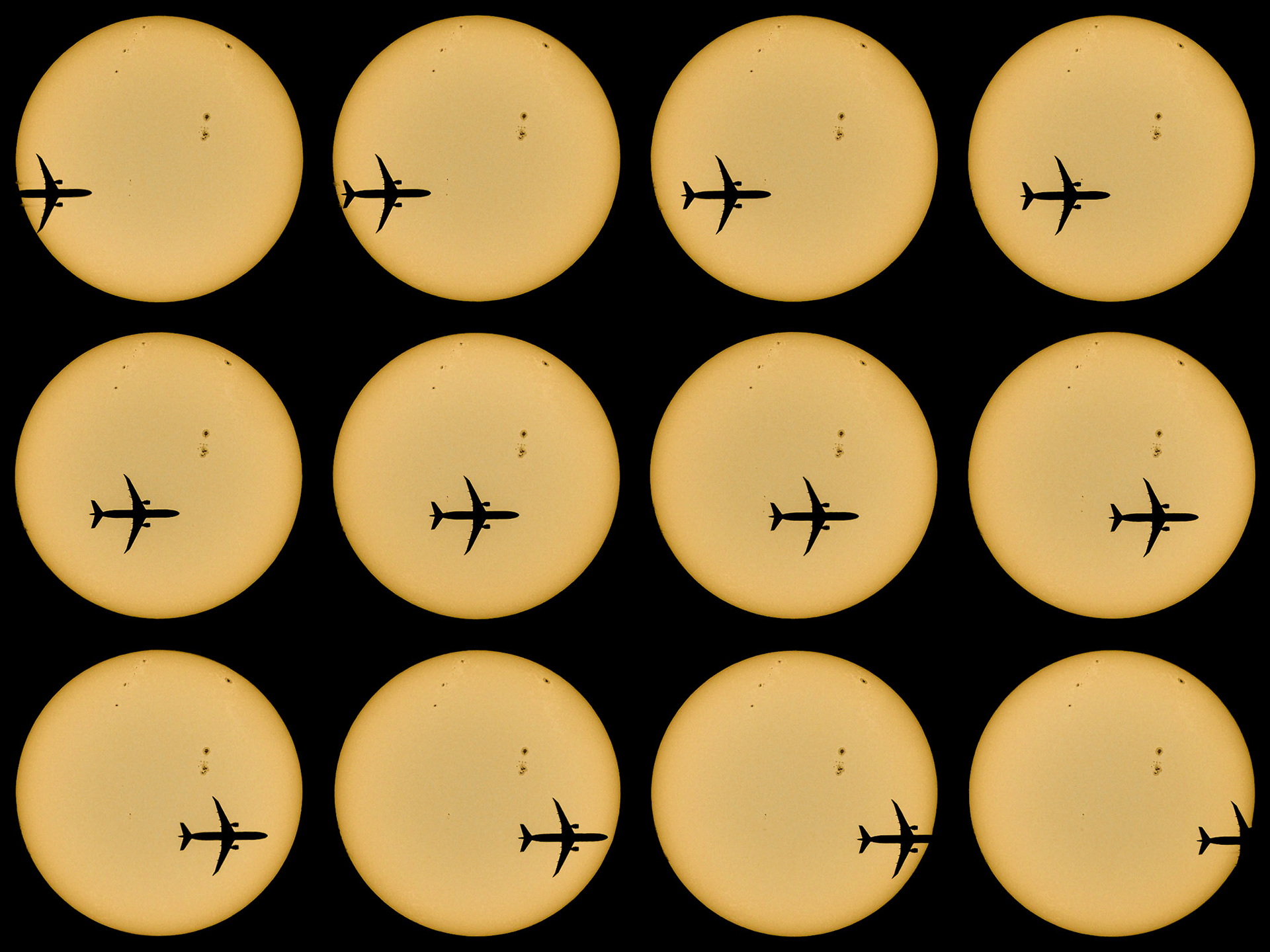
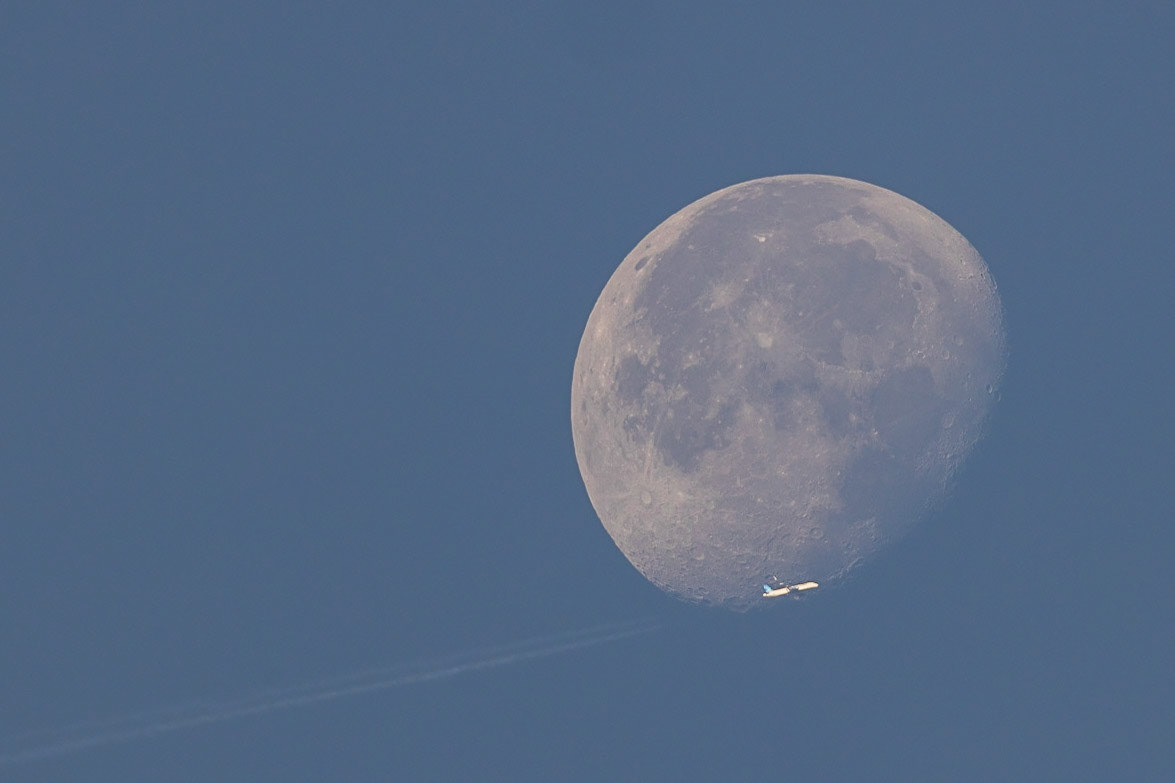
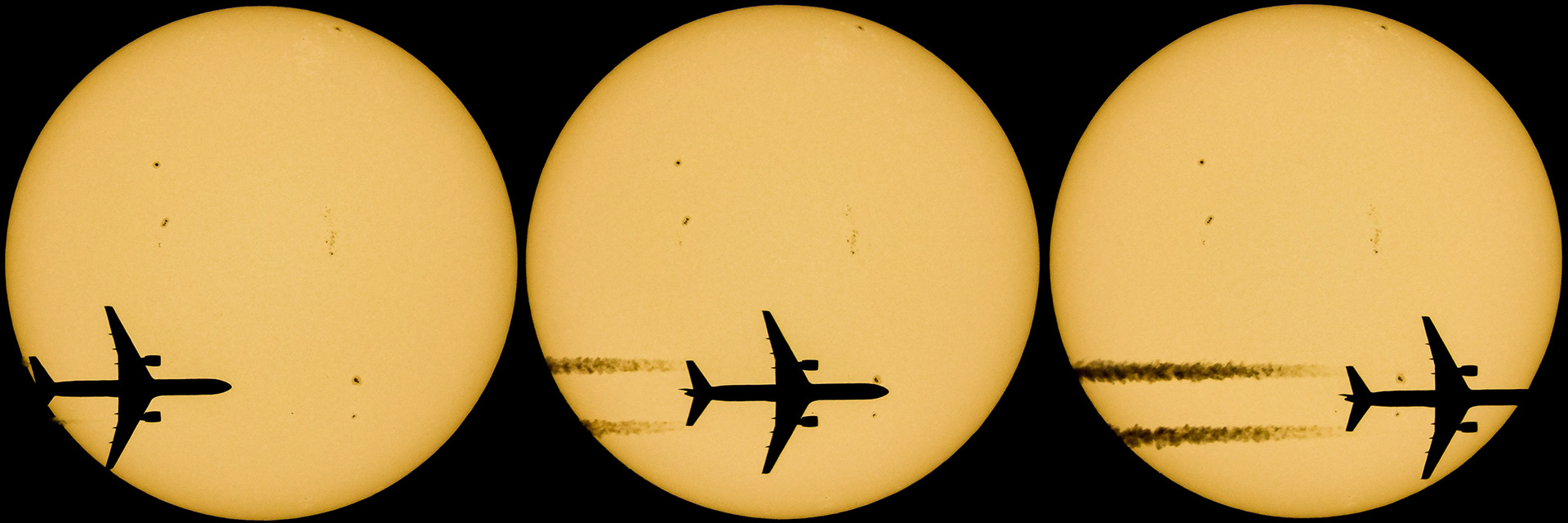
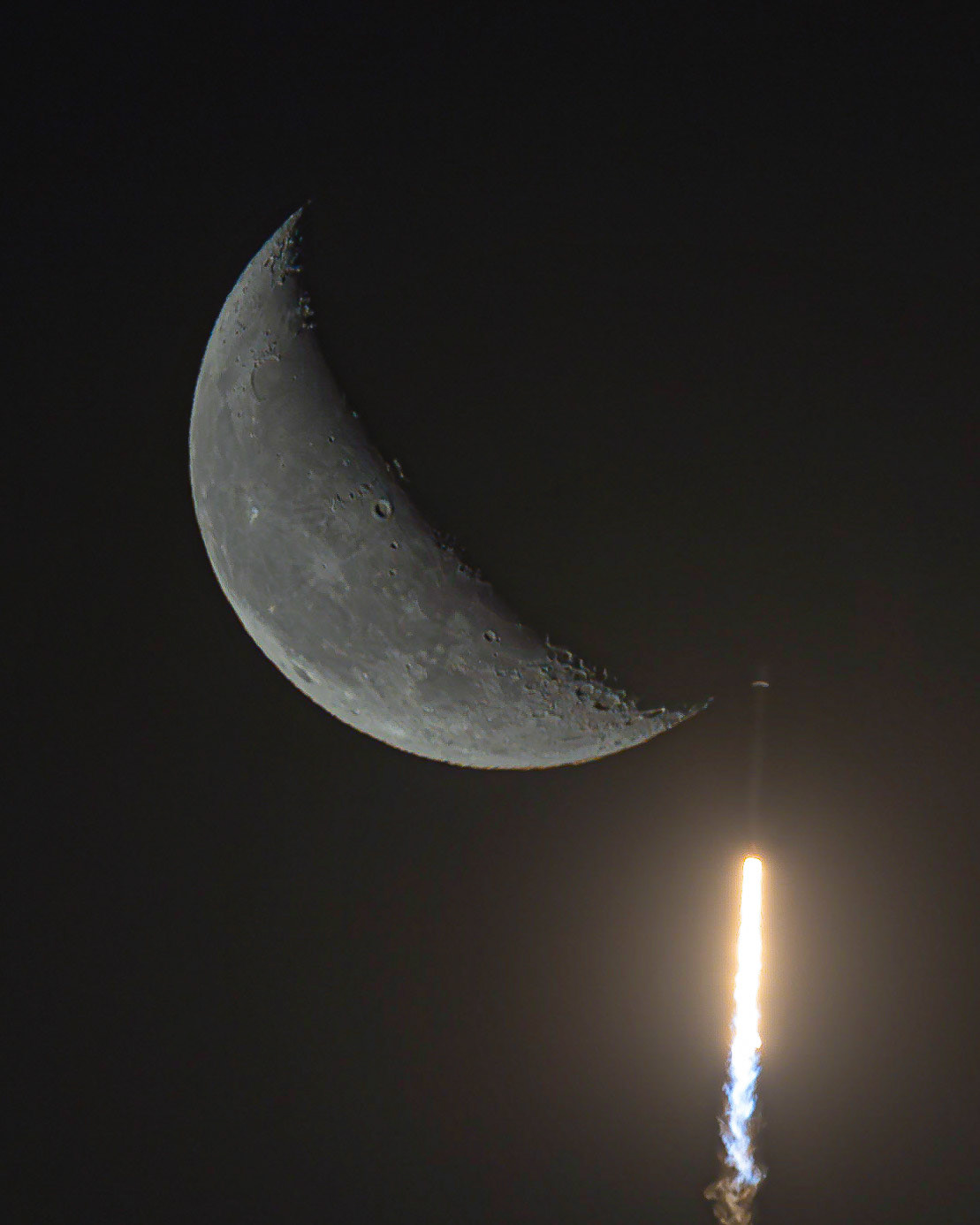
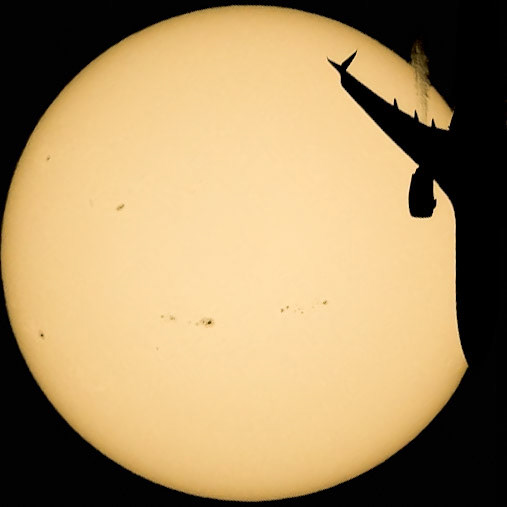
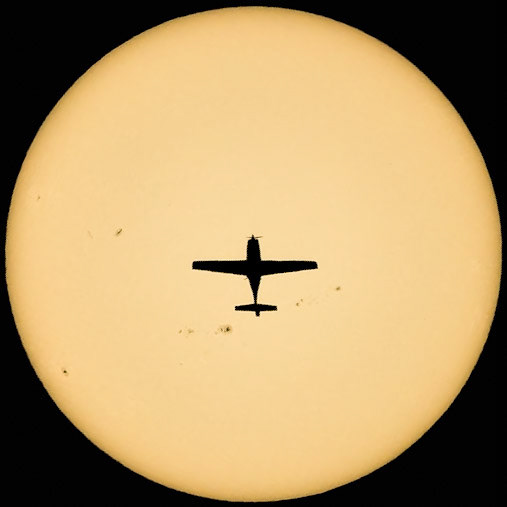
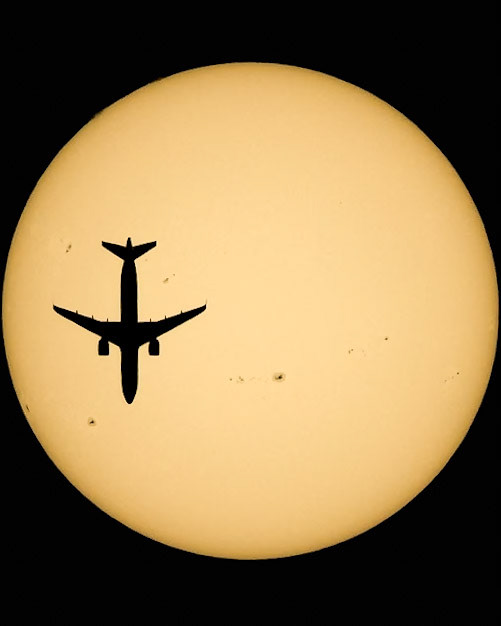
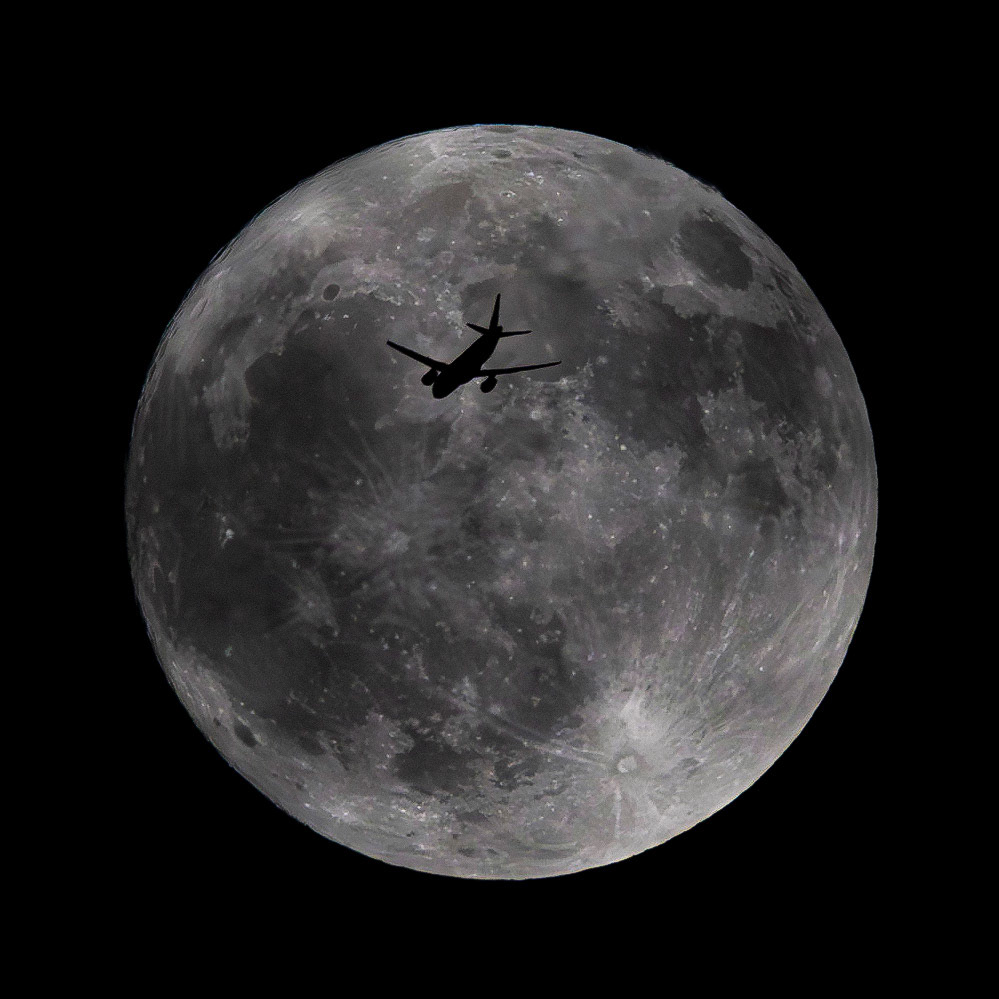
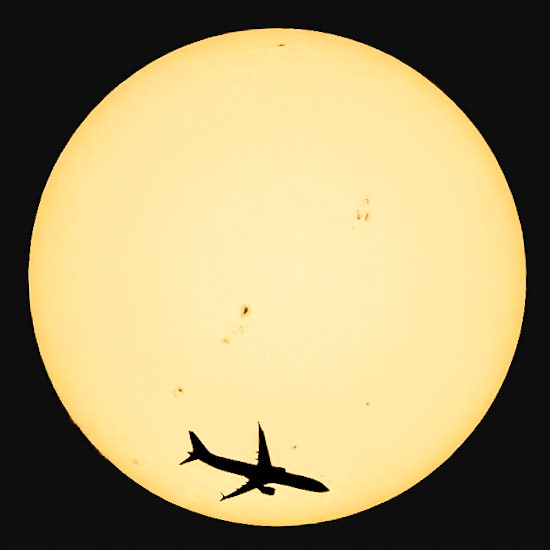
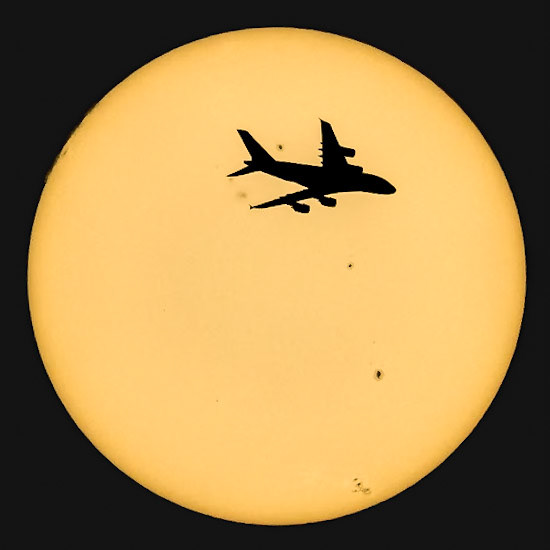
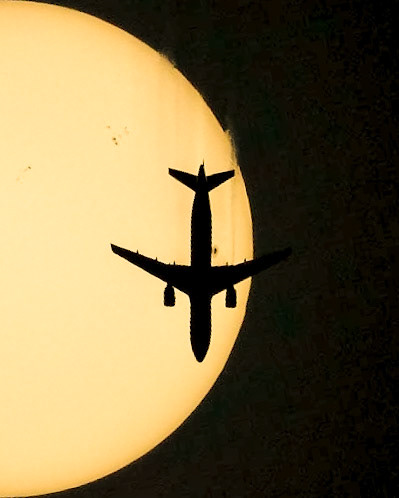
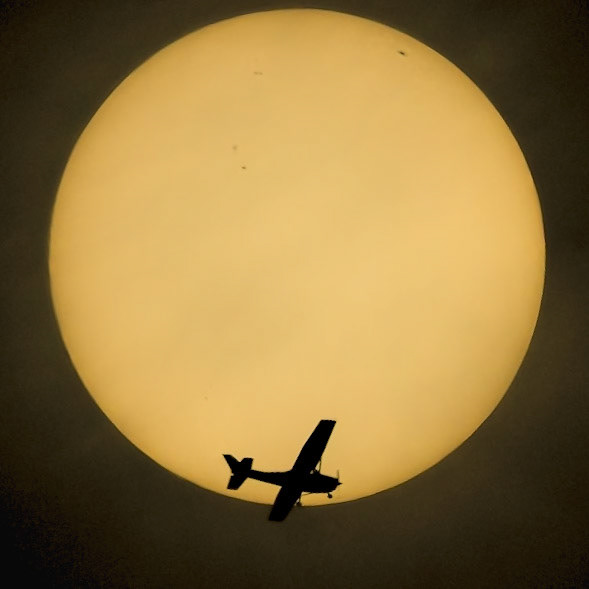
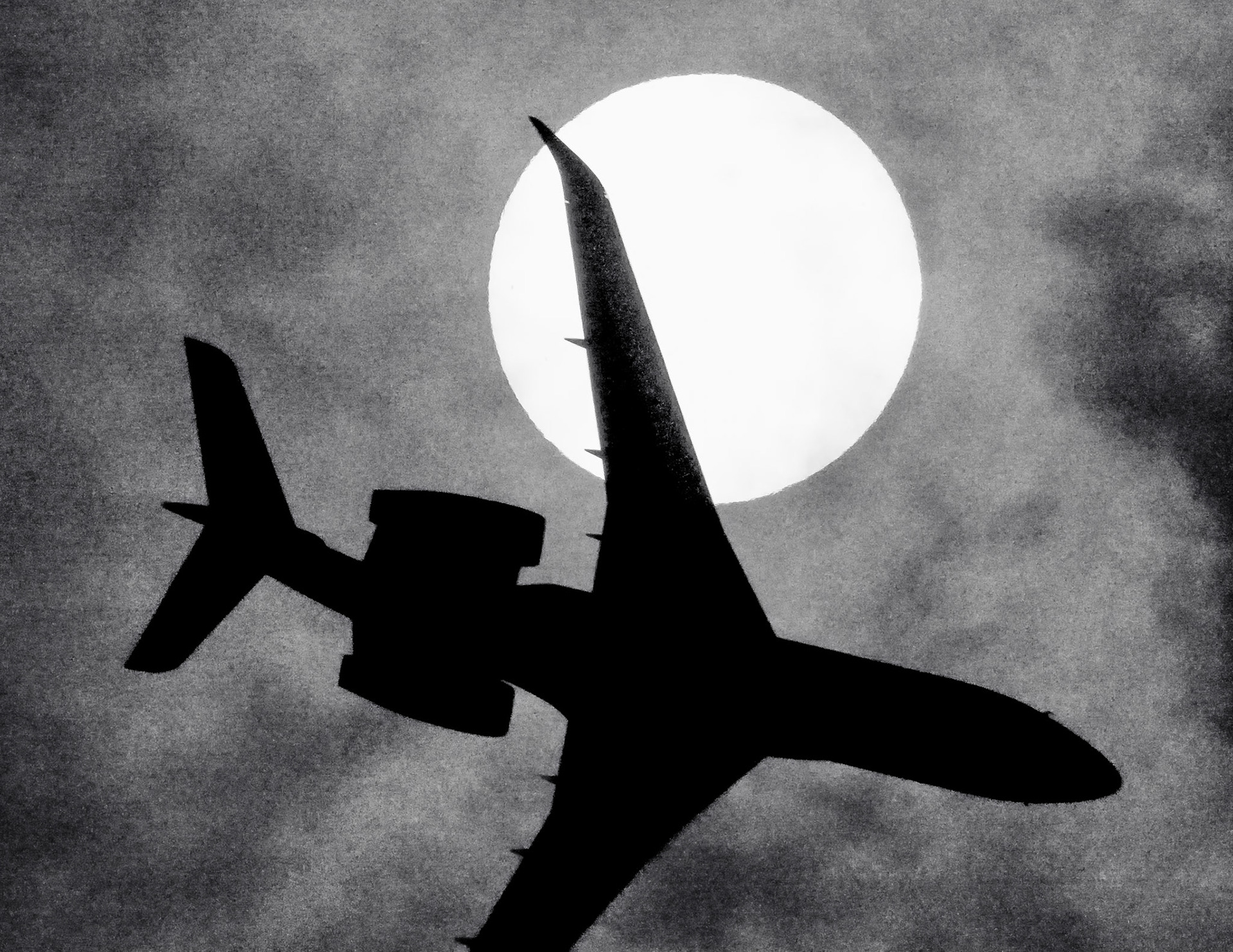
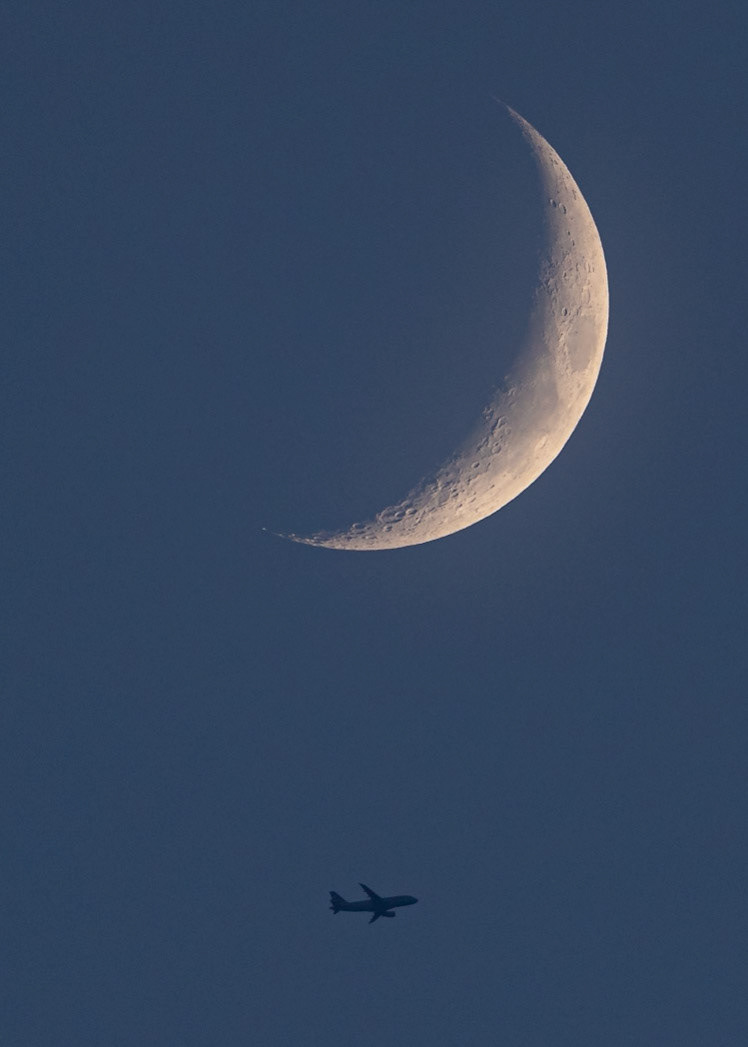
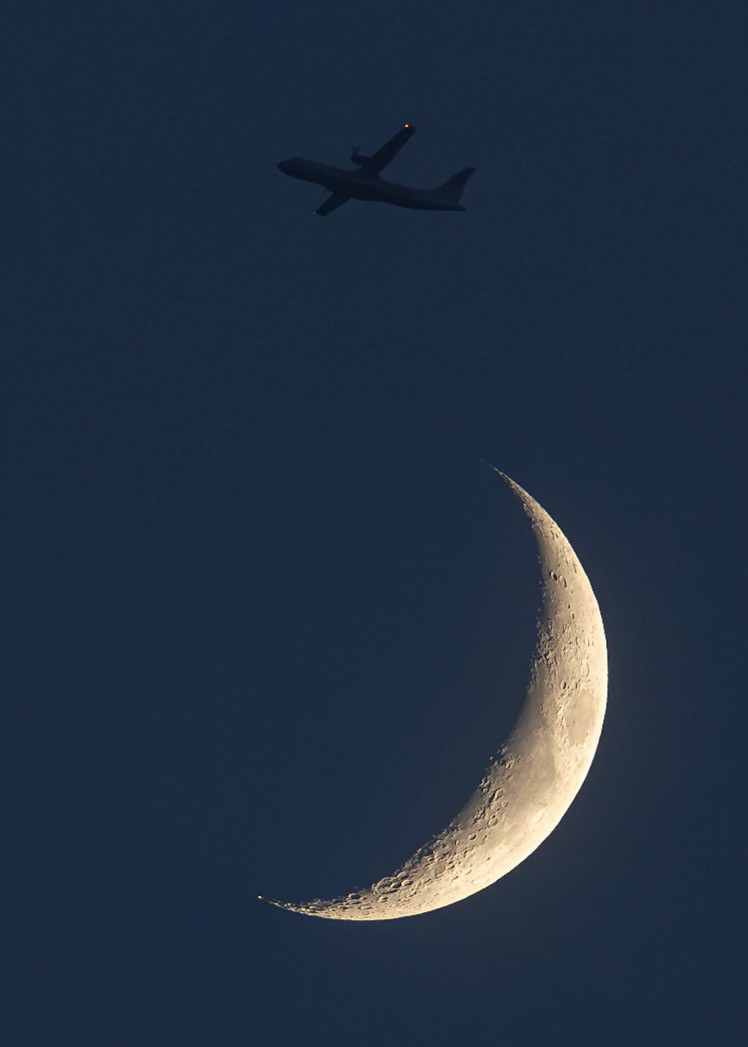
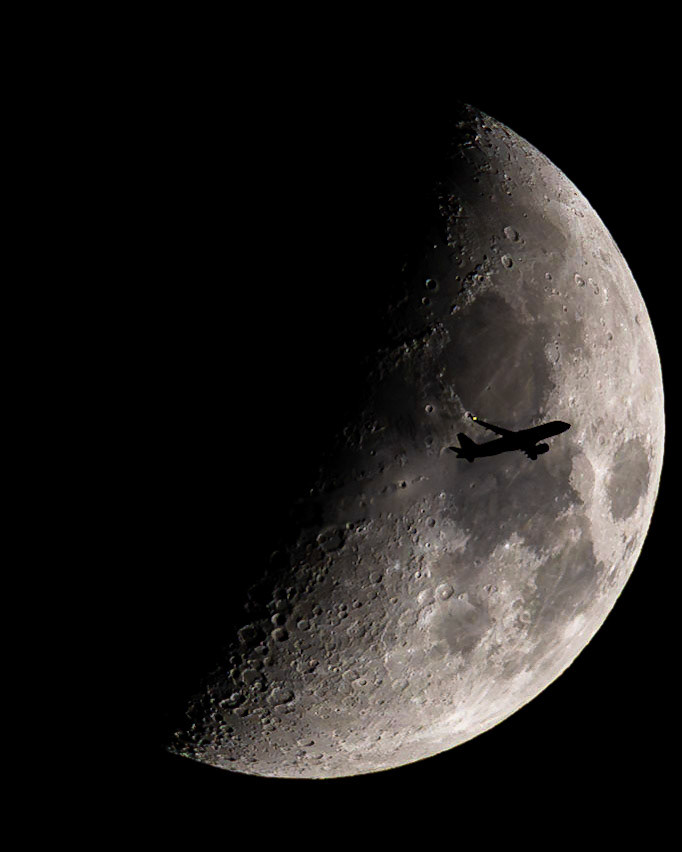
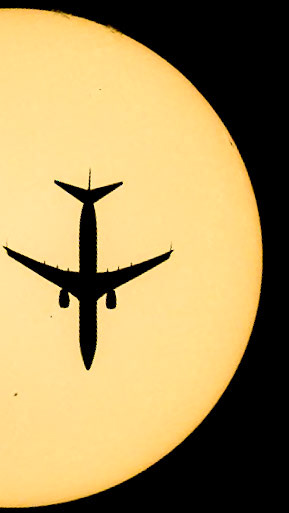
![I've had some success capturing various things passing in front of the Sun and the Moon, but this is the first time I've caught an AtlasV rocket transit, and oh, what an AtlasV it was. Flying with five solid rocket boosters strapped on, the CEO of United Launch Alliance has nicknamed this AtlasV configuration "The Bruiser." It's an apt name.At 8:47 a.m. Sunday, September 10, United Launch Alliance launched "The Bruiser," sending the NROL-107 satellite Silentbarker to orbit. The joint national security mission for the National Reconnaissance Office and the Space Force's Space Systems Command - SSC is reported to be a success, resulting in a "high-priority" payload being delivered "directly to Geosynchronous Orbit." (Source: ULA)With the help of flightclub.io, I mapped out 12 possible shooting locations all over Titusville, all chosen with the hope of getting this shot at any point through the launch window. I traveled light; usually, I set 2 or more cameras, but for this launch, it was a single-camera operation. For the first spot for the start of the launch window, there was a multi-story building one block away and between me and the pad. This meant I couldn't see the rocket until it cleared the building; at that point, it was too close to the Sun to see it without welding goggles. So, at T-0, with the Sun in the viewfinder low and to the left of the center, I pressed record (8k, ftw) and watched the camera screen. I had calculated the transit would occur ~45 seconds in flight, and that's an excruciating amount of time to wait. At T+47 seconds, I was ready to accept failure, but just then, a dark line zipped across the right side of the Sun, and the plume that followed was unmistakable. My head exploded. When I could sit and look at the scene, for the briefest of moments, "The Bruiser" looked like it made the Sun melt, both as the rocket approached and passed by. You can see the activity in the series below, or check out the full-motion and slowed video, linked below. It's well-explained by Dr. Philip Metzger on the Twitter, aka X.com: "The refraction of light is caused by variations in density of the air. Density can be varied by either pressure or temperature (or both). You can see both effects in this video. [Near the top of the rocket] are shockwaves which vary both the pressure and temperature, so light bends in the shockwave. Previously dark areas can be bright or previously bright areas can be dark depending on where the bent light came from." He also explains the effect on the Sun as the rocket passes by as "variation of the temperature around the plume causing variation in air density, also bending the light."And Dr. Thomas Zurbuchen put it very elegantly: "Want a space pic which includes solar activity, advanced aerodynamics, and a rocket all at once? Look no further - Mike Seeley has got it". TL;DR: The Bruiser and the Sun walk into a bar...Video (preferably watch in 4k): https://youtu.be/ByVwk-xCaKA?si=dPi2luiVSxwOP8lR](https://cdn.myportfolio.com/d257dd5a0401b85c4264394cc2043d67/144b0166-e4cd-4134-9f28-d5e07a33d7eb_rw_600.jpg?h=41867a20f8a33119d691319cefb9ced4)
